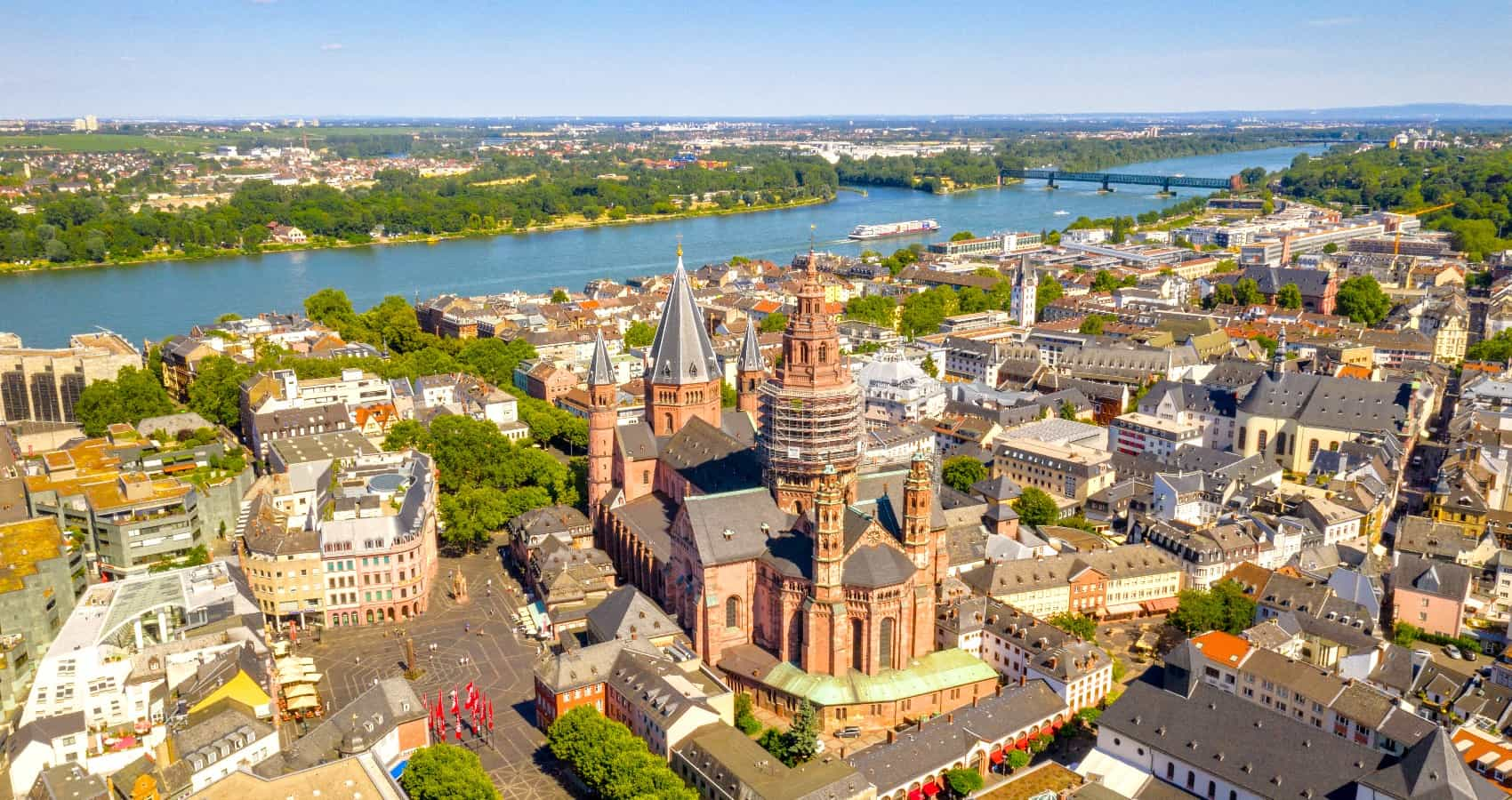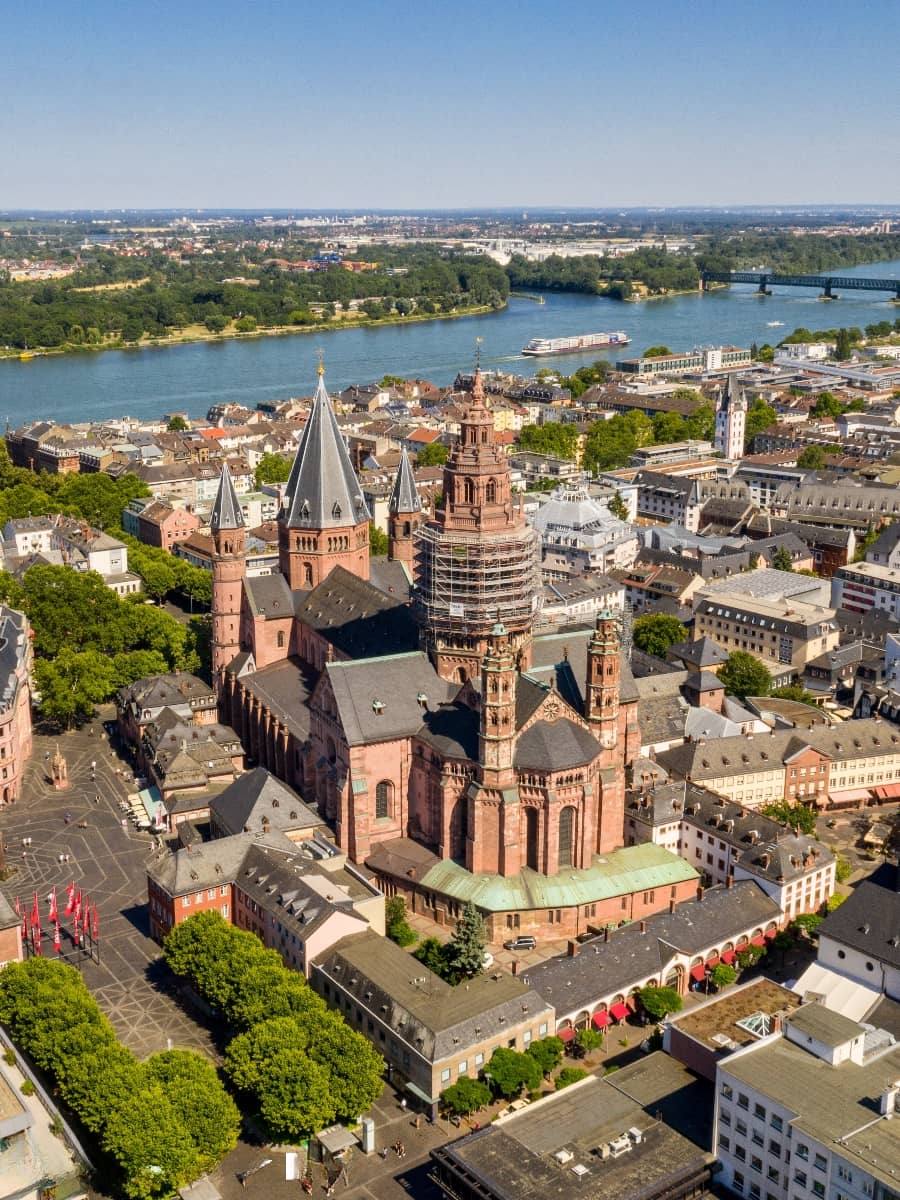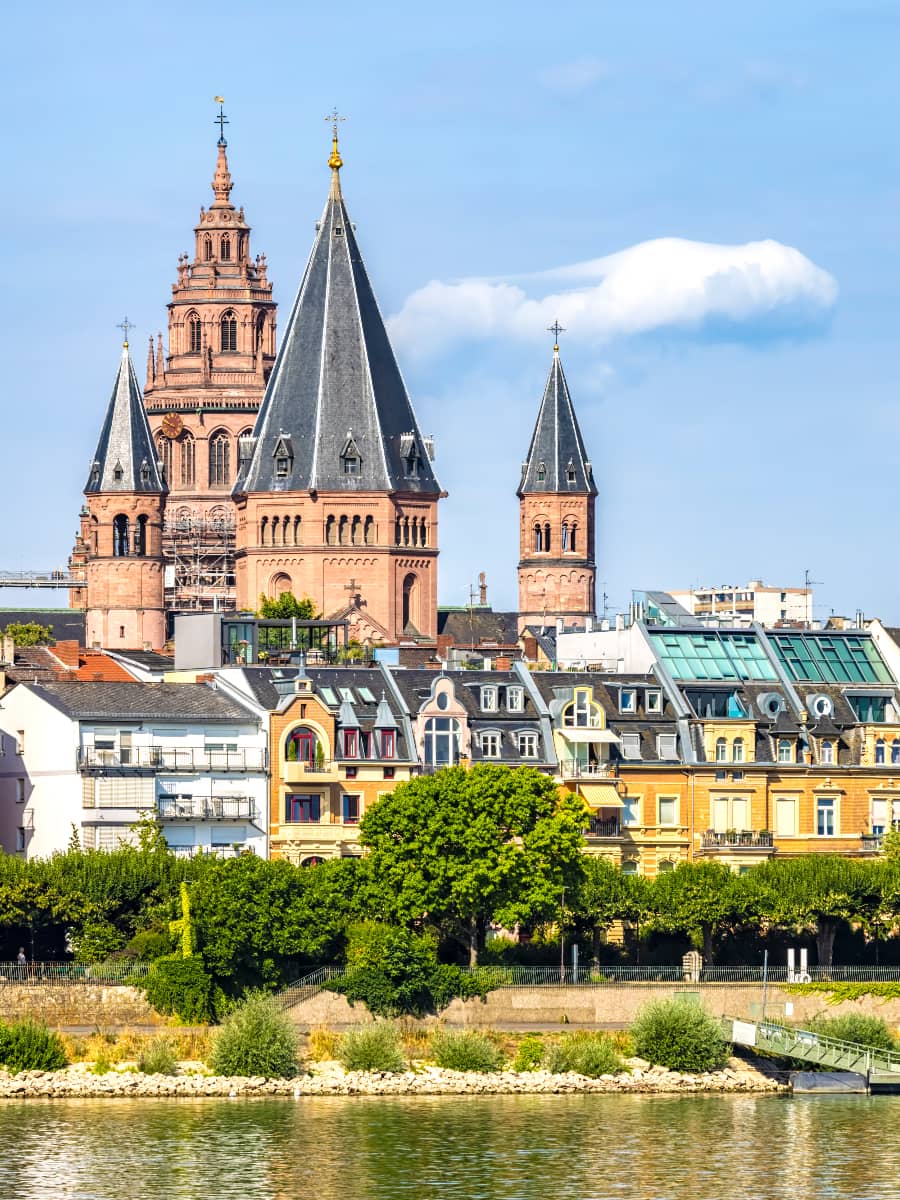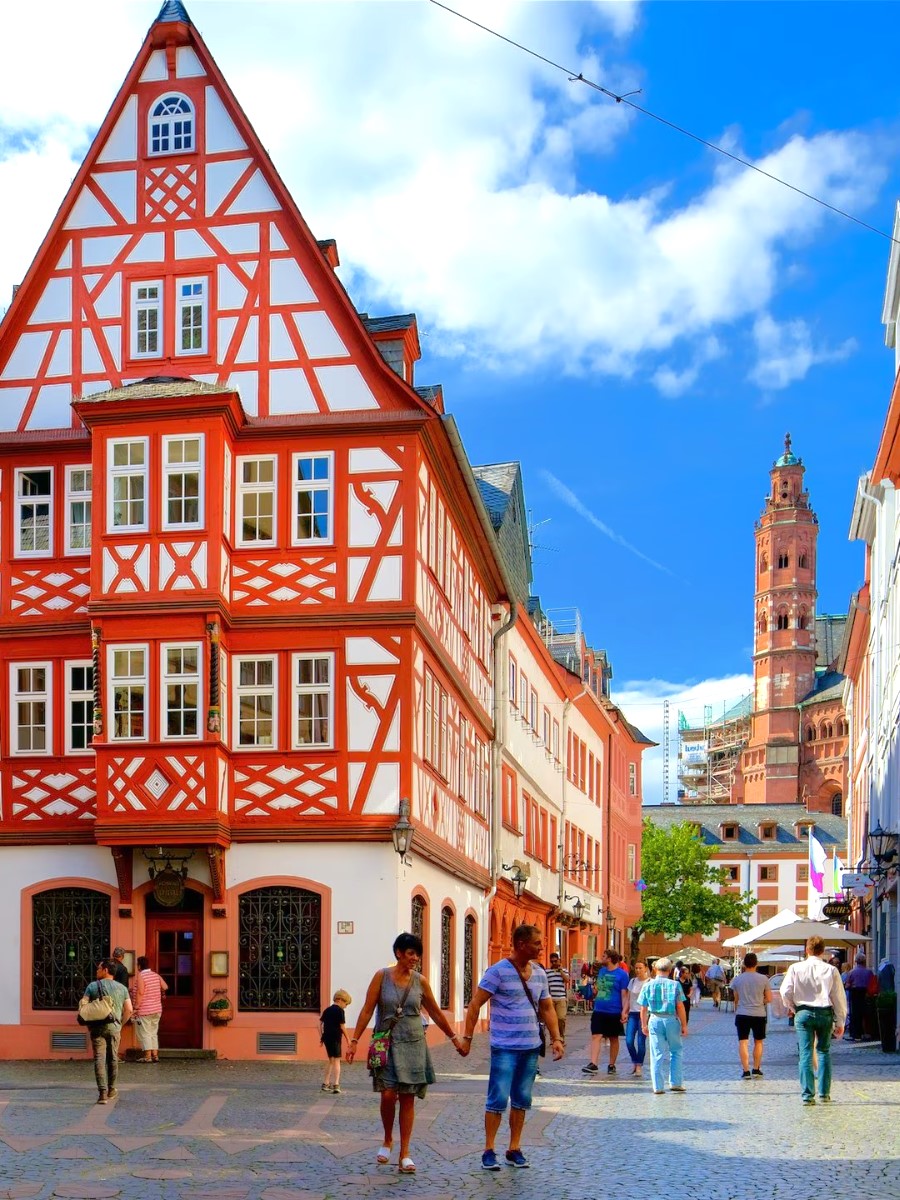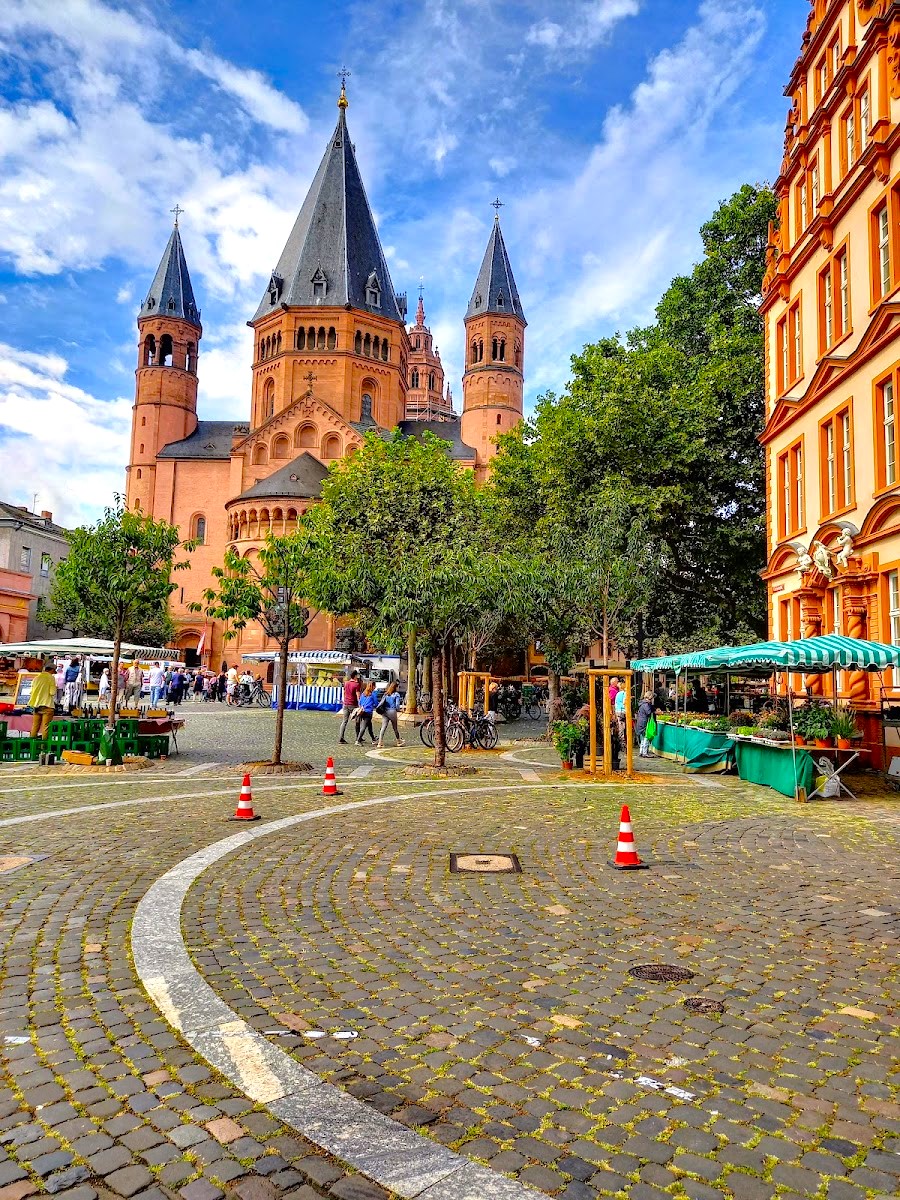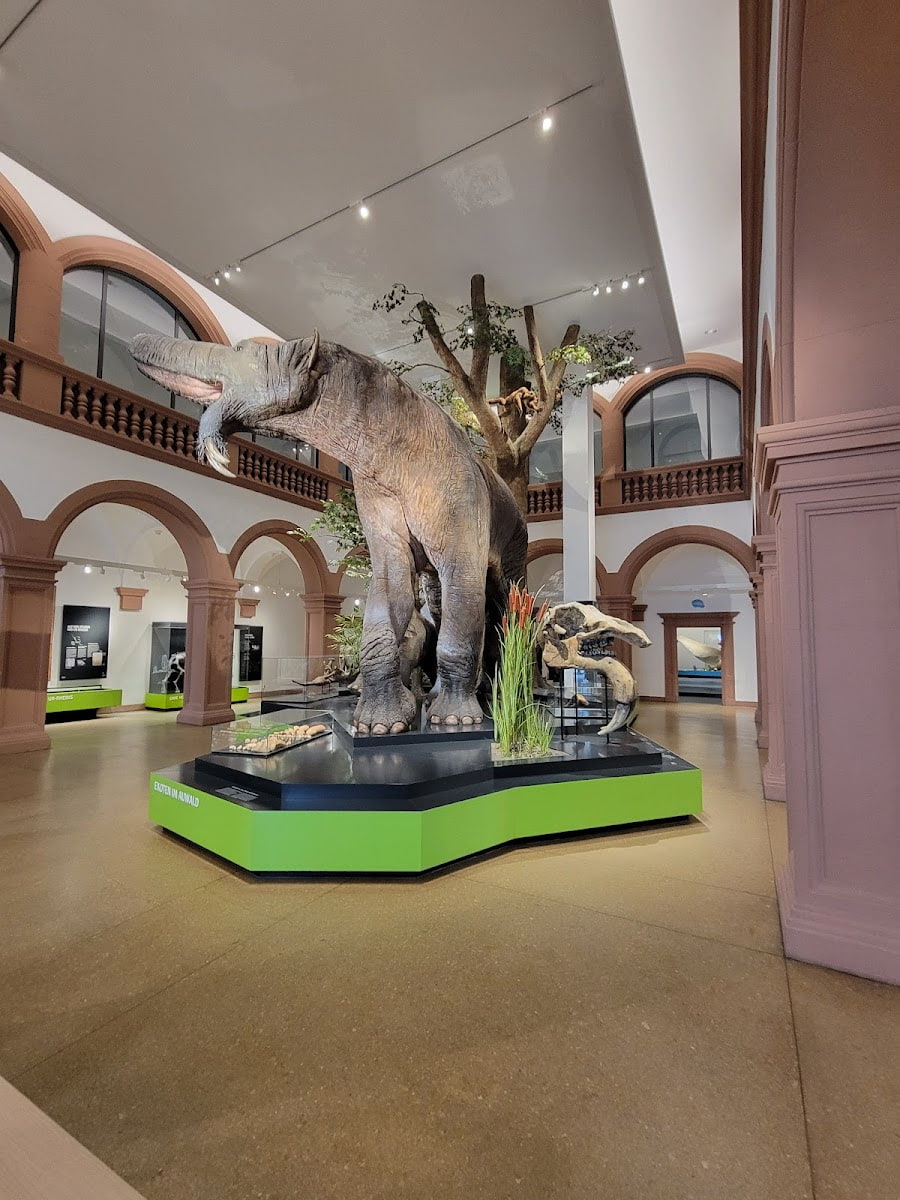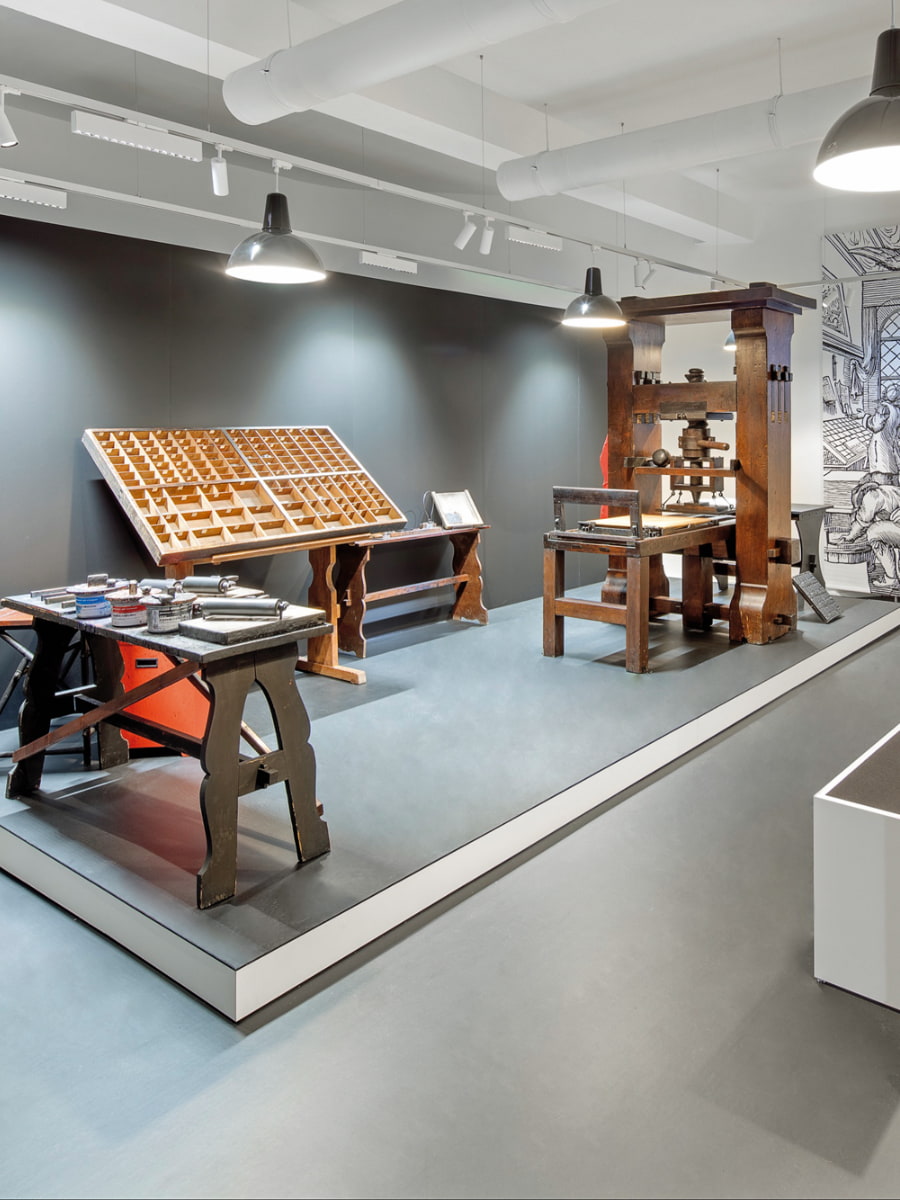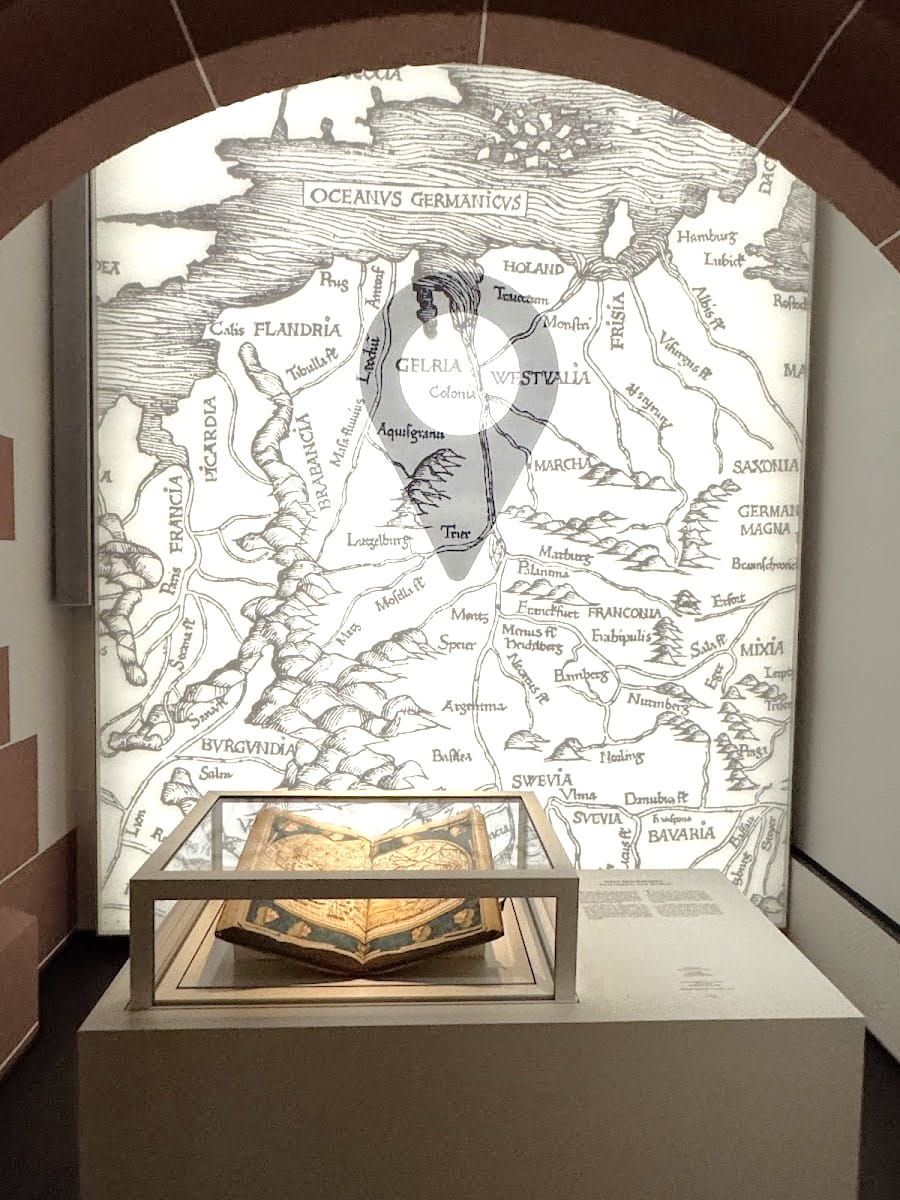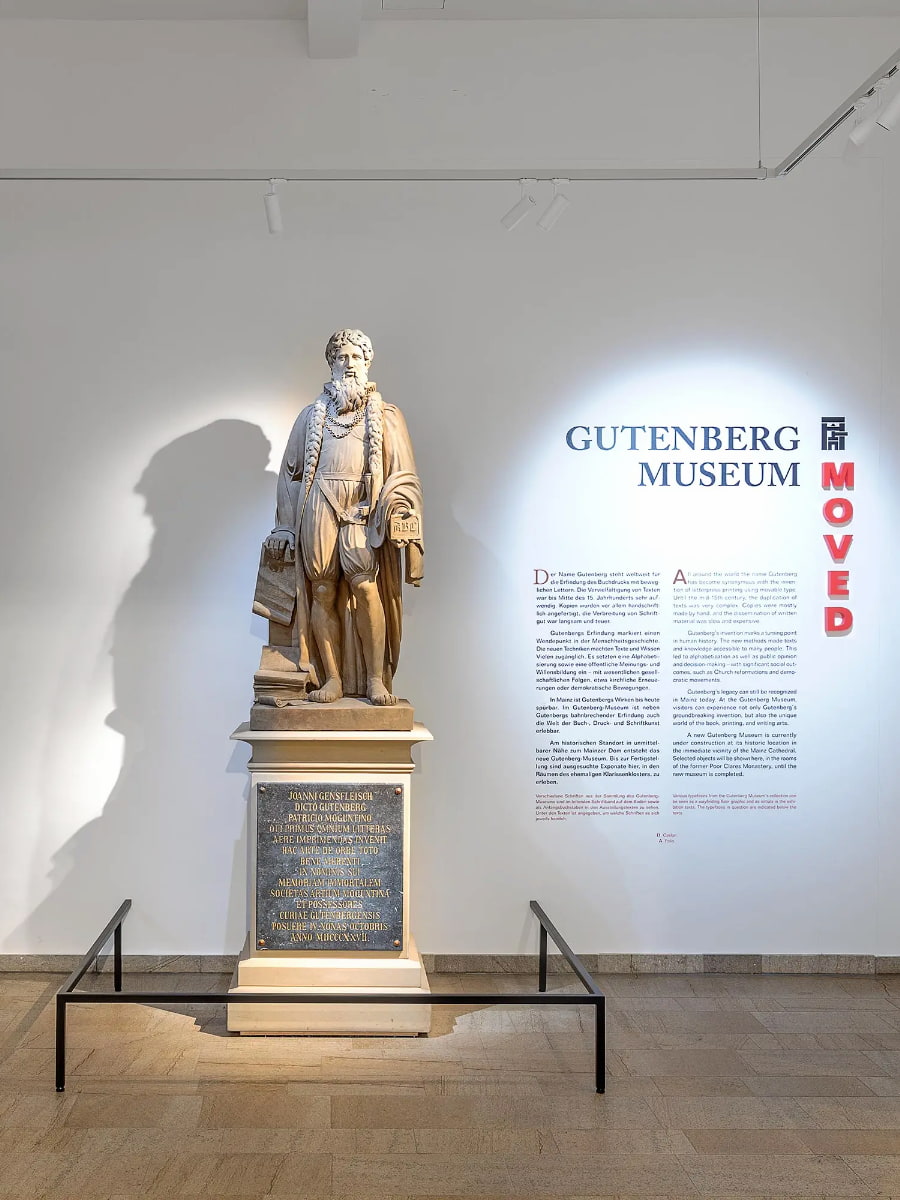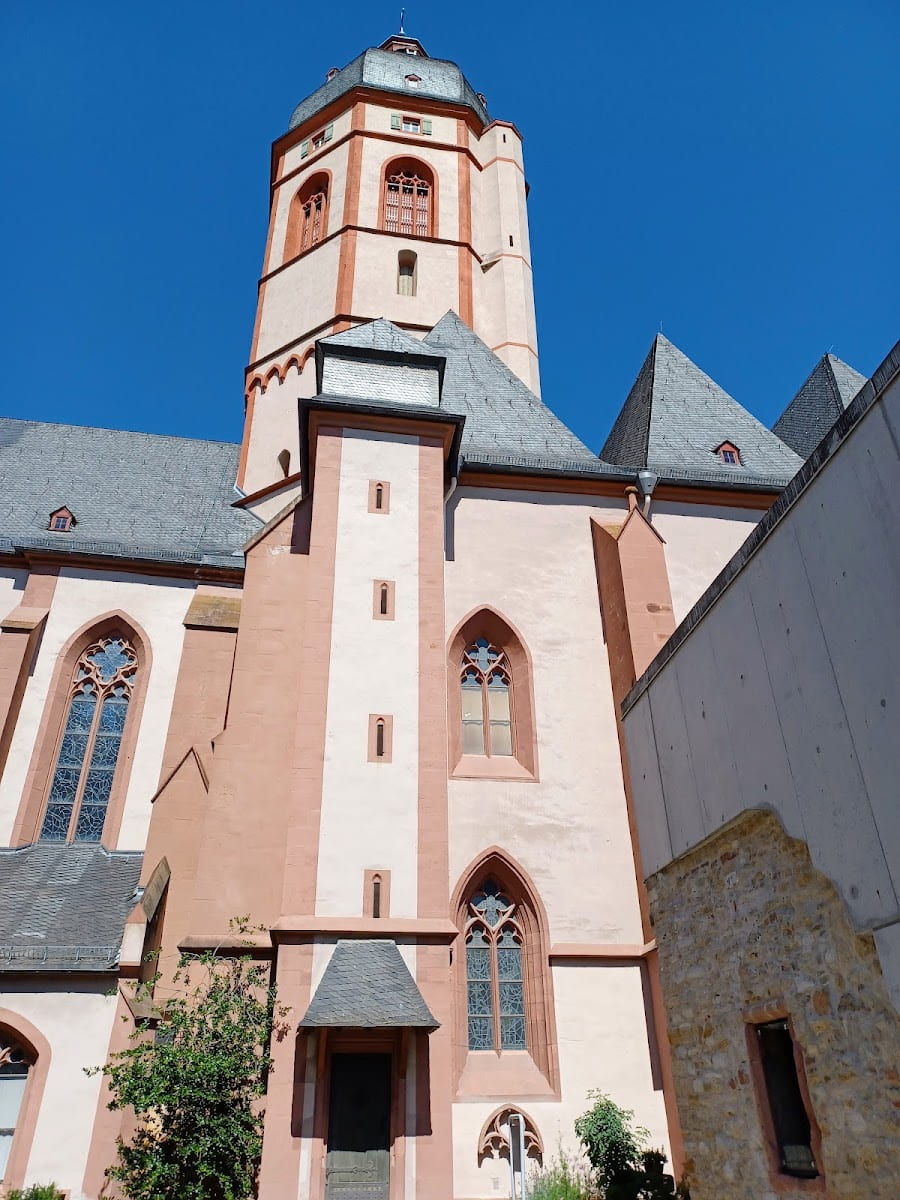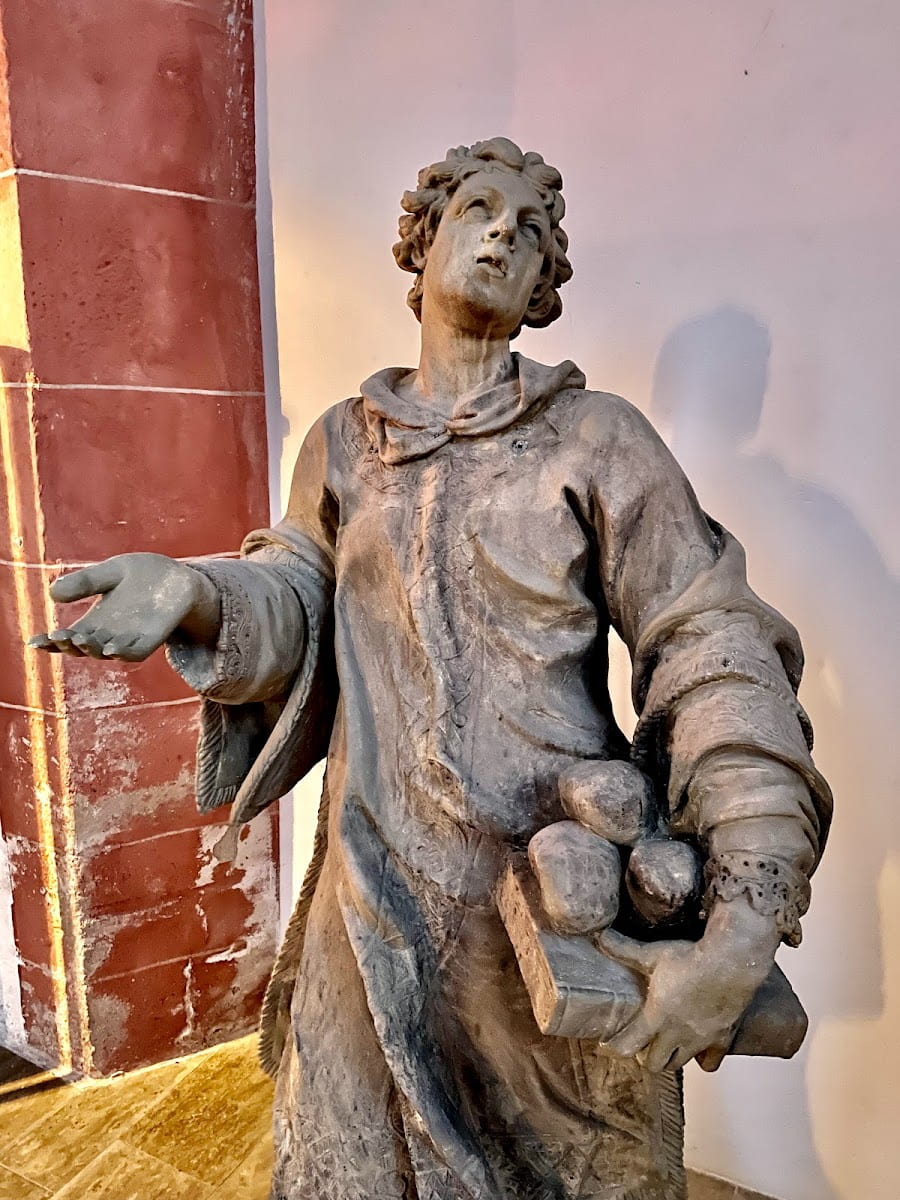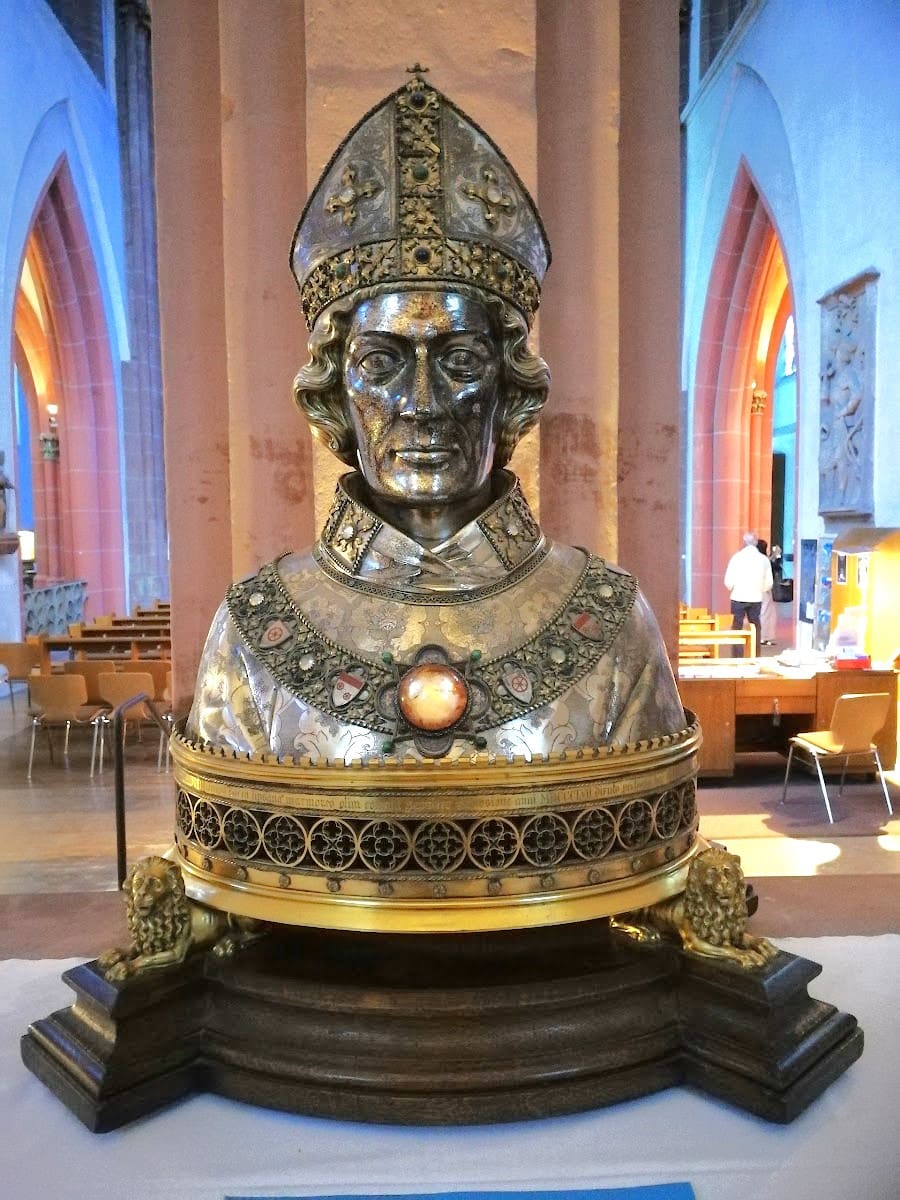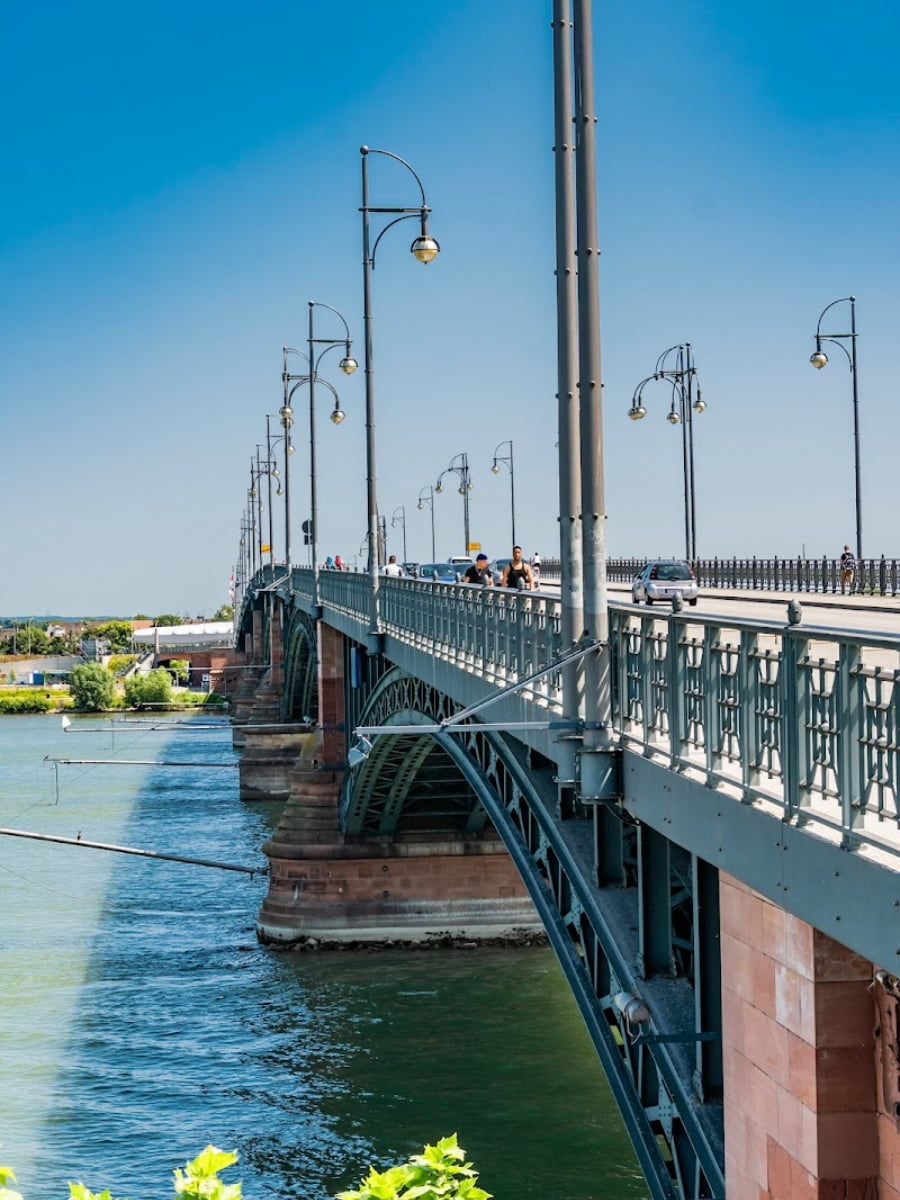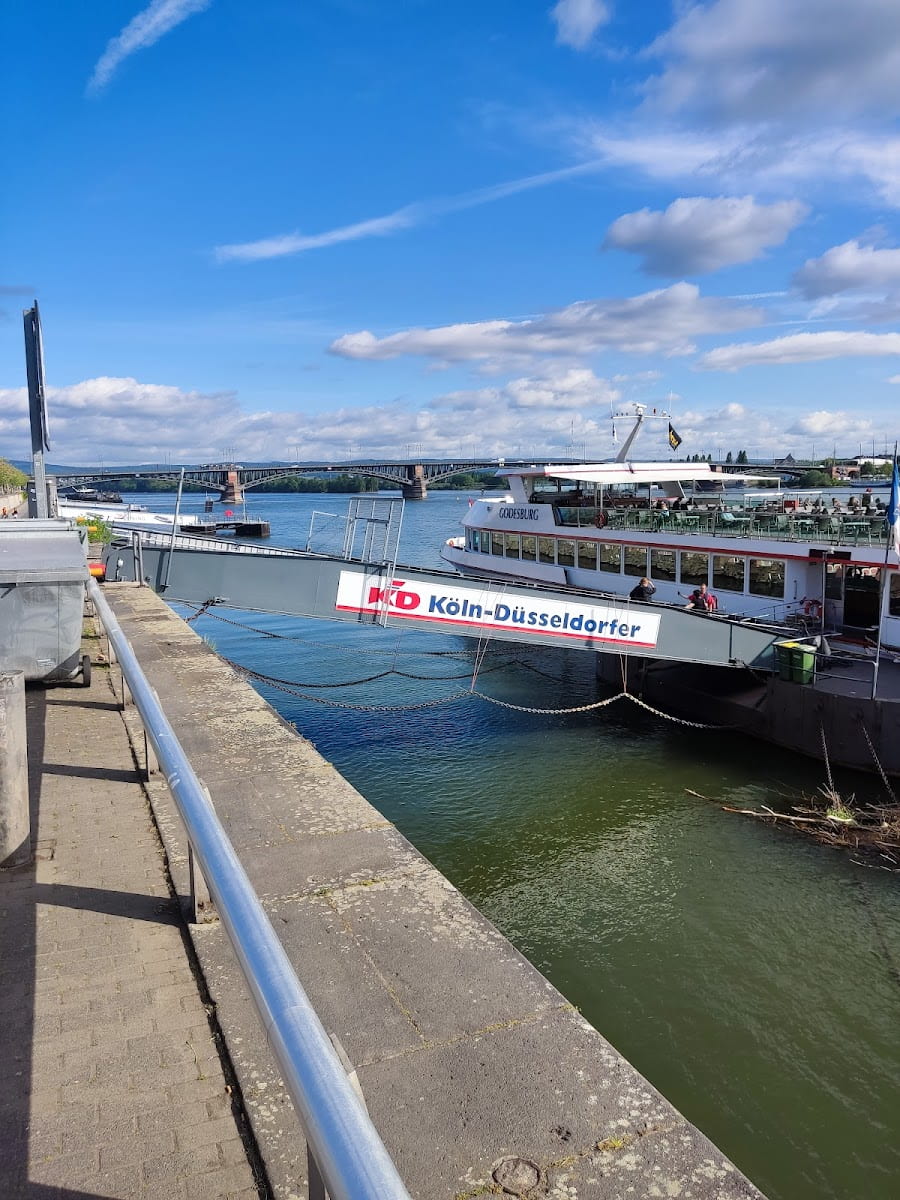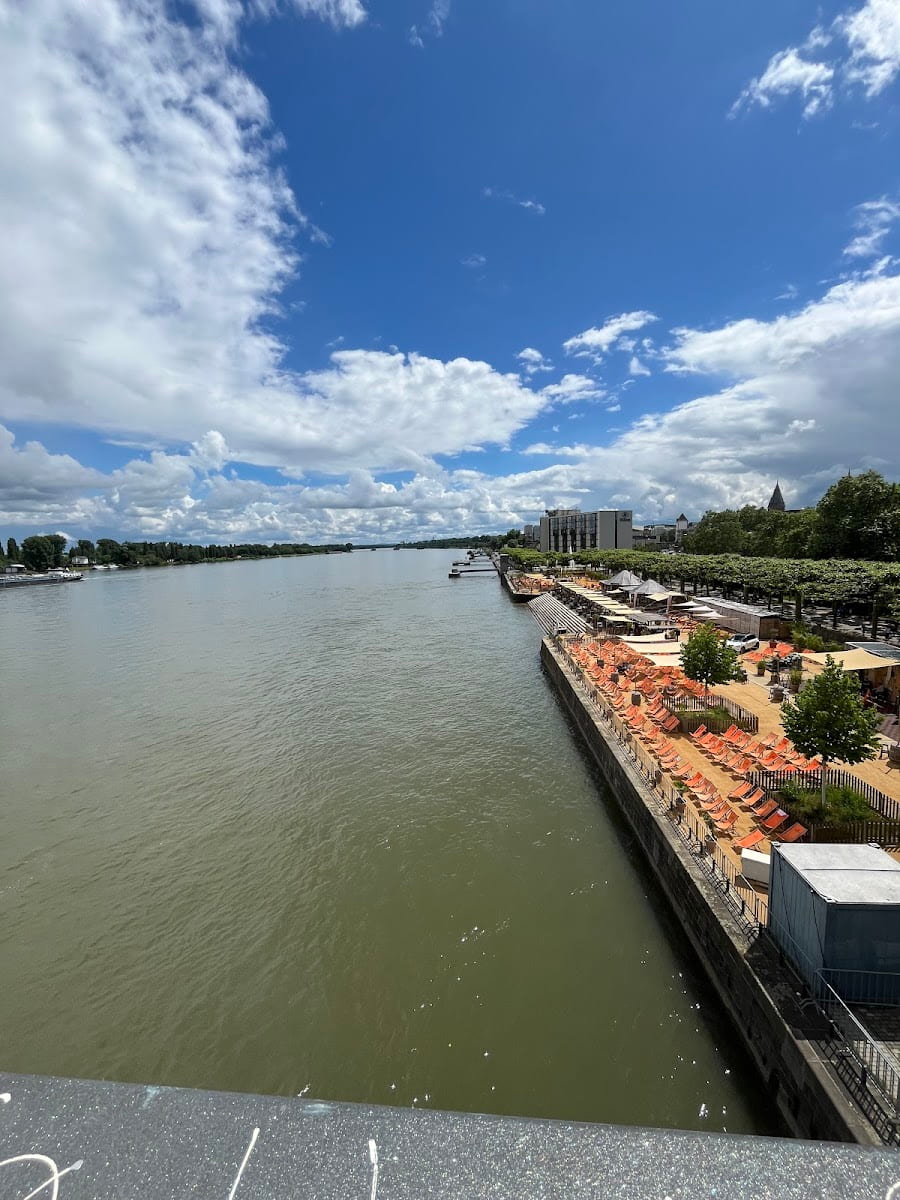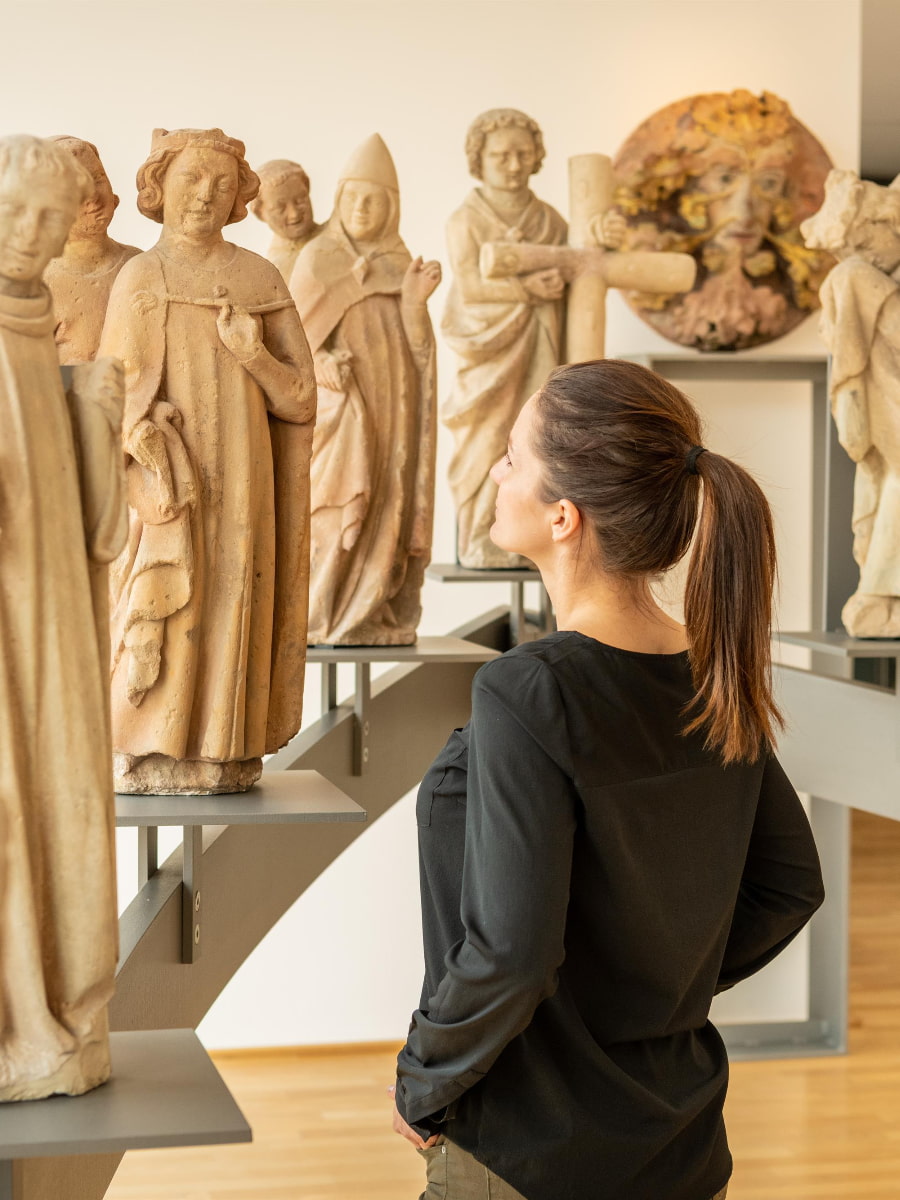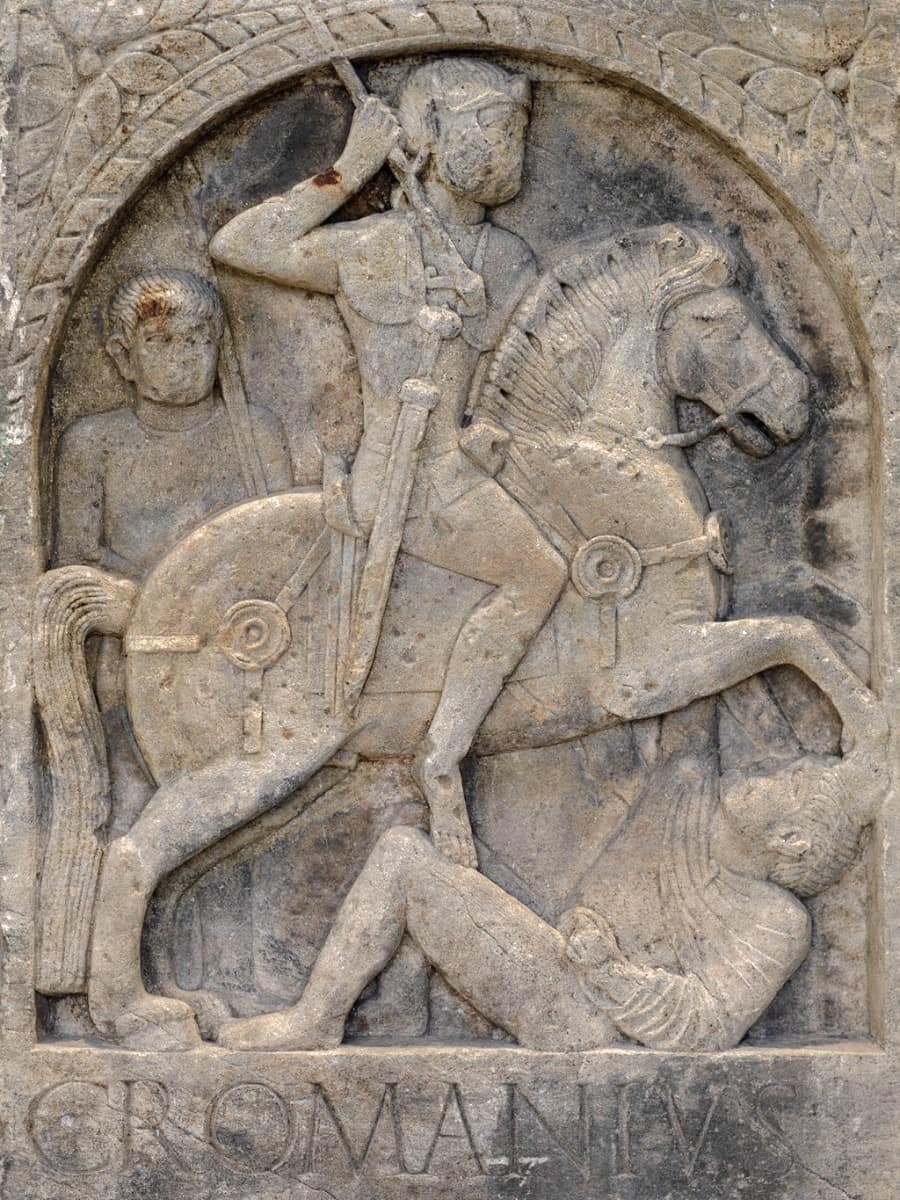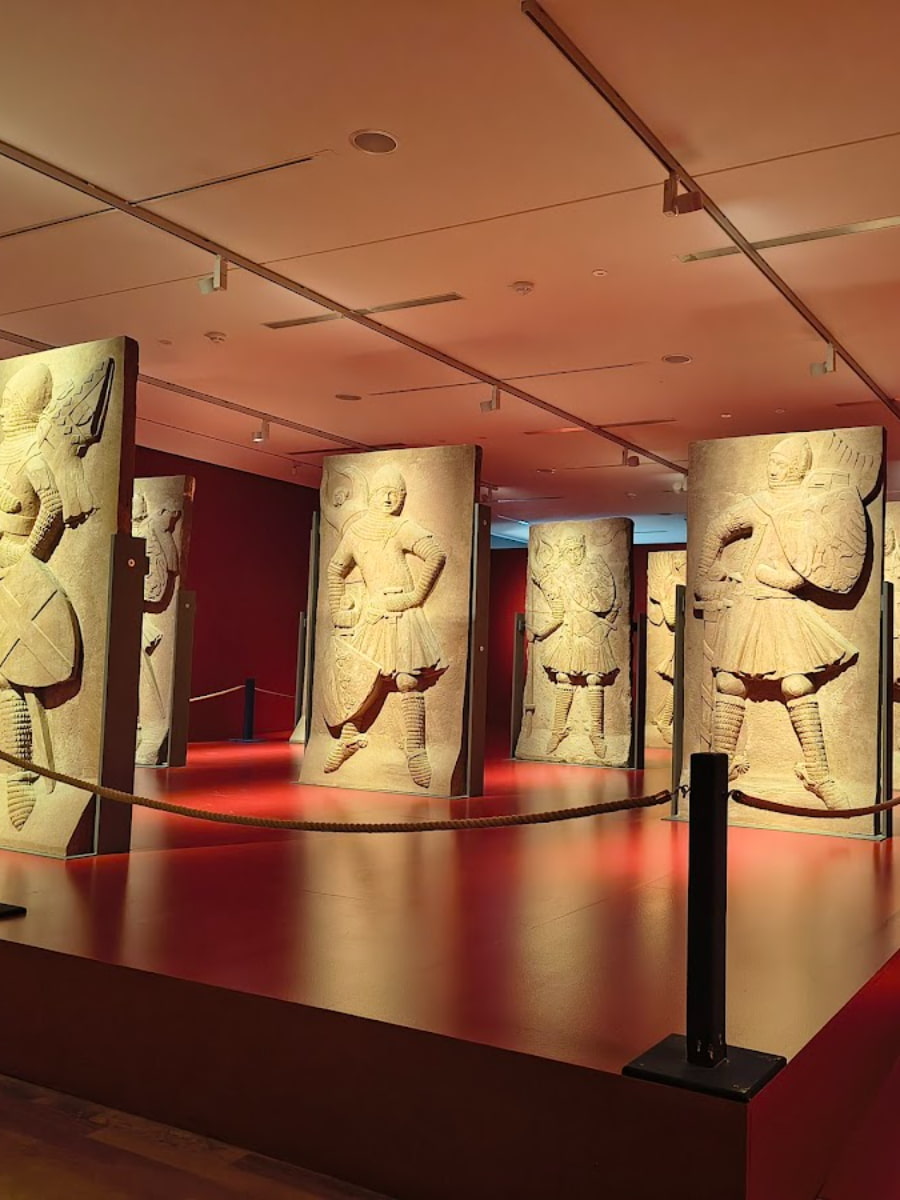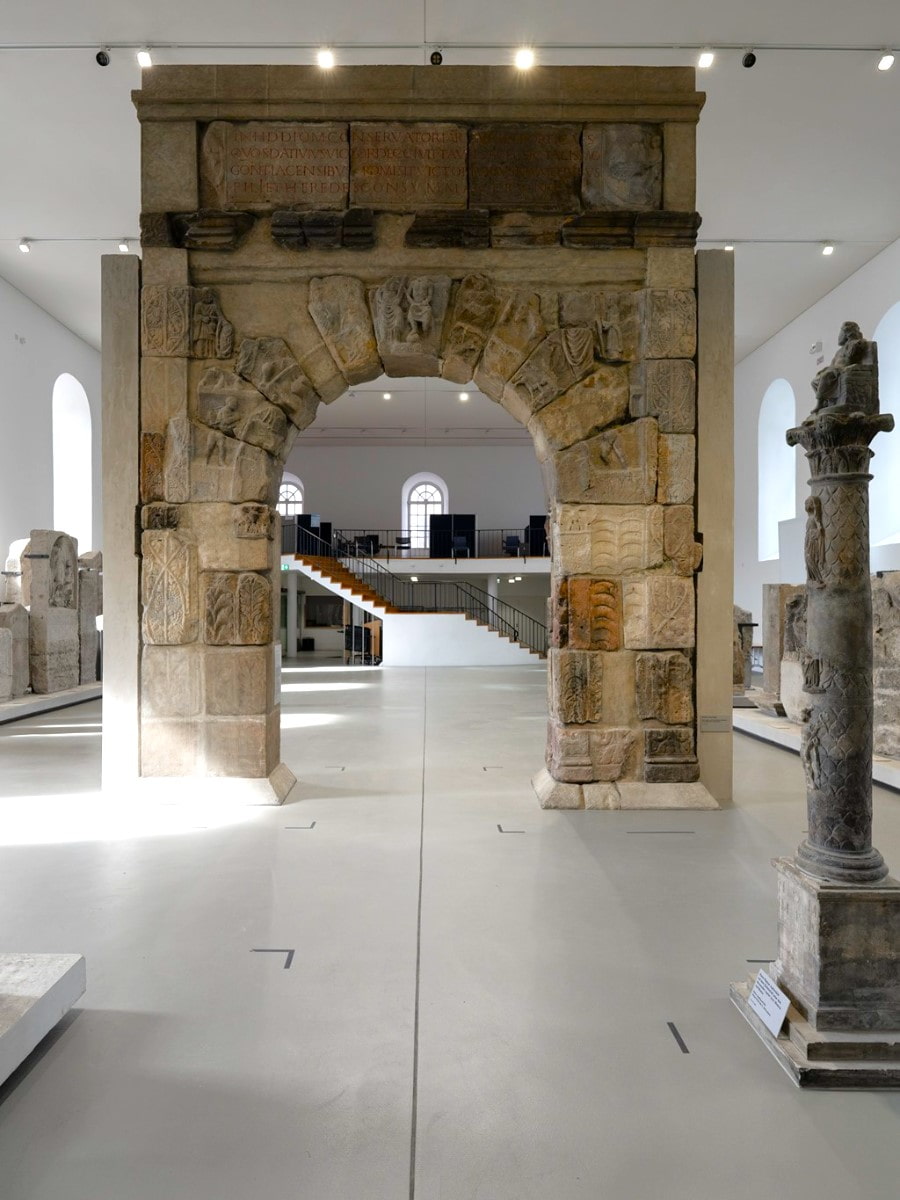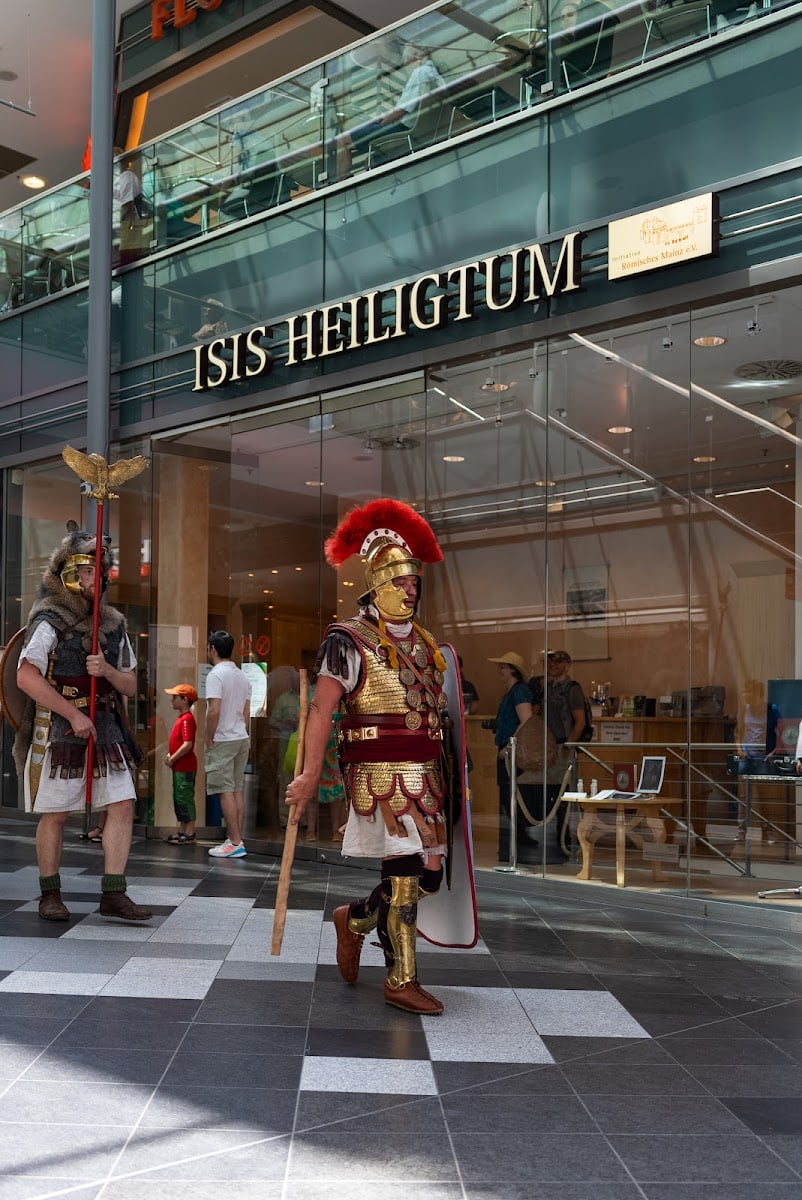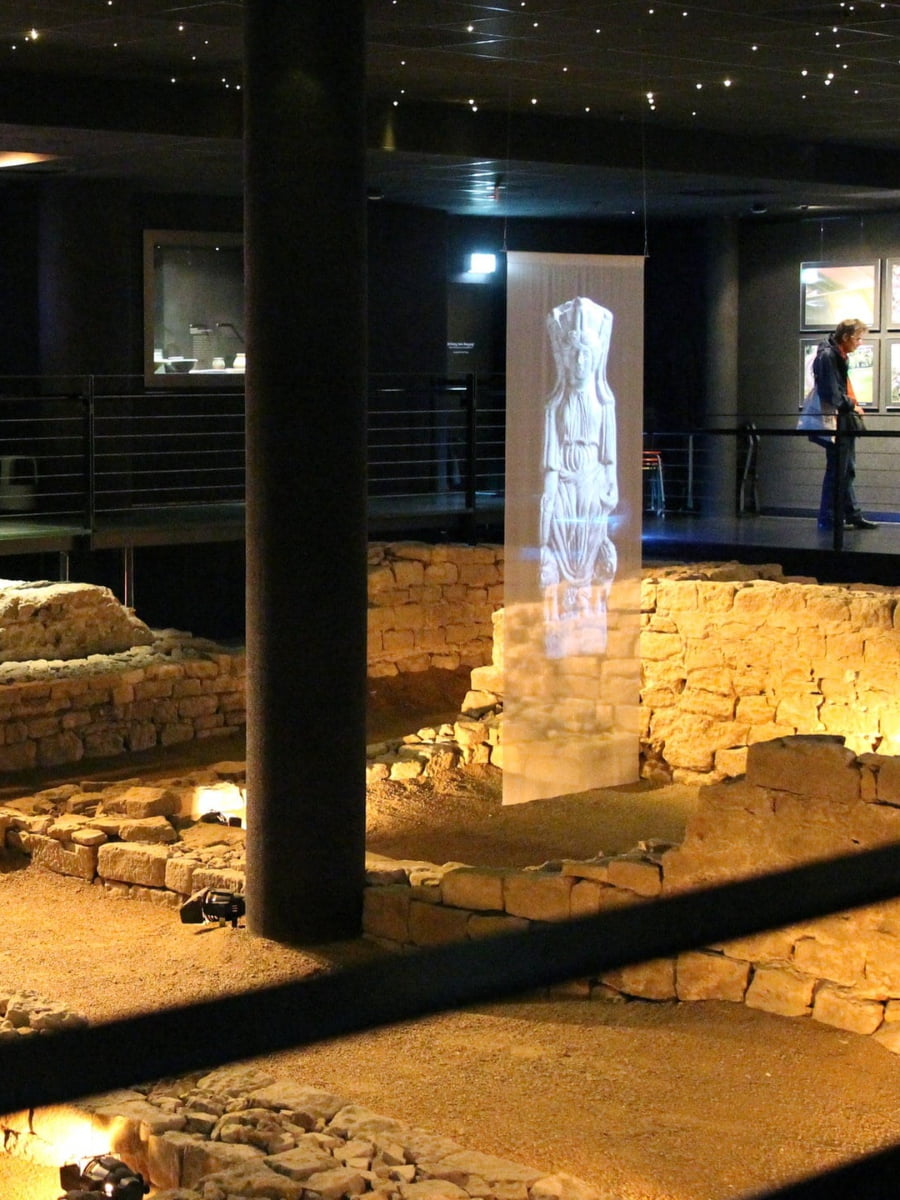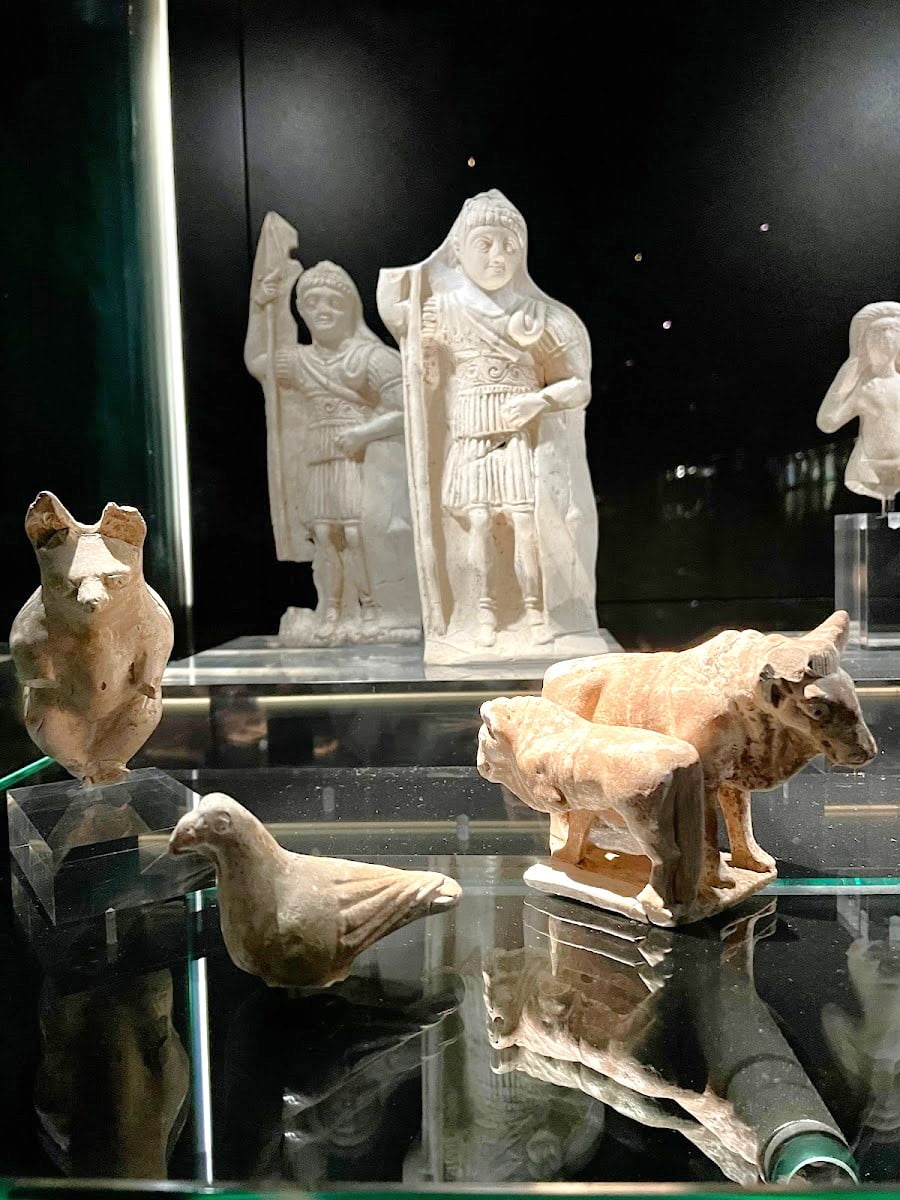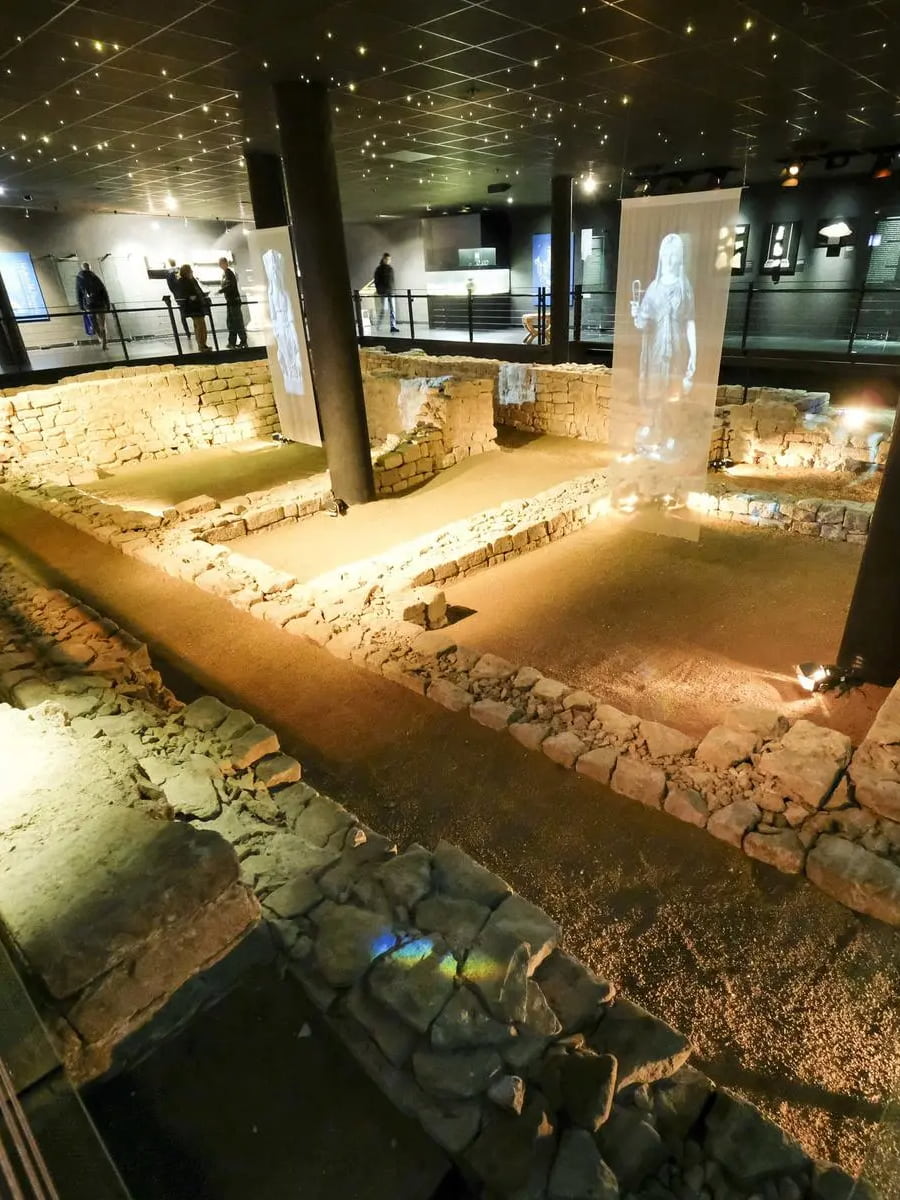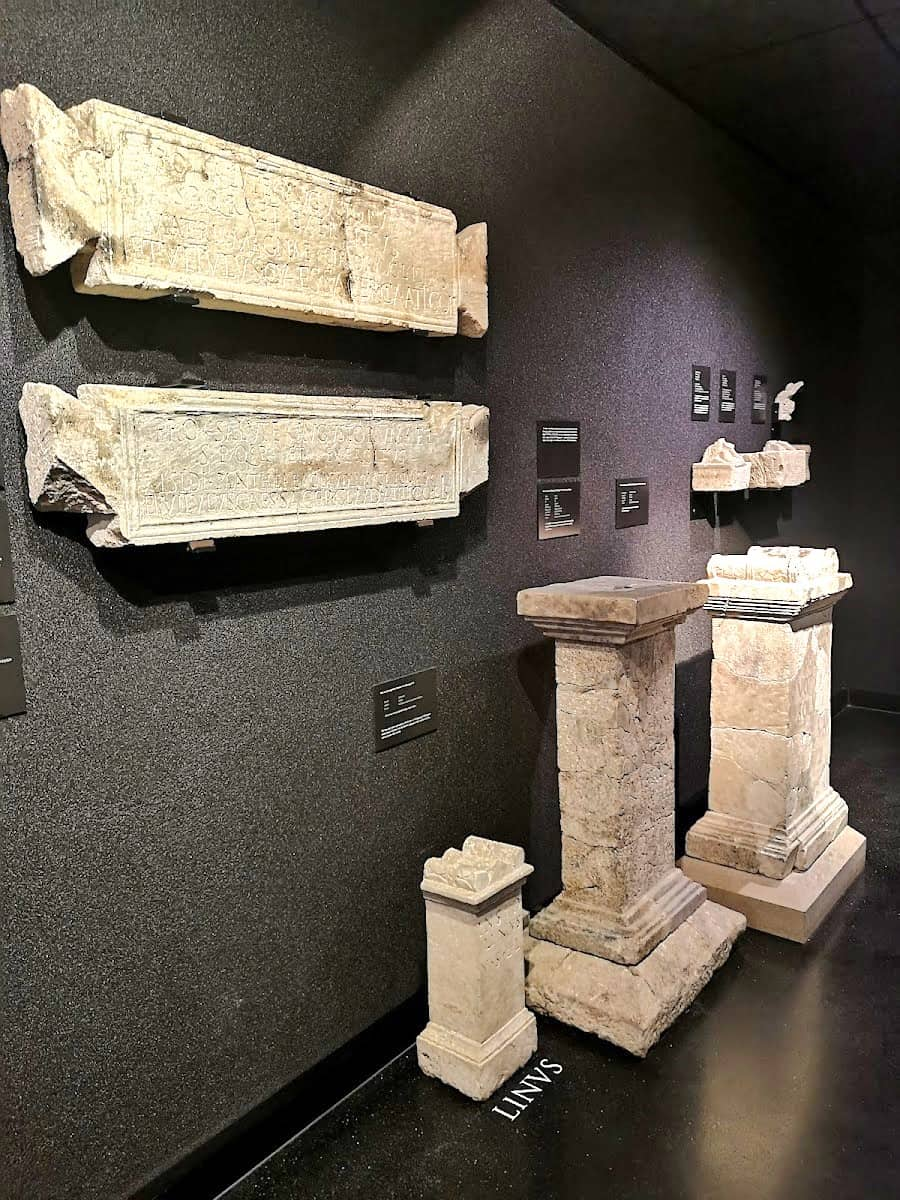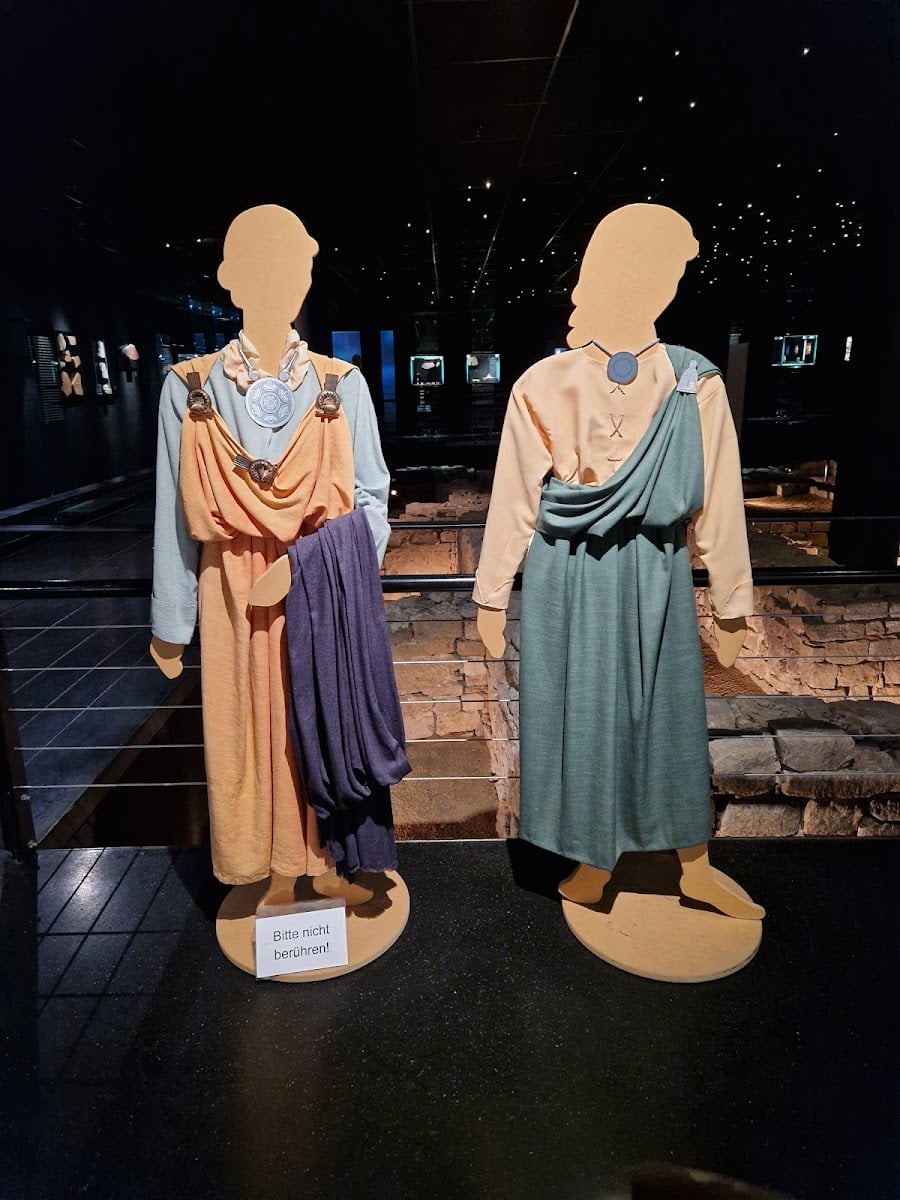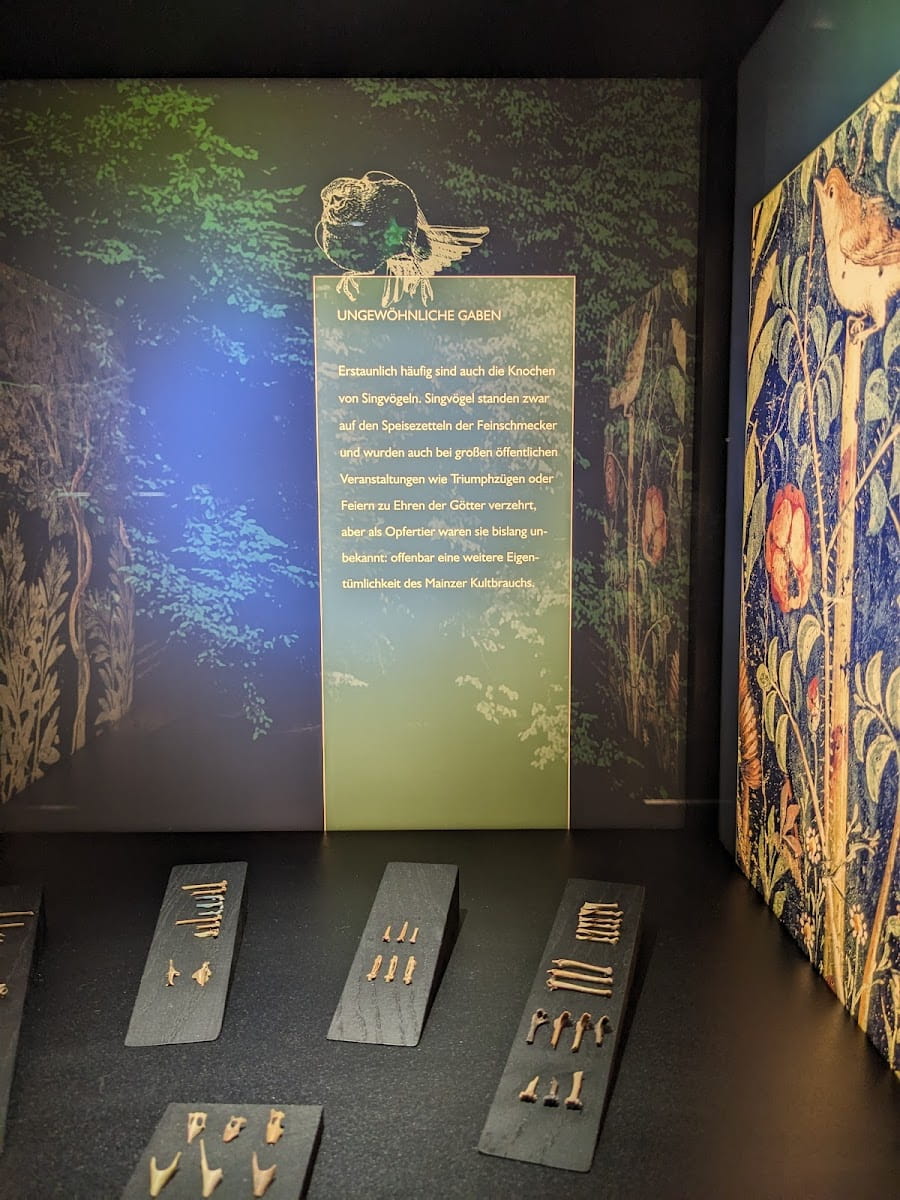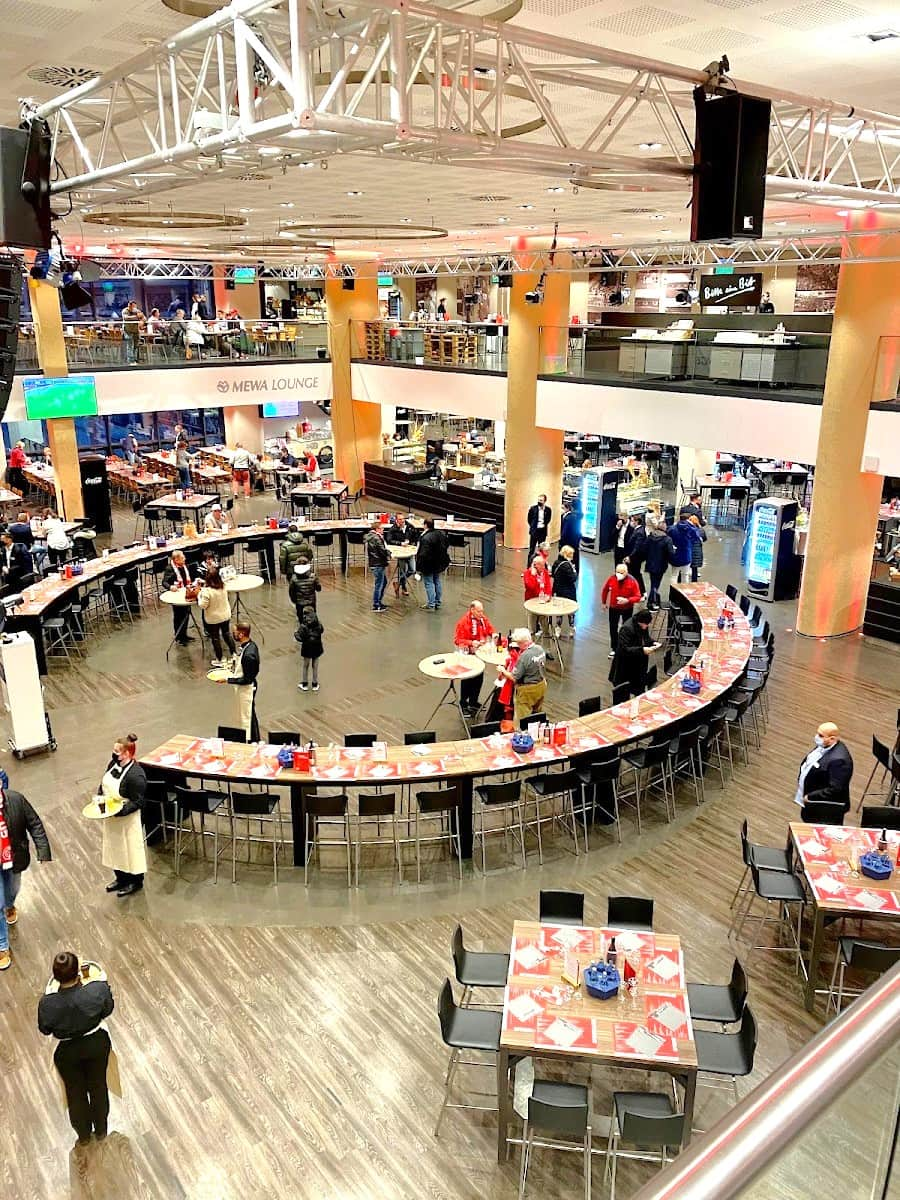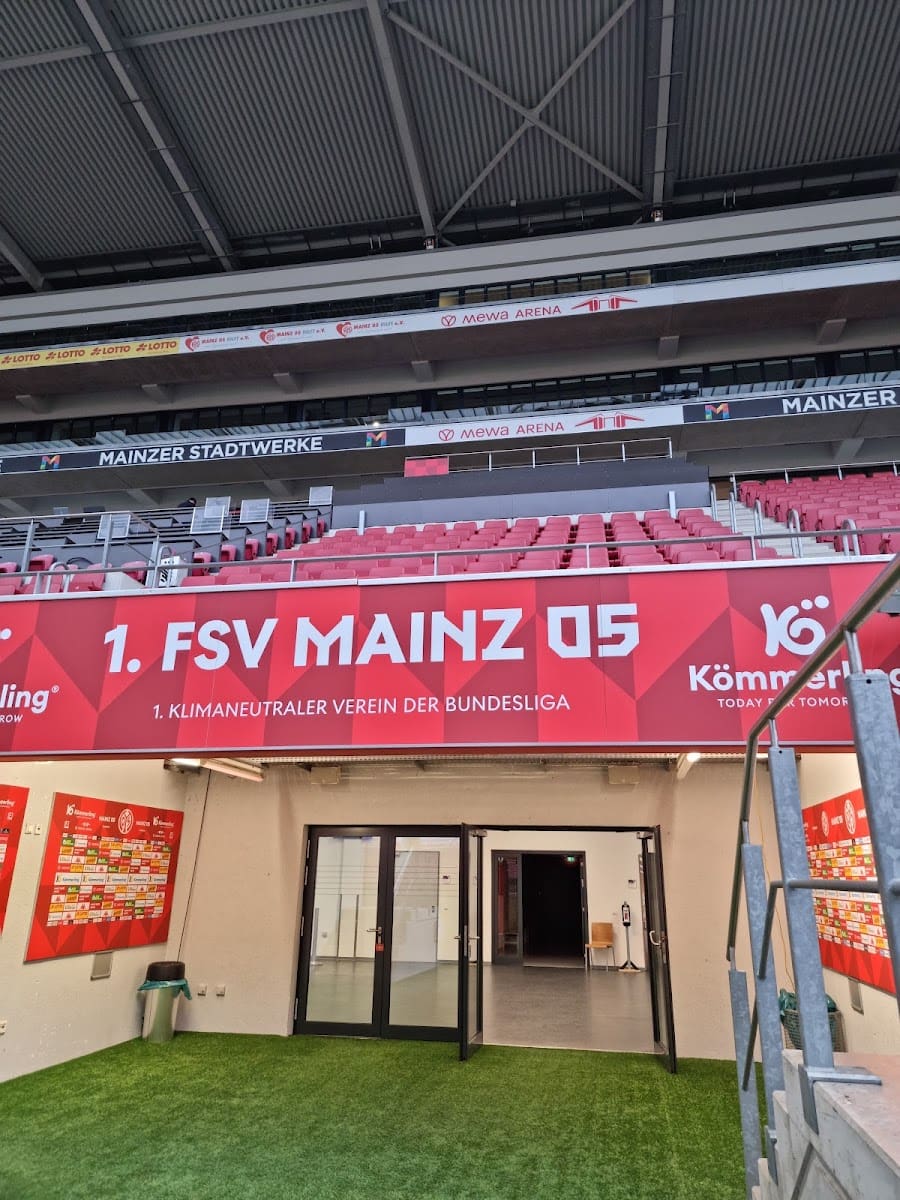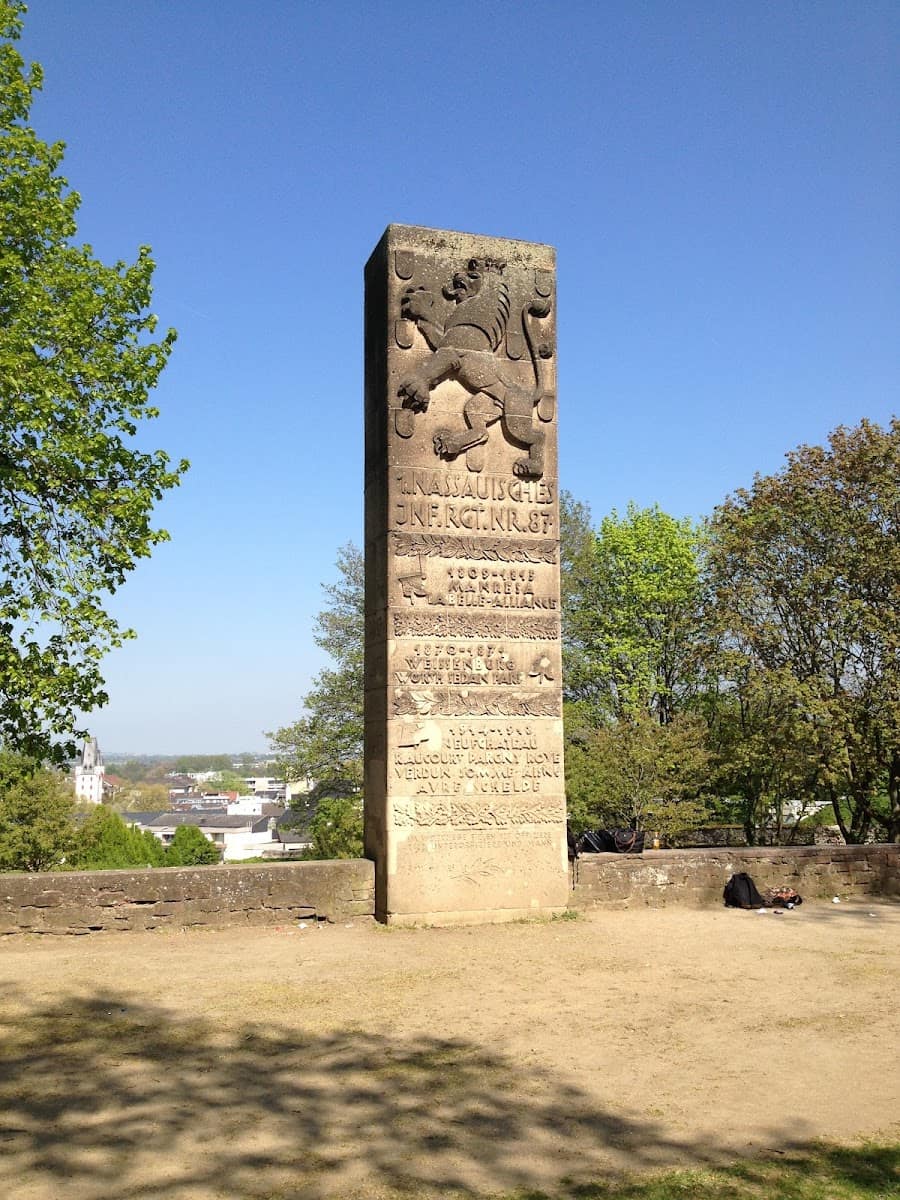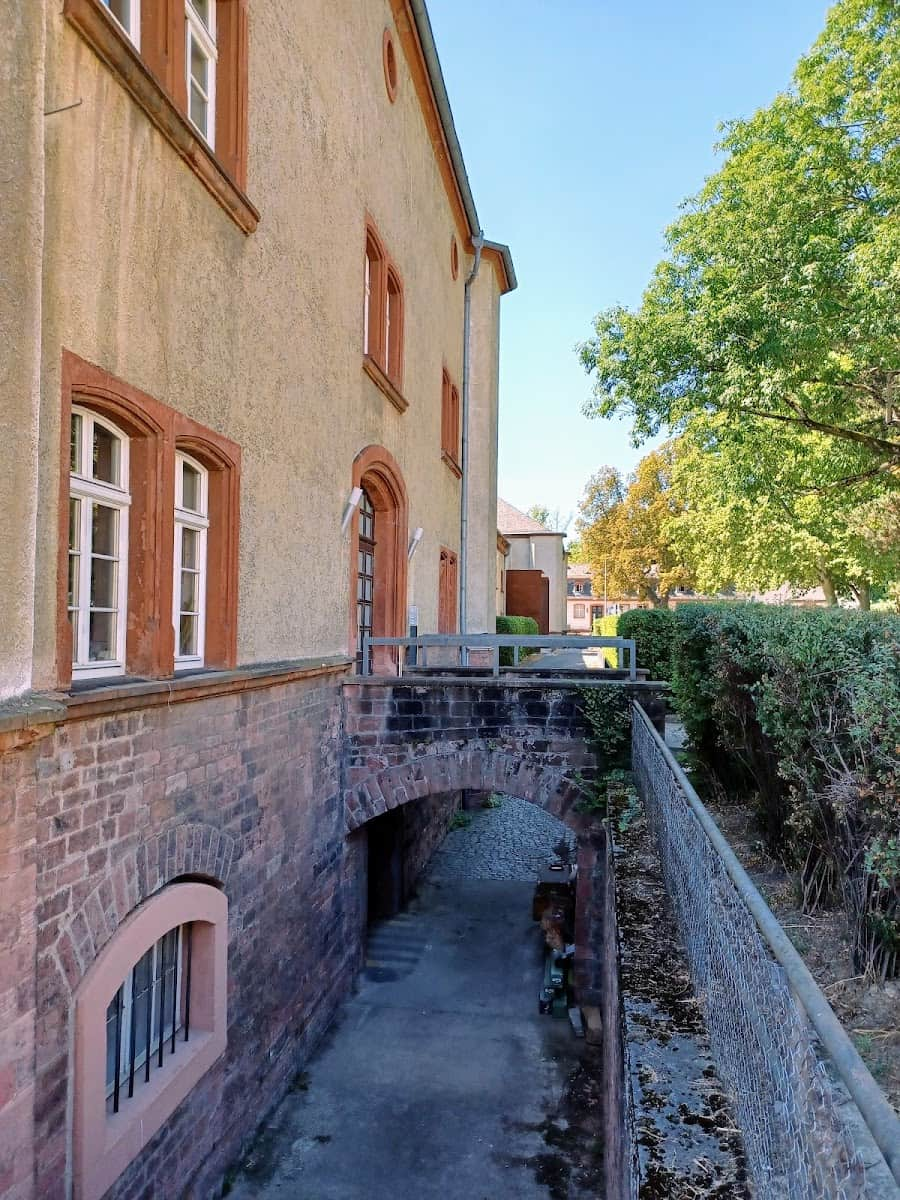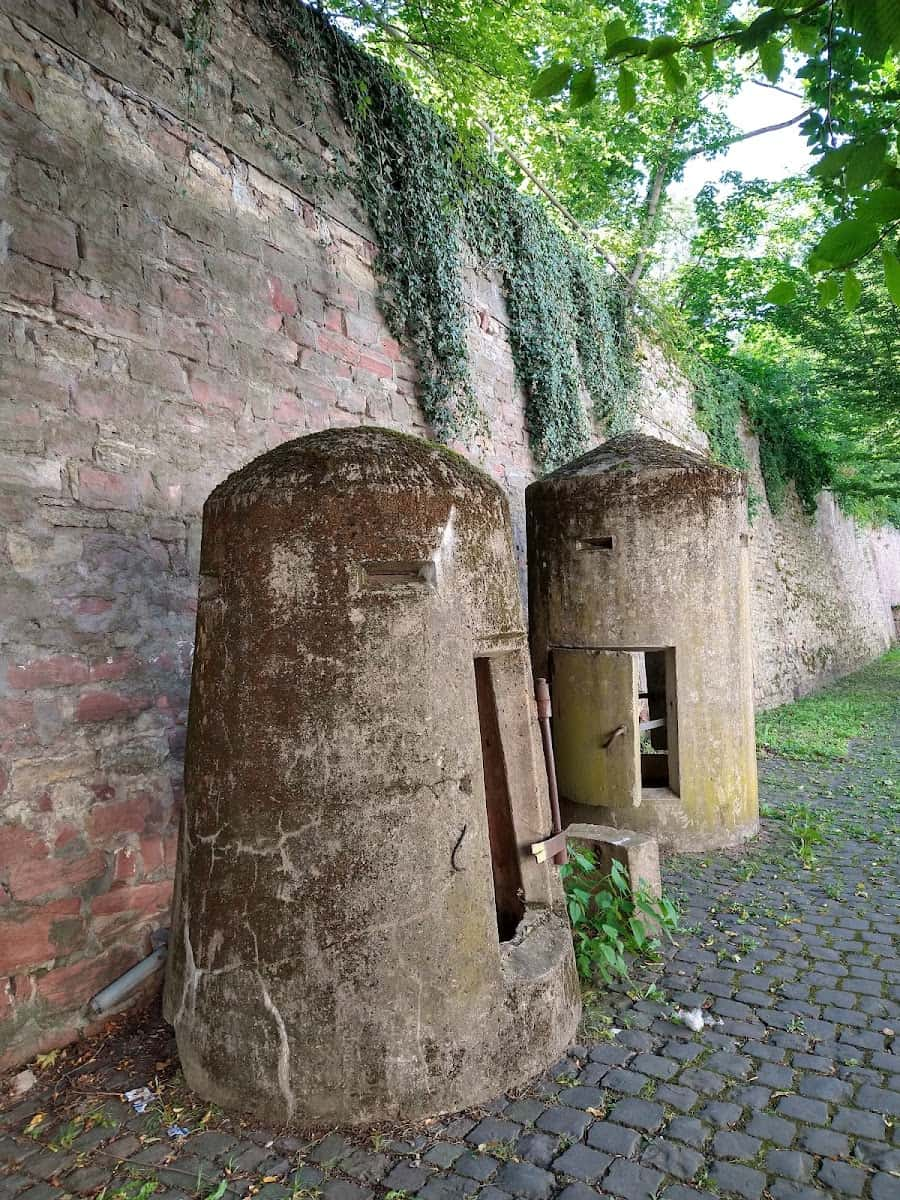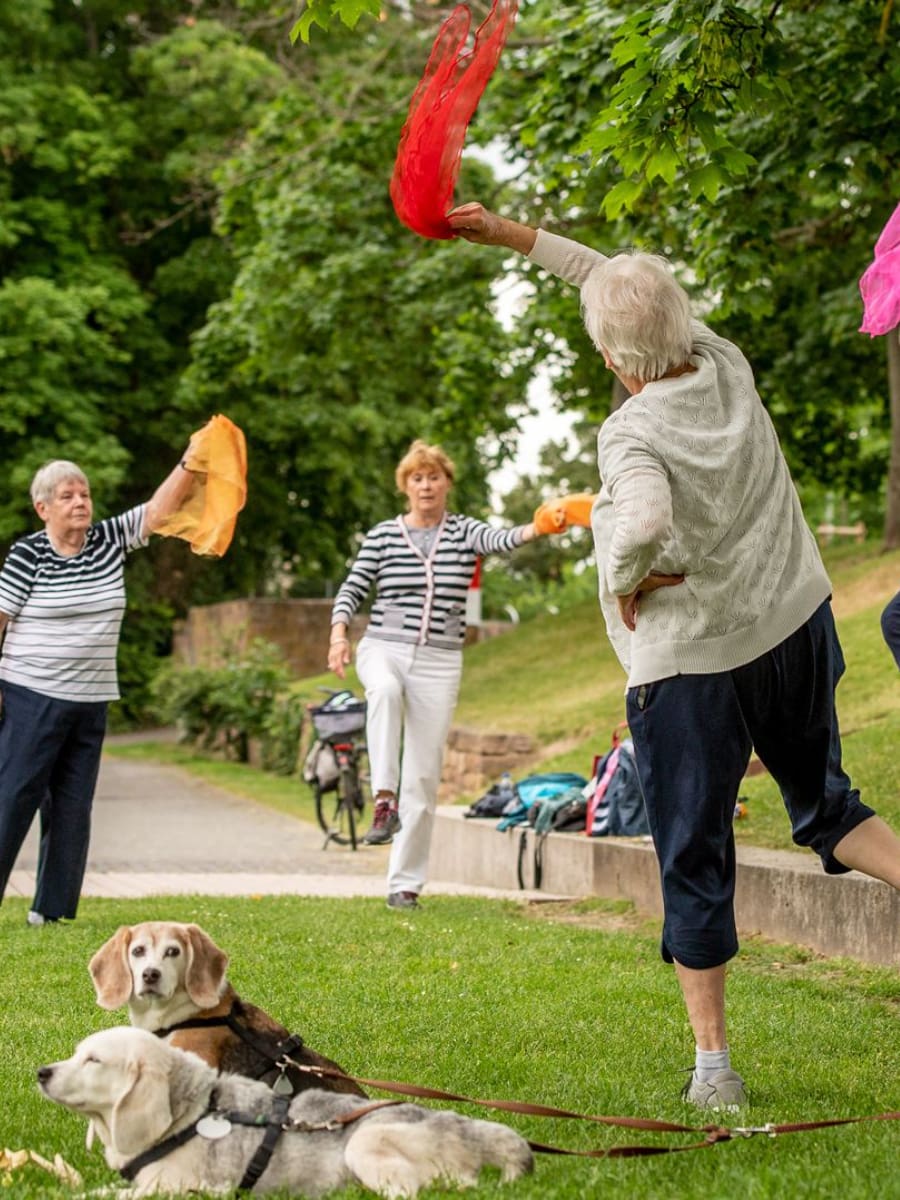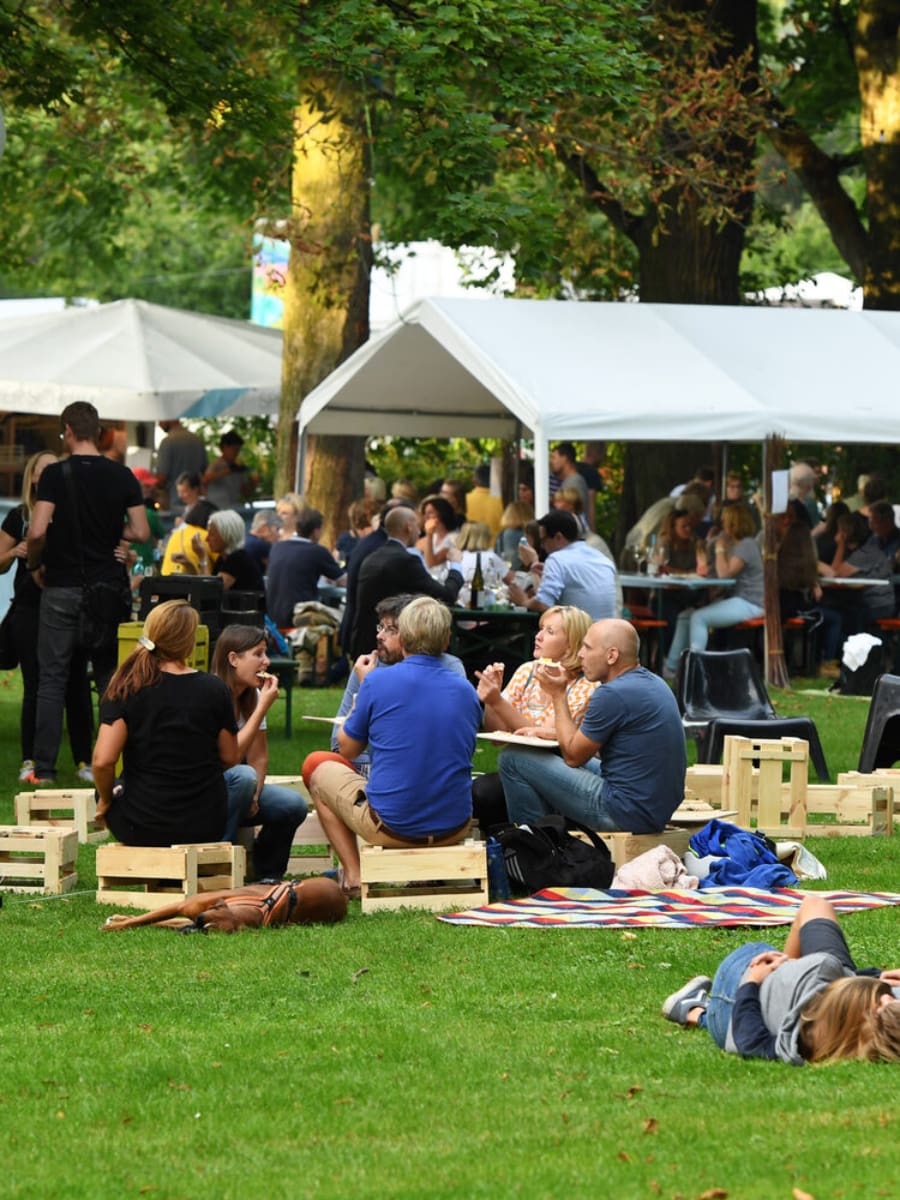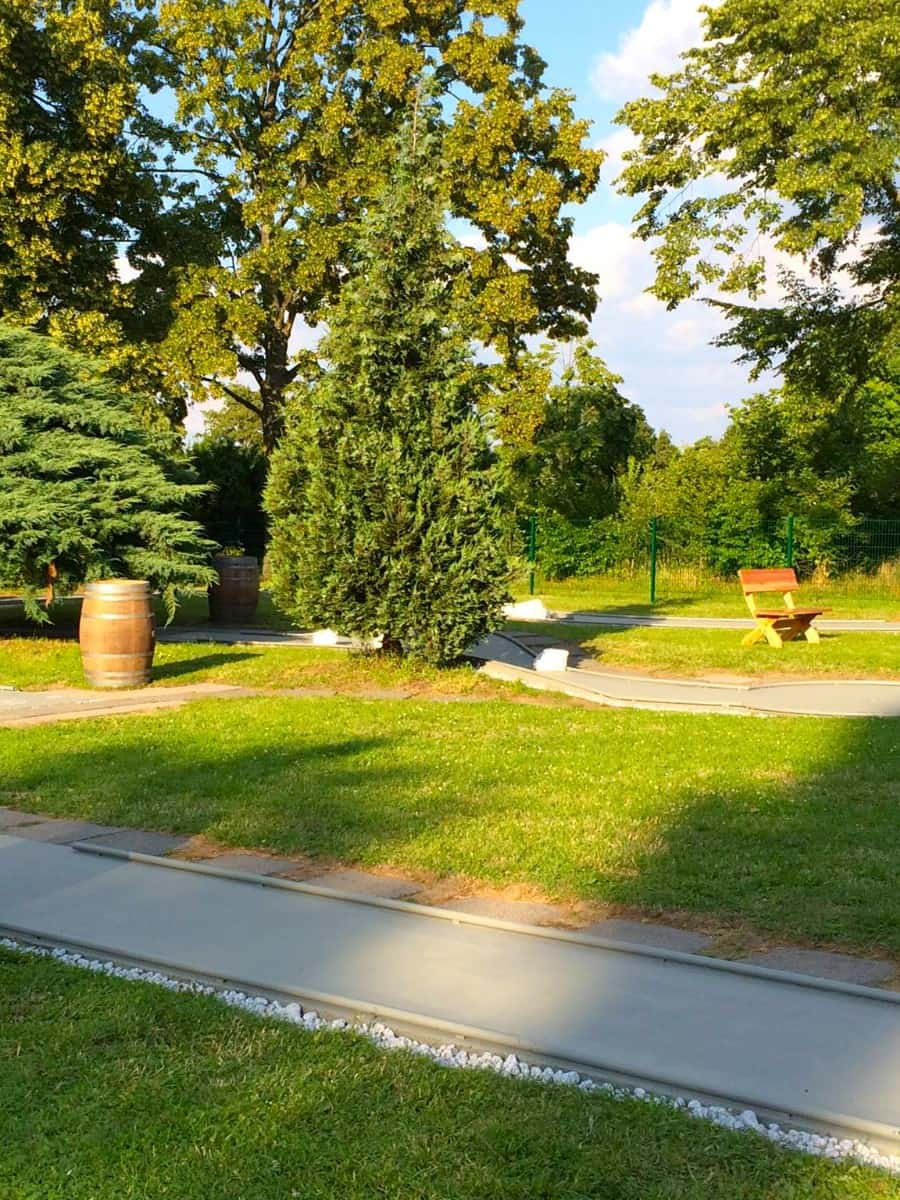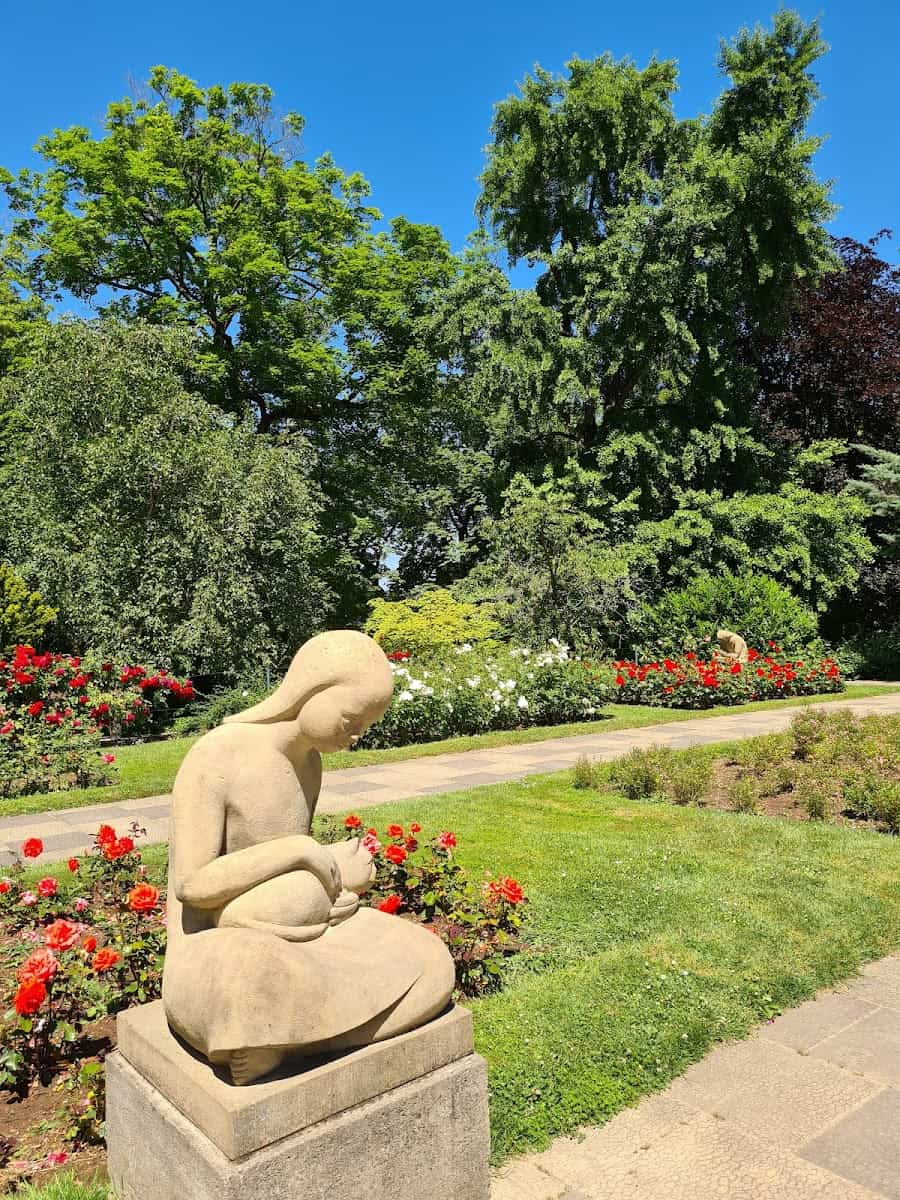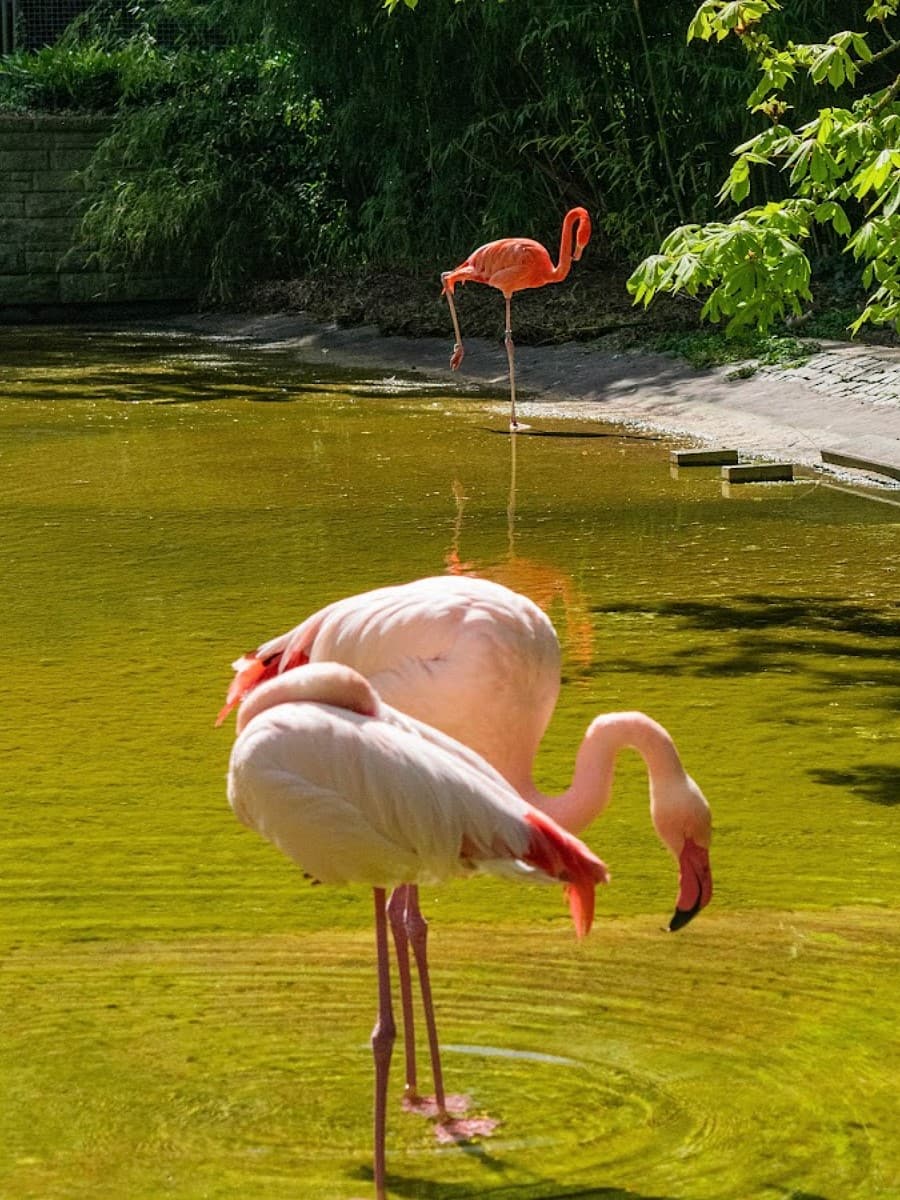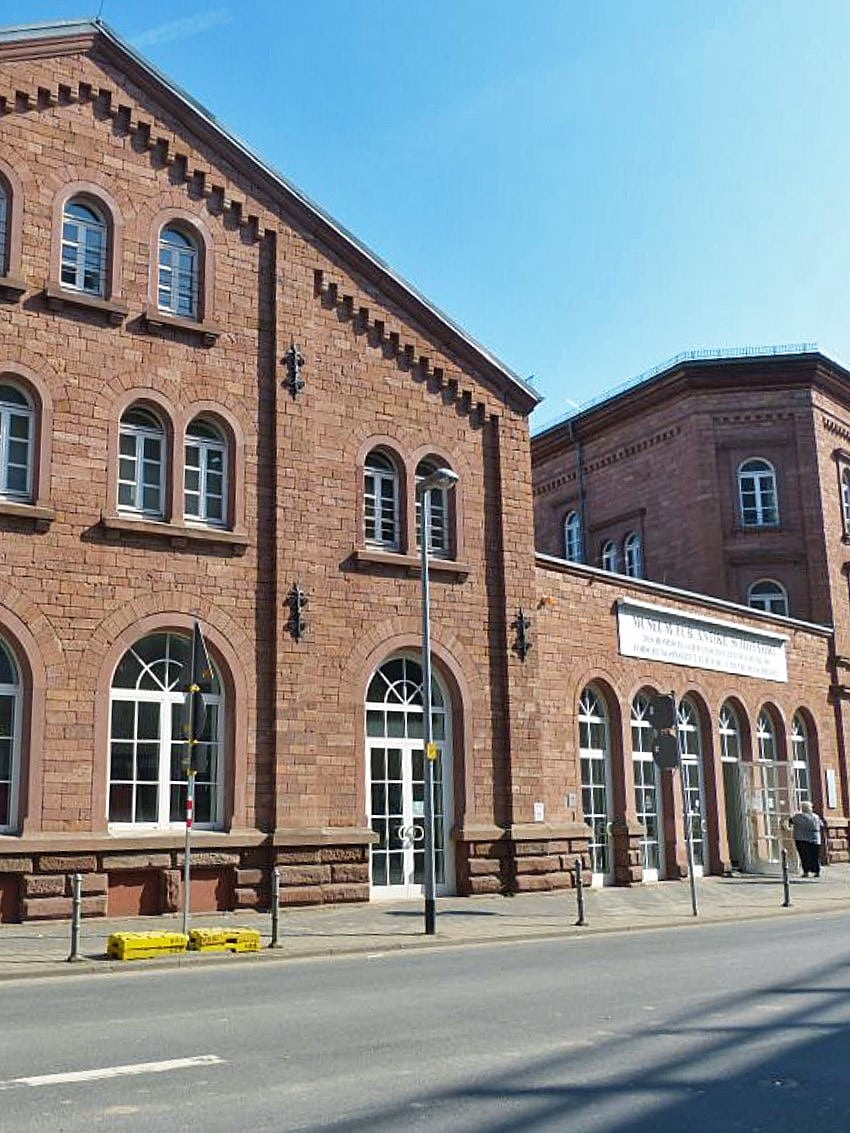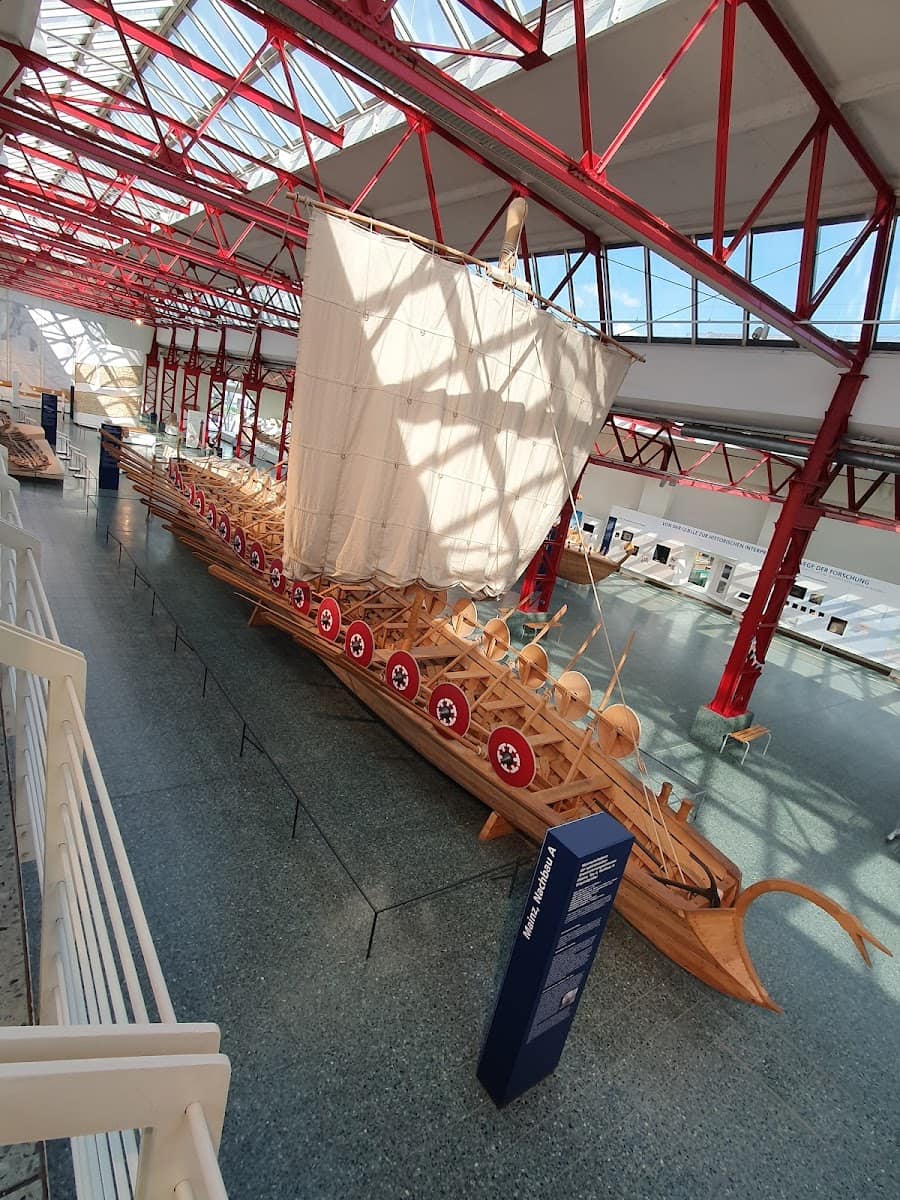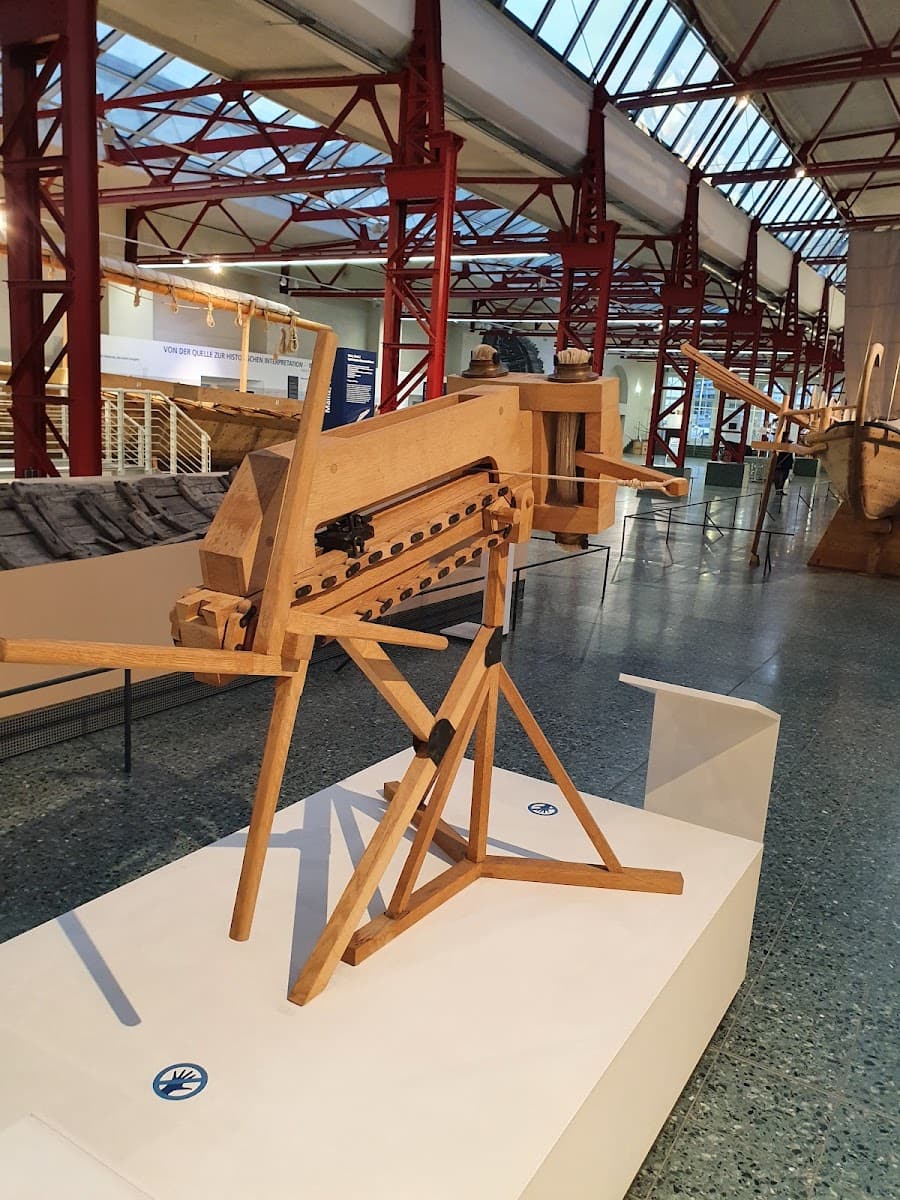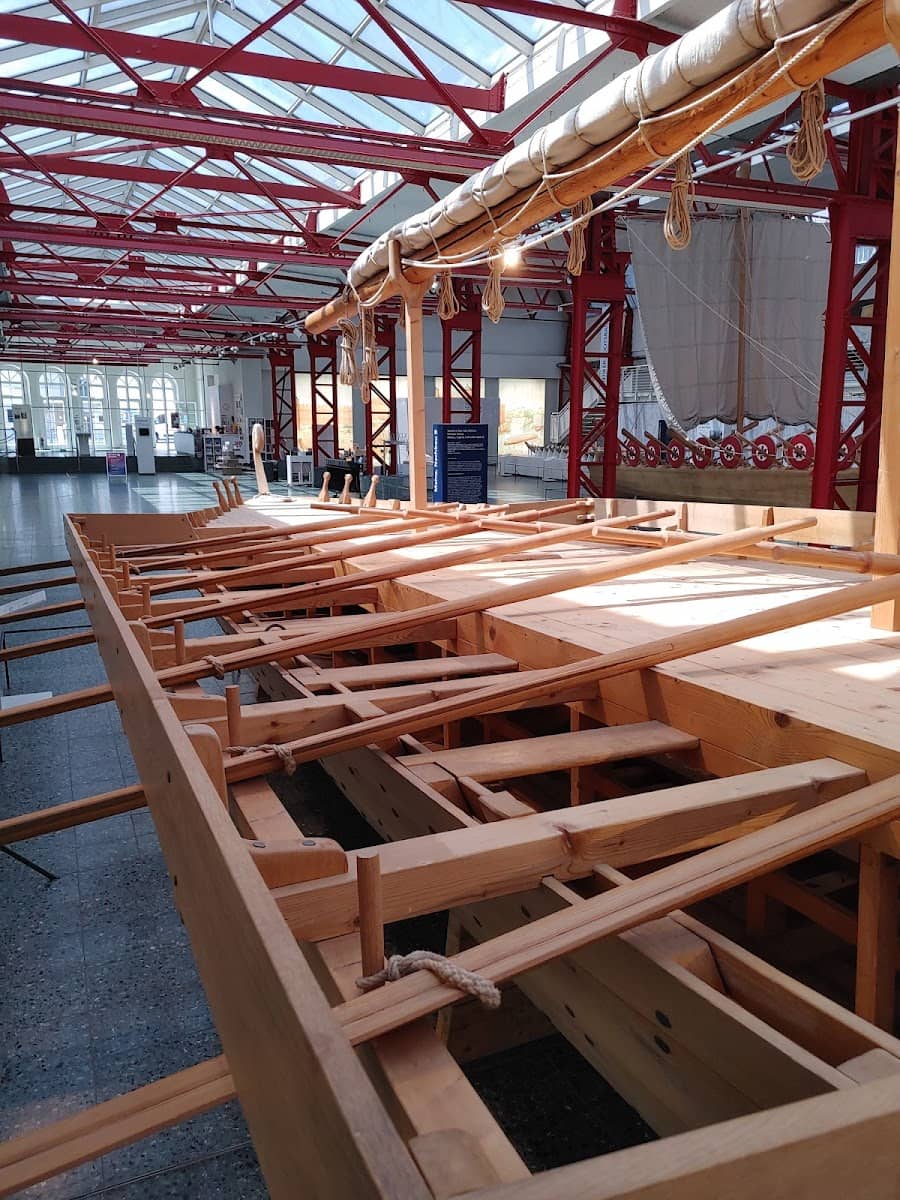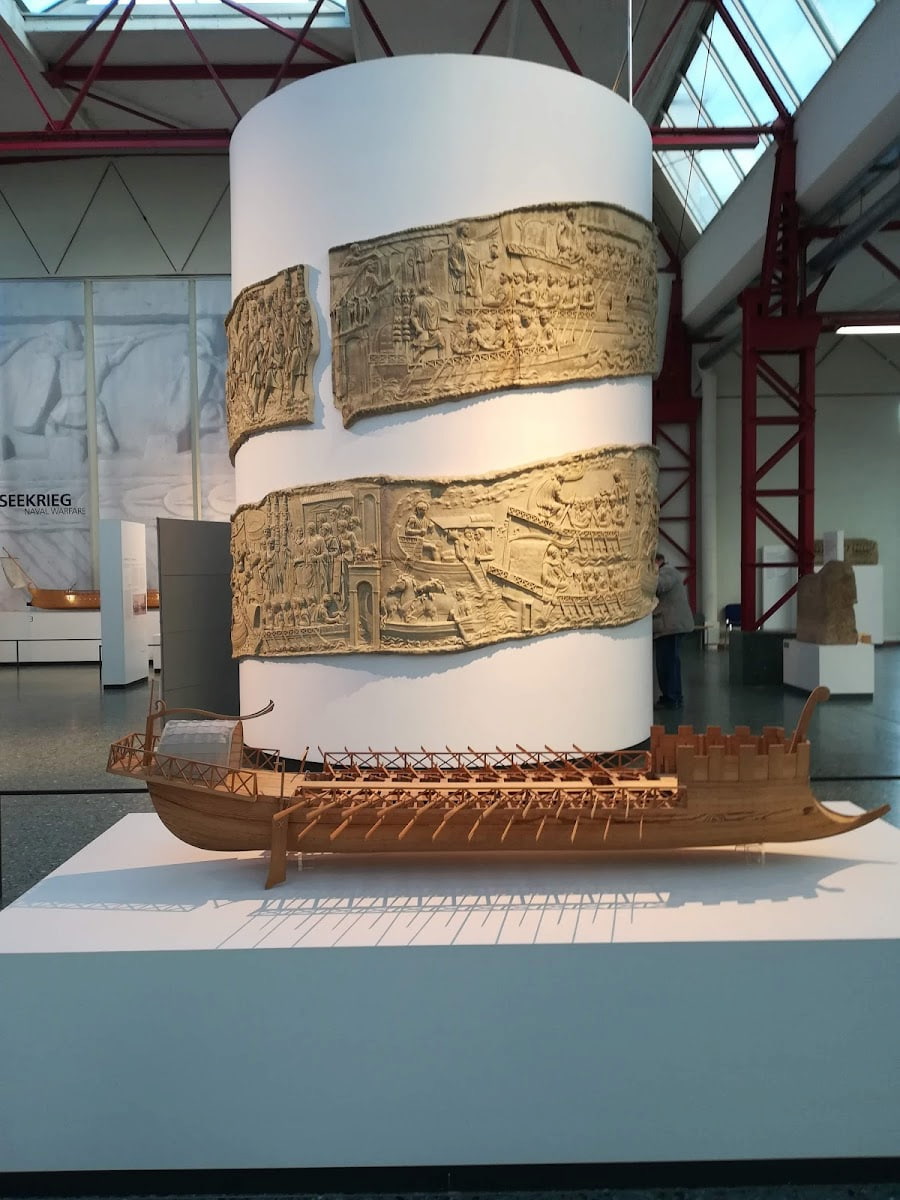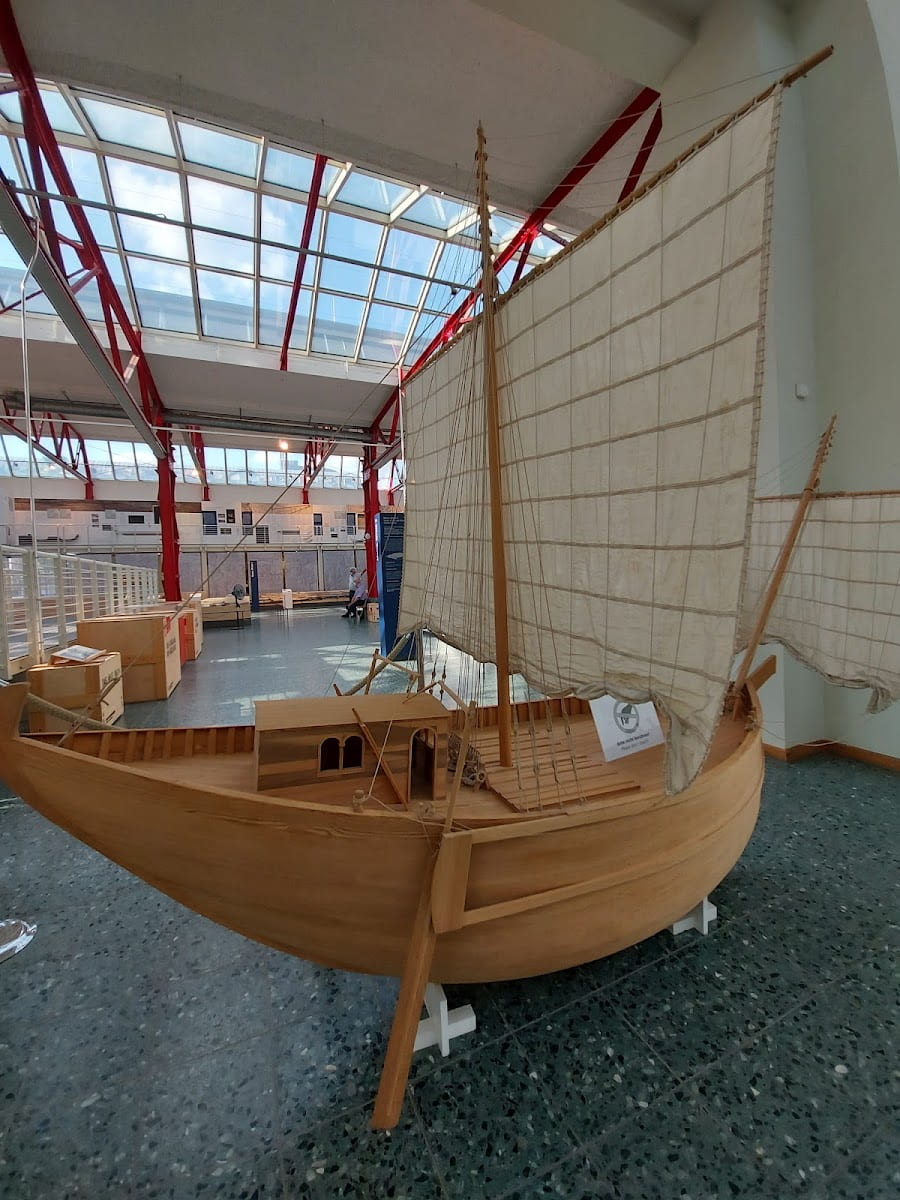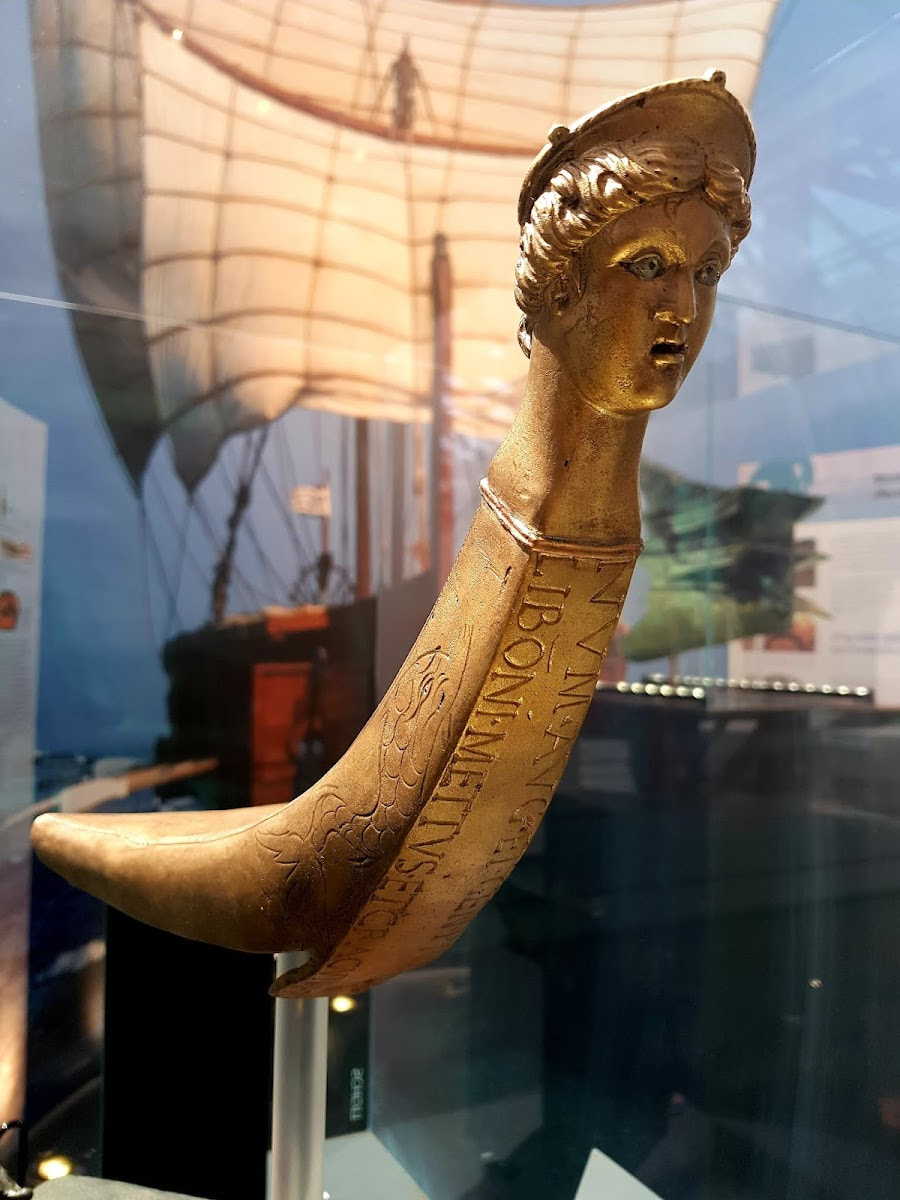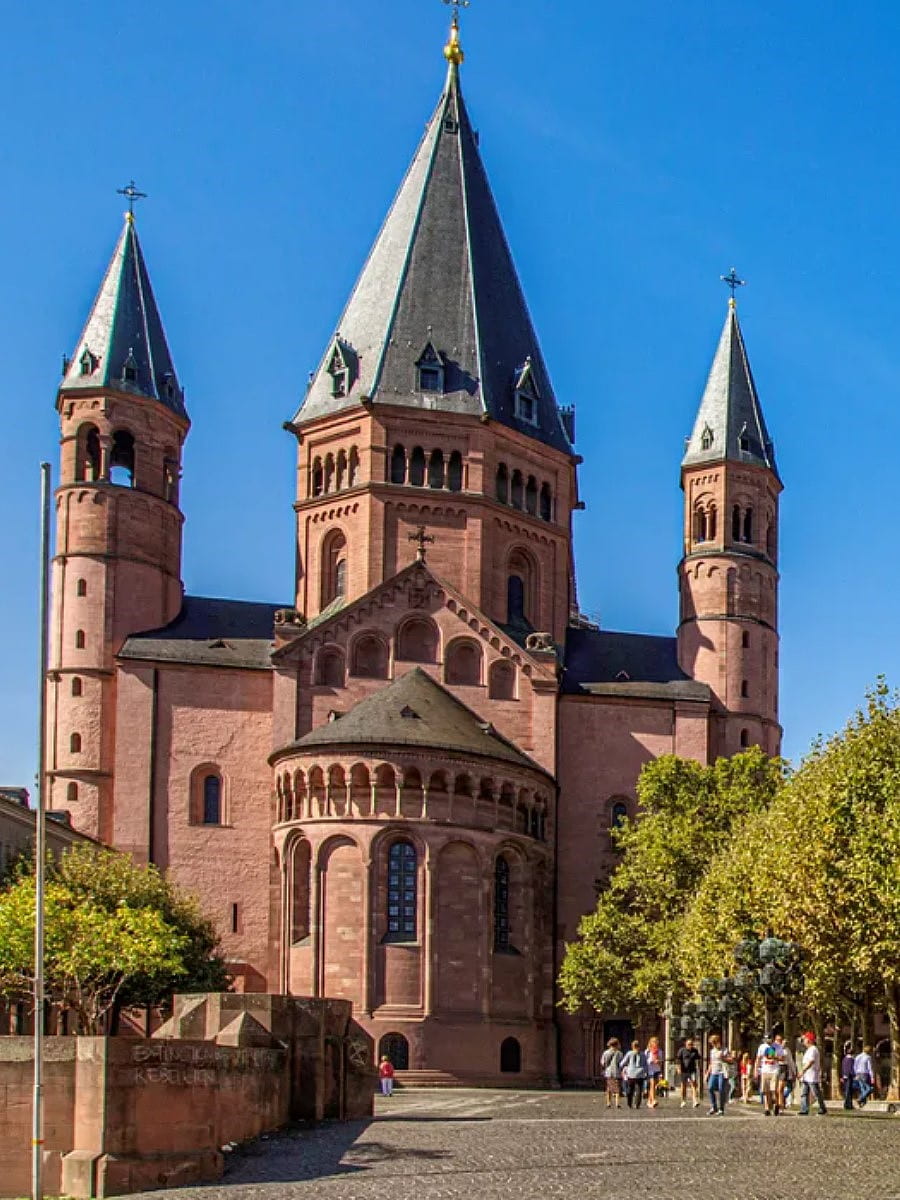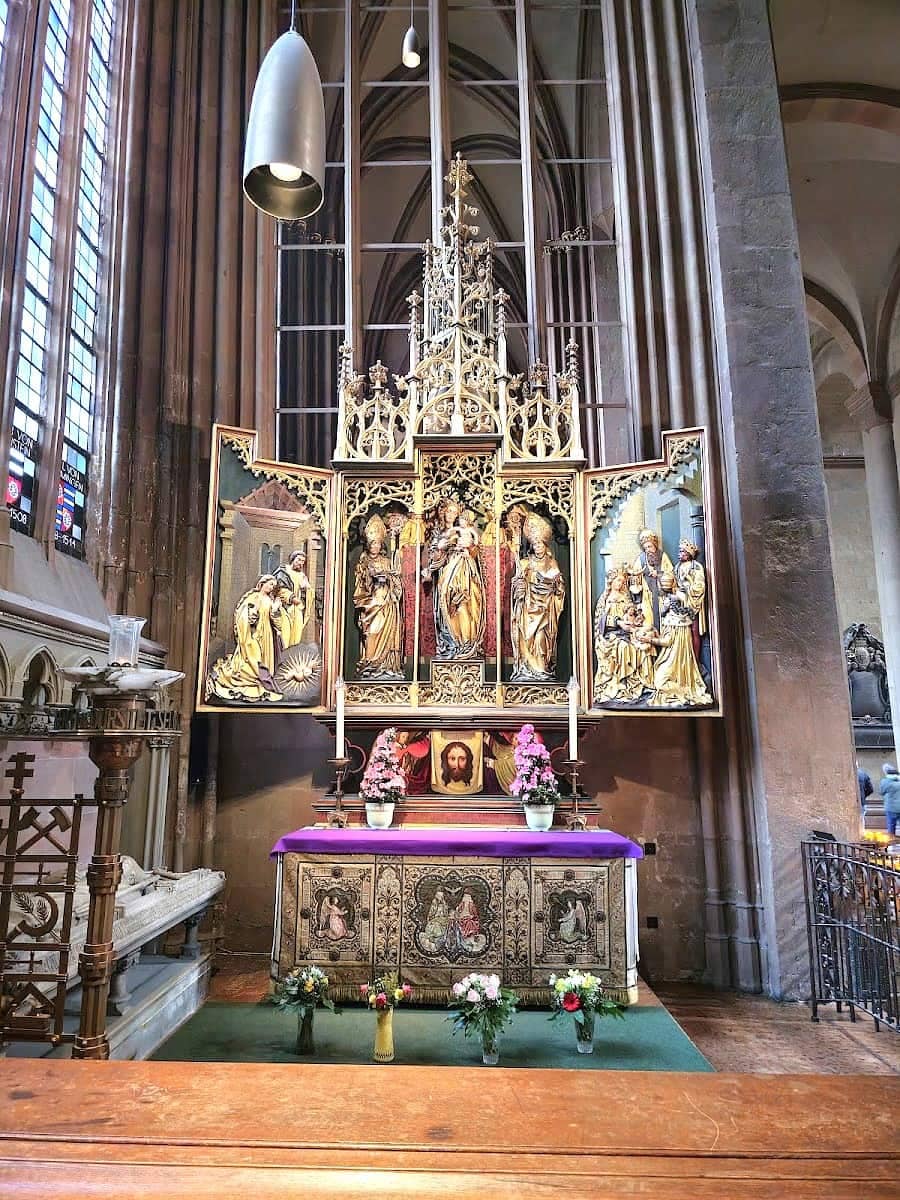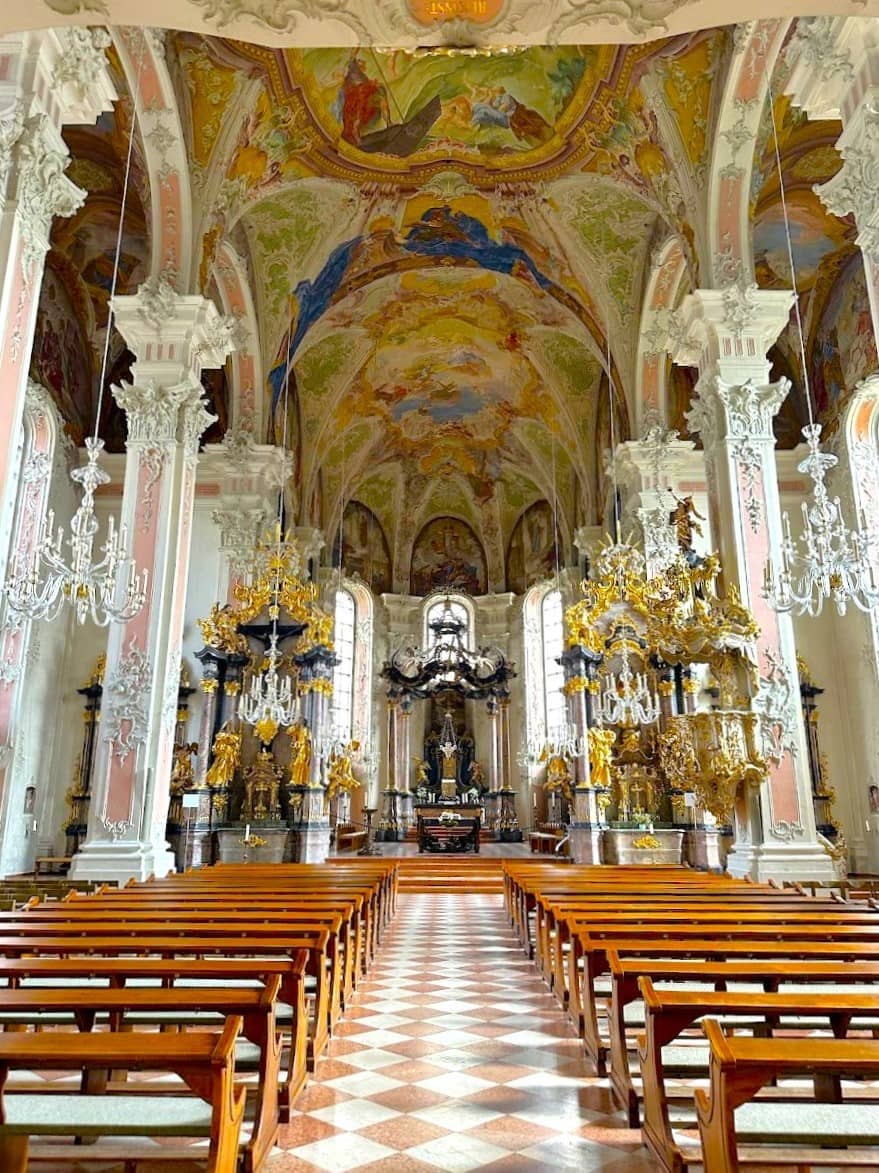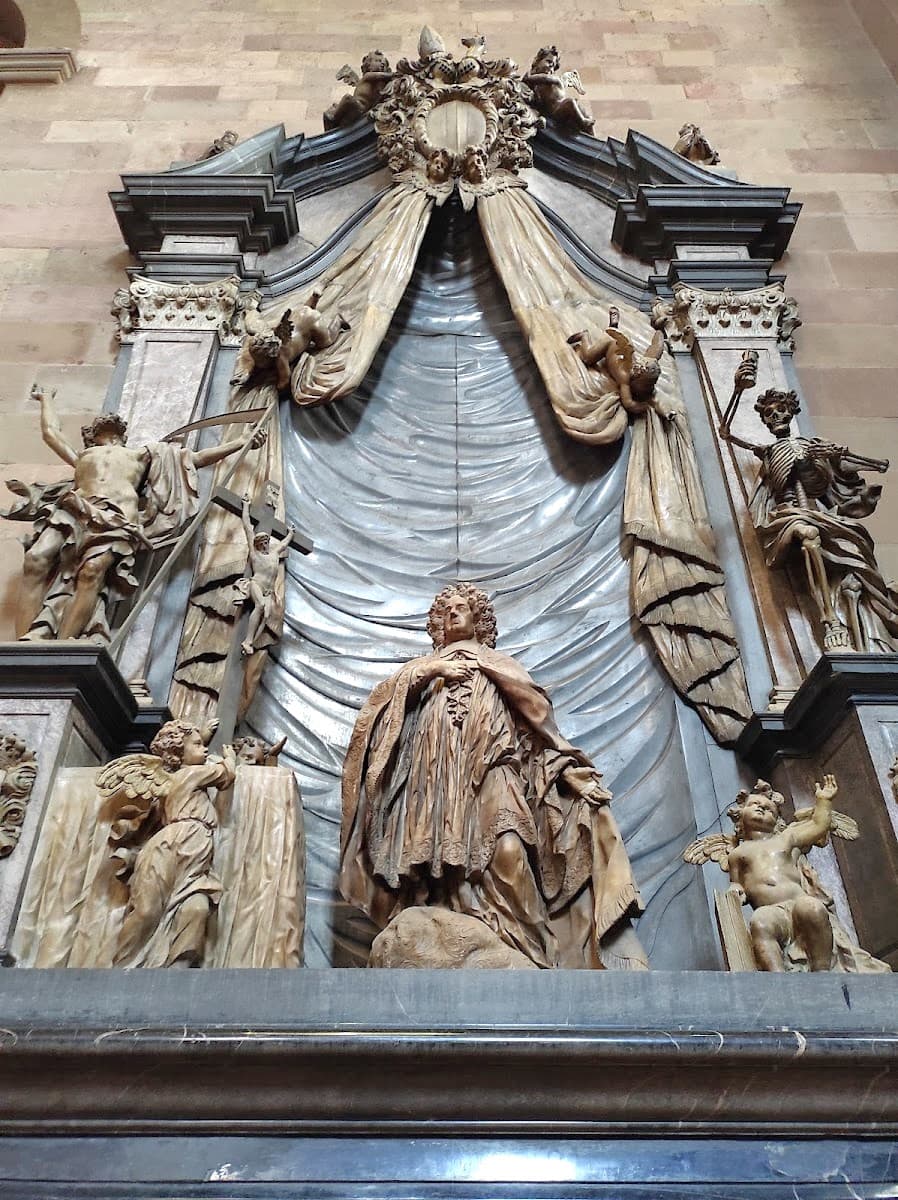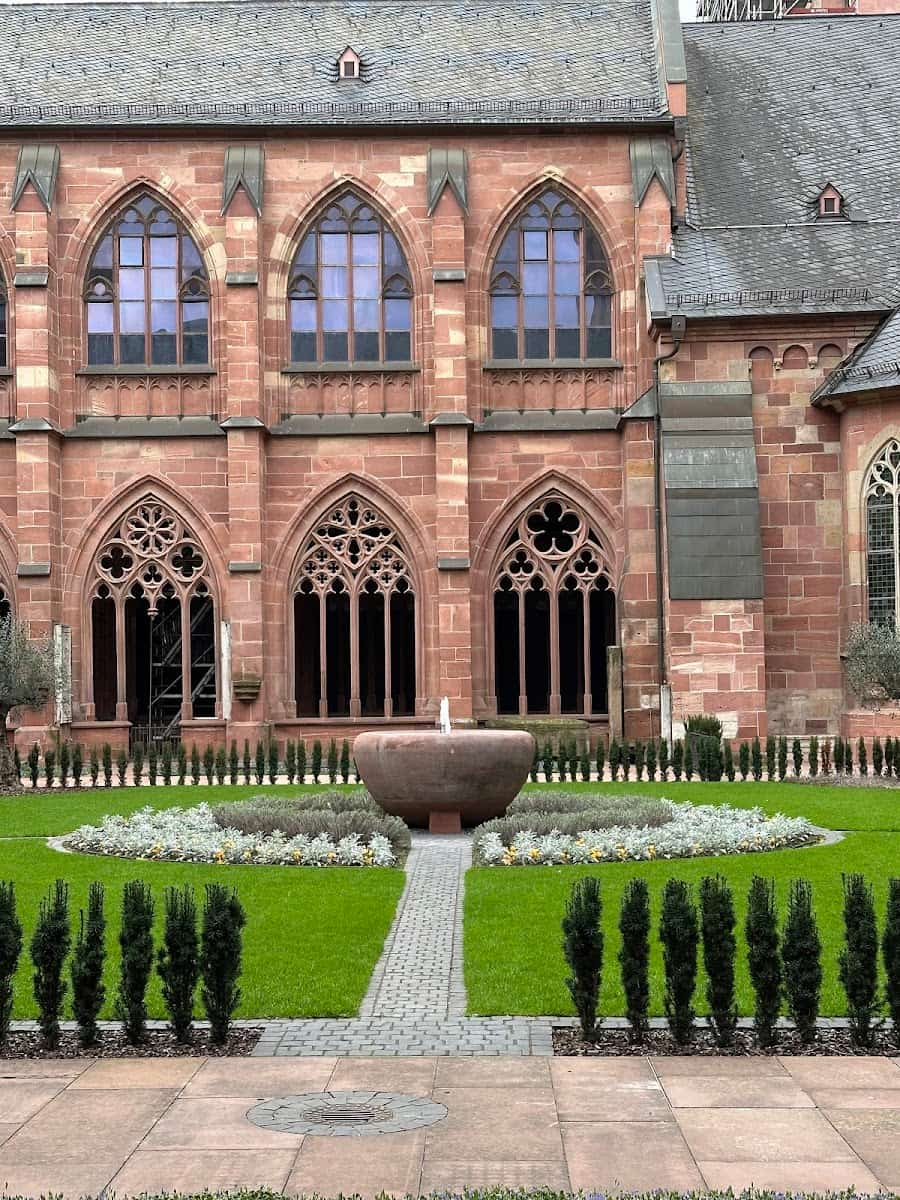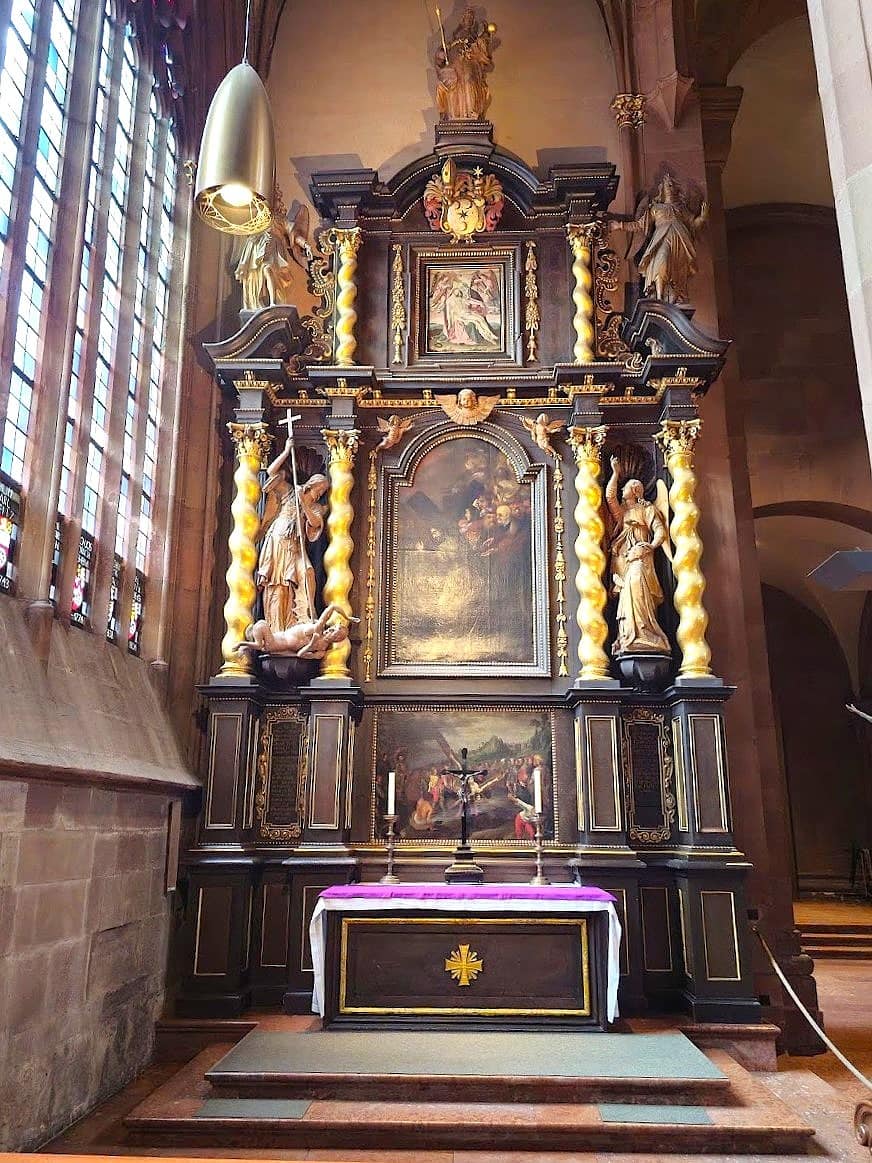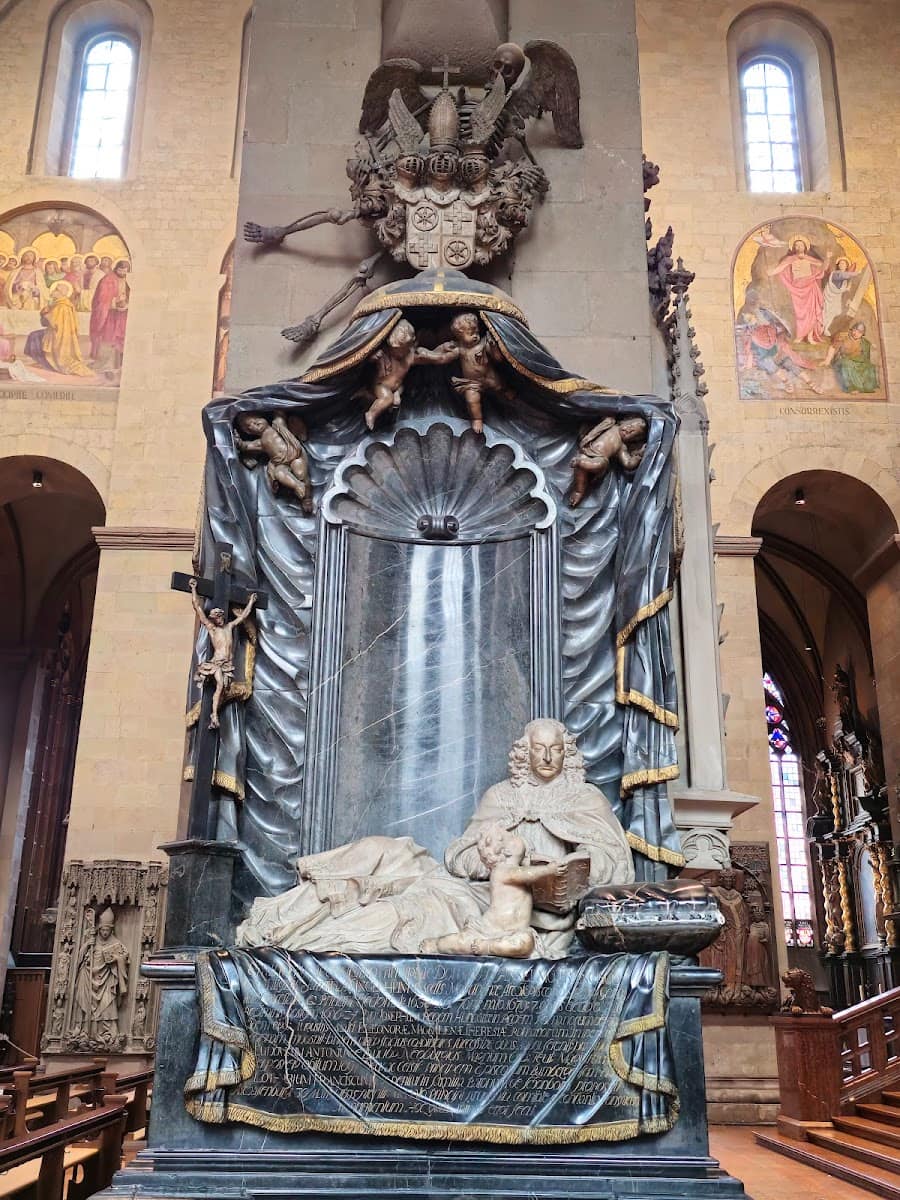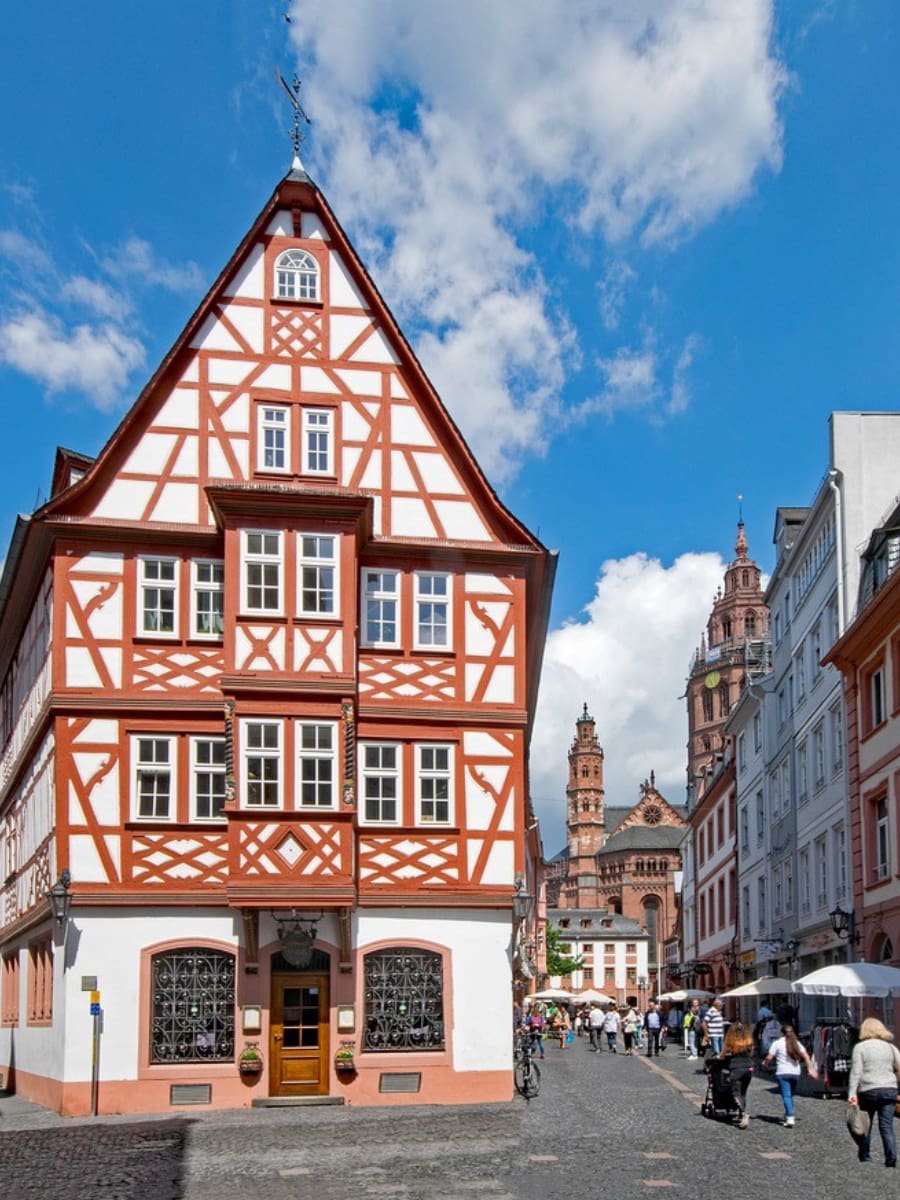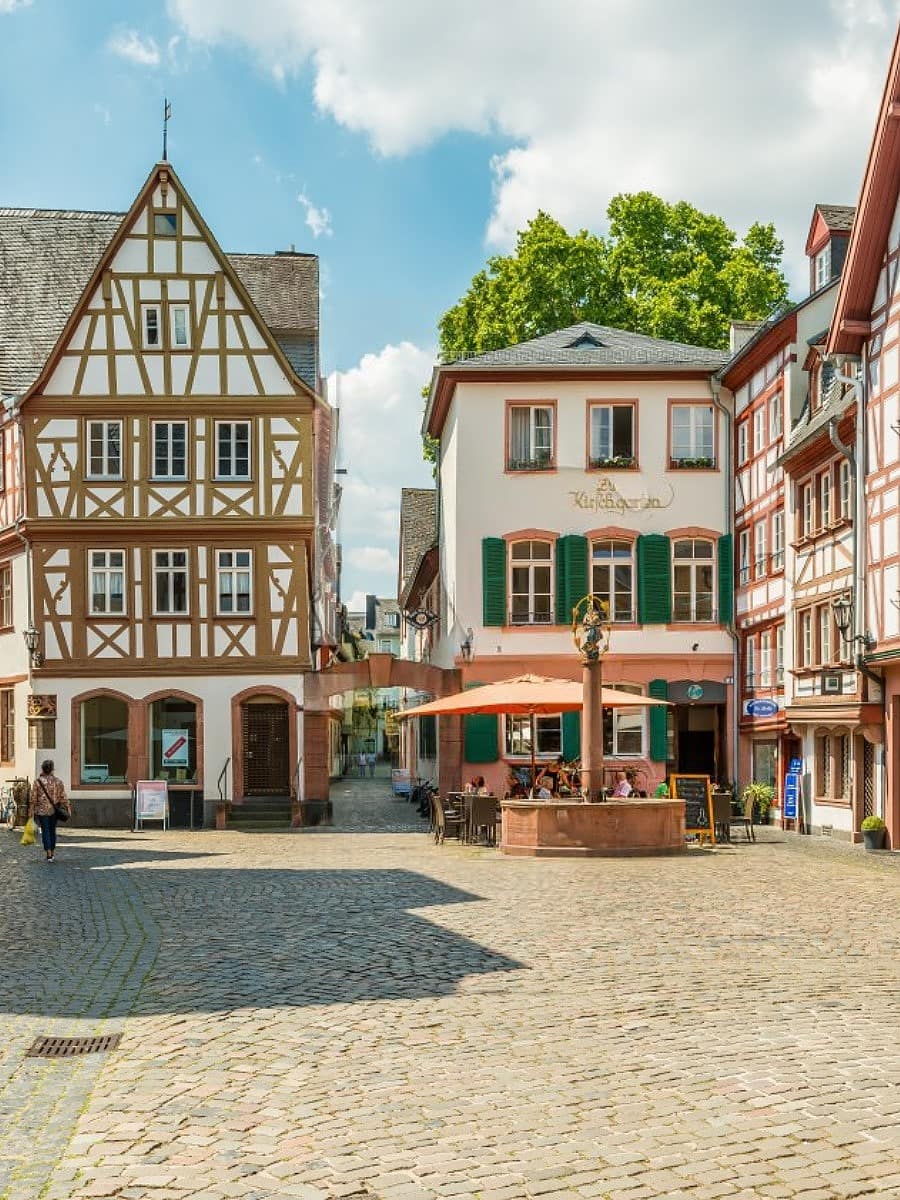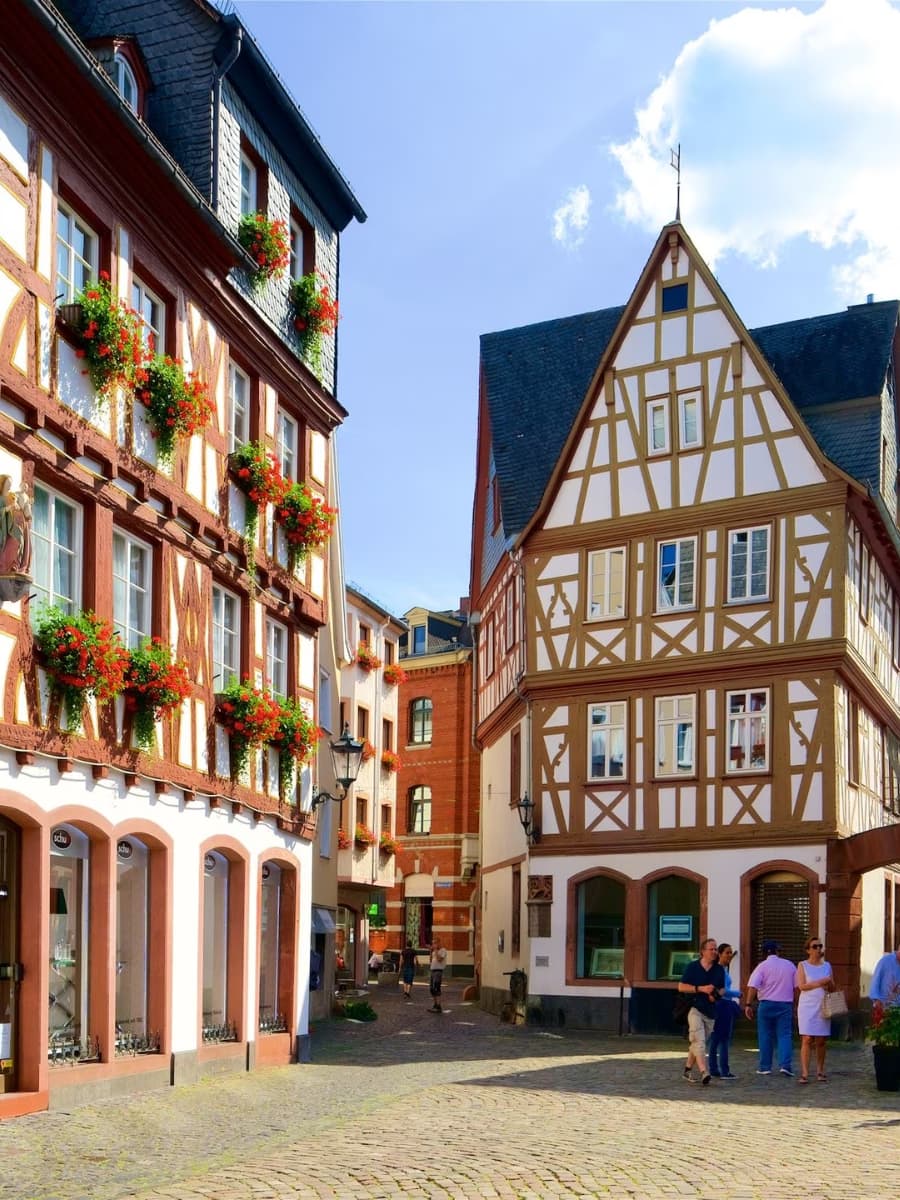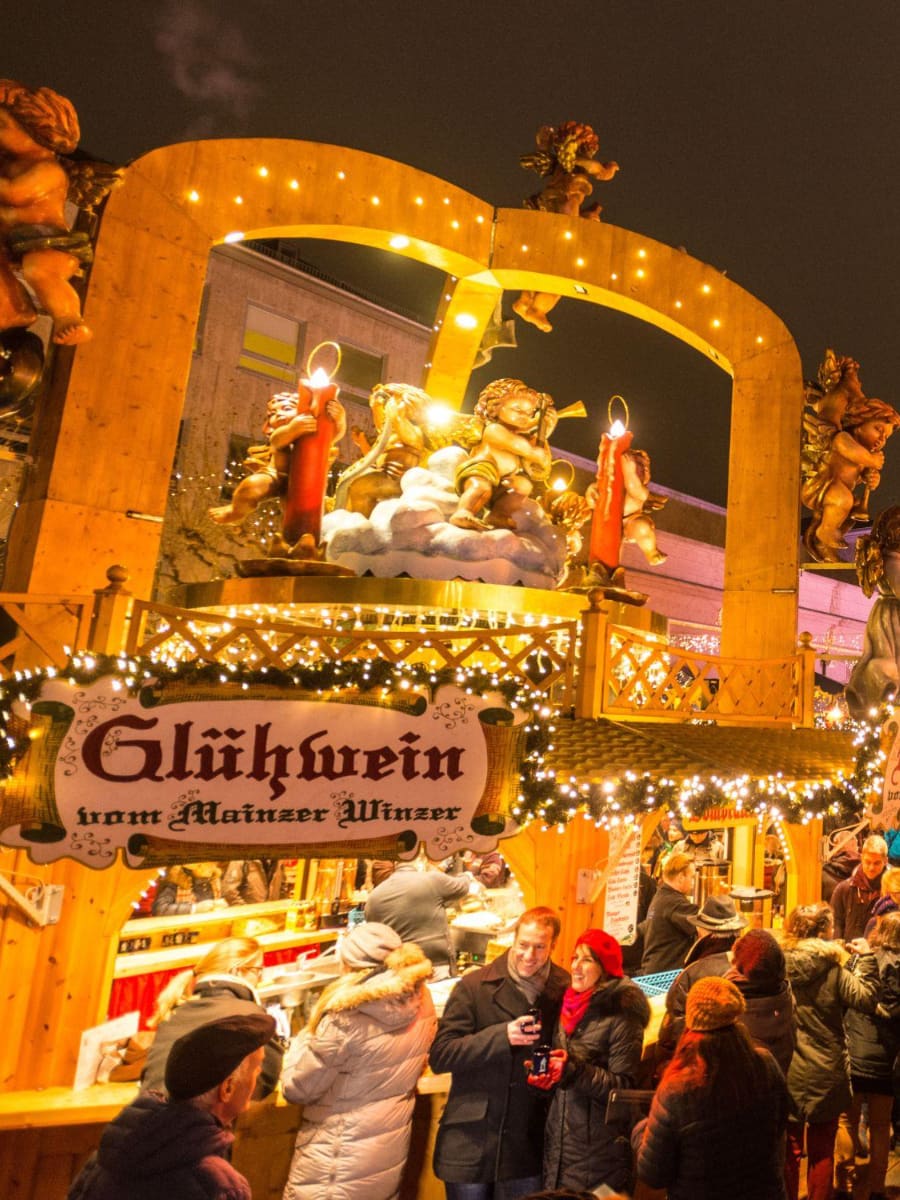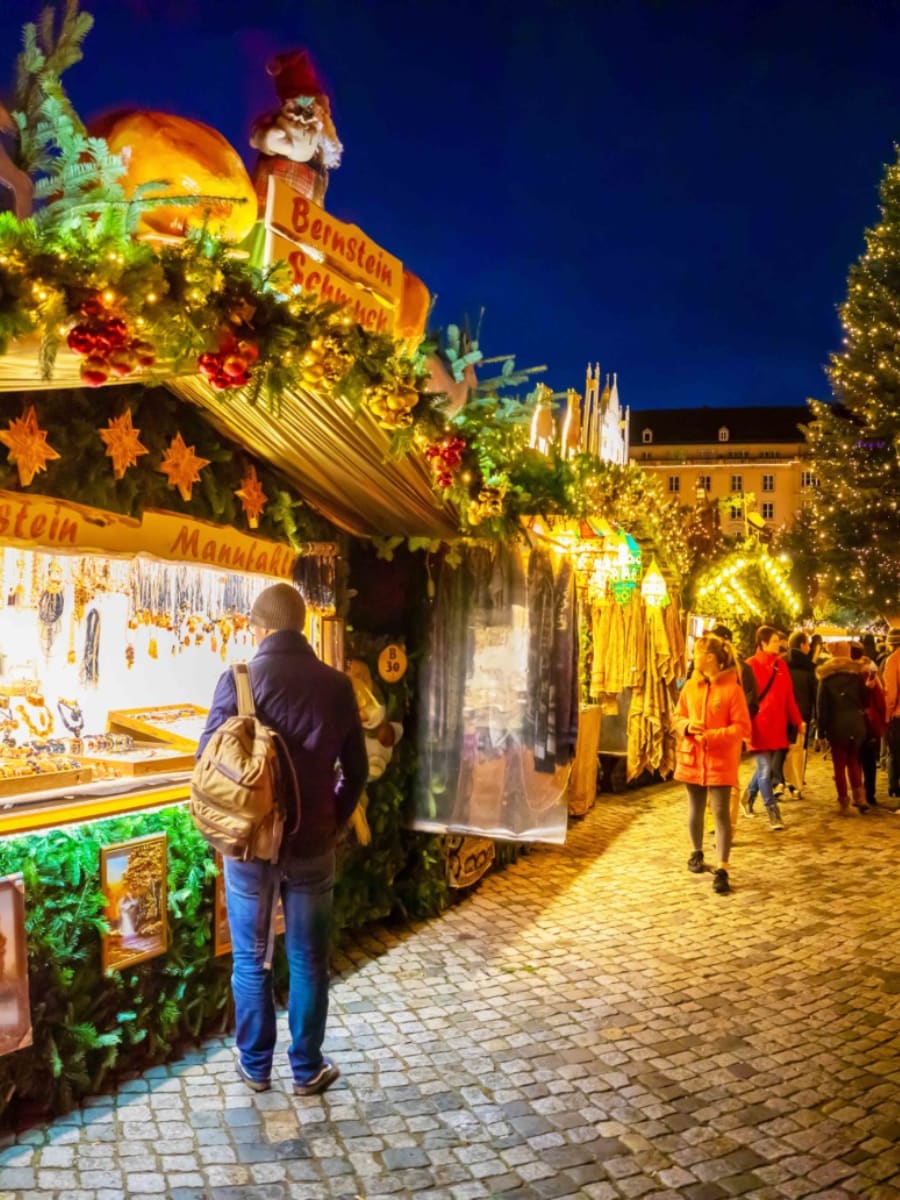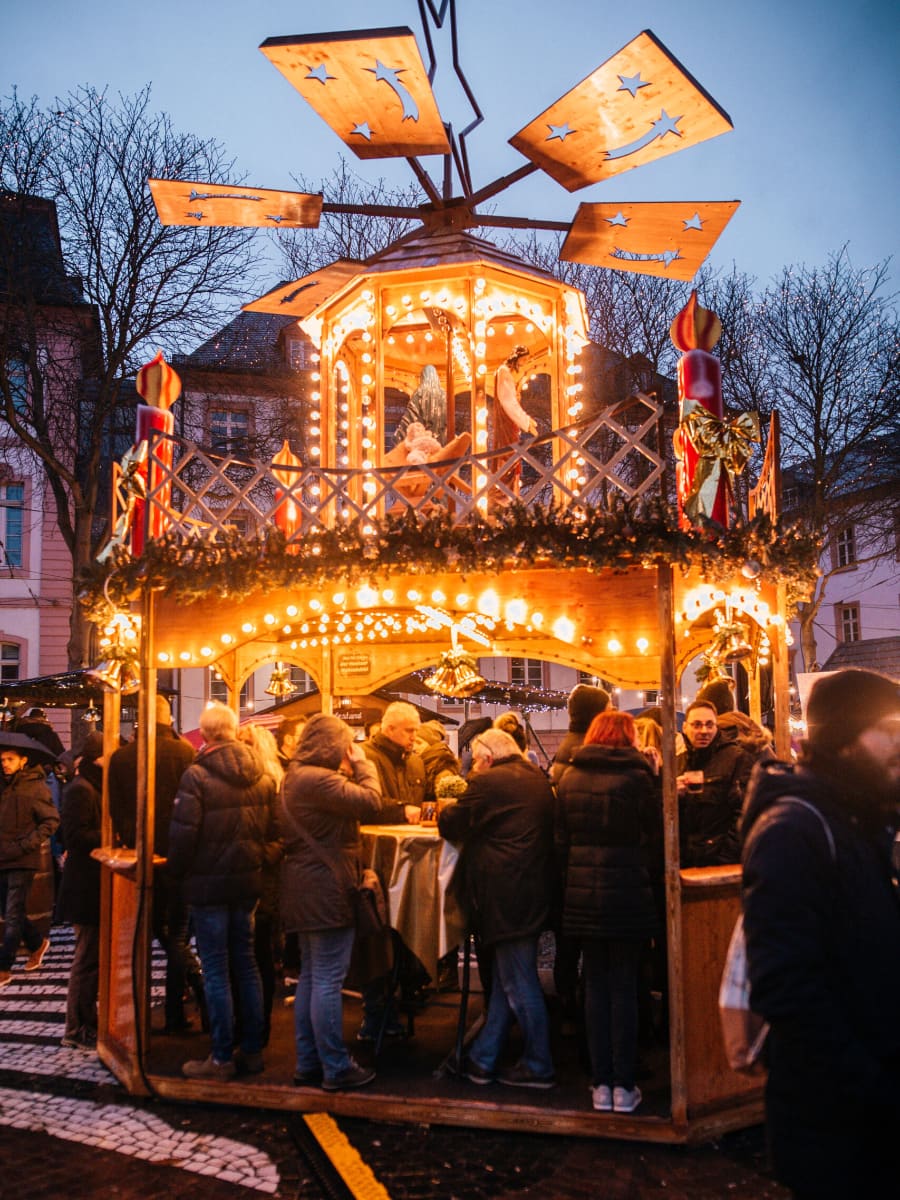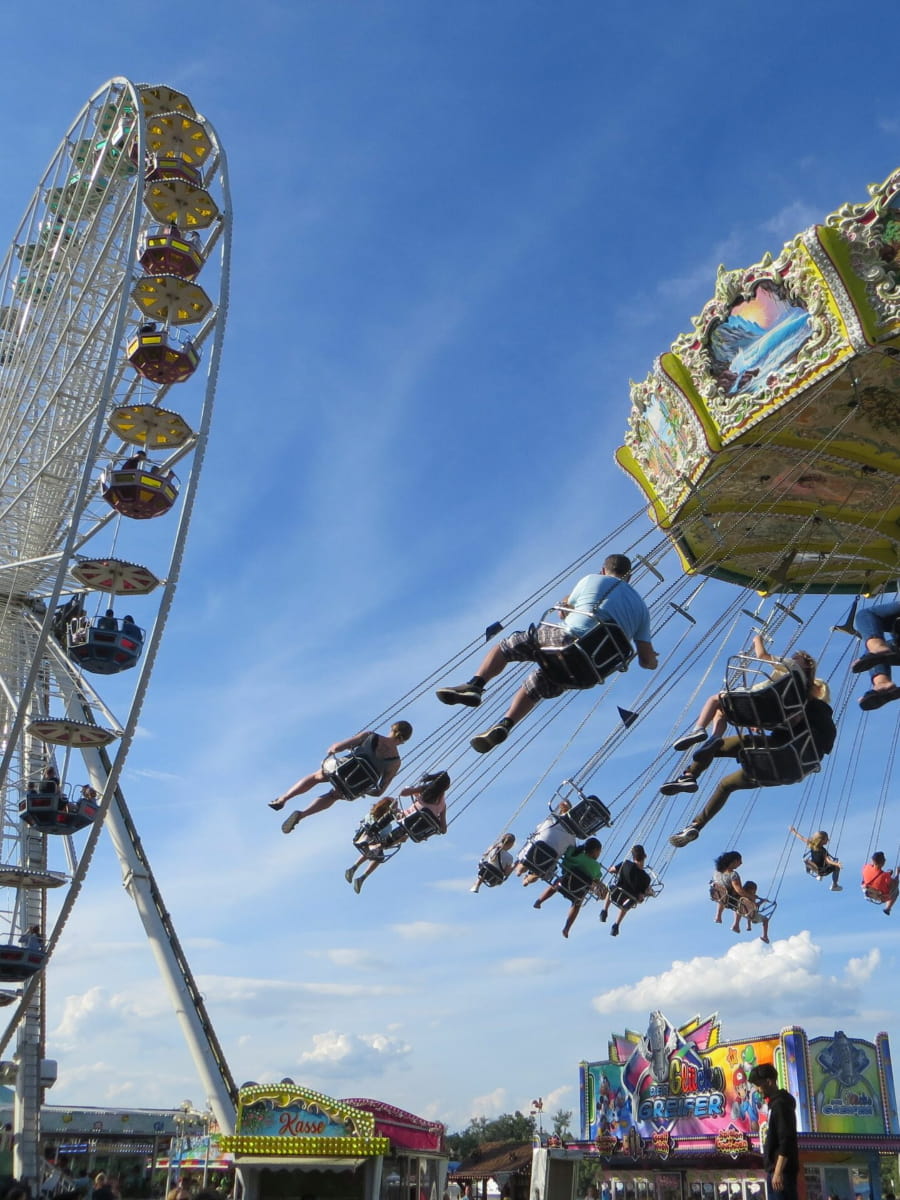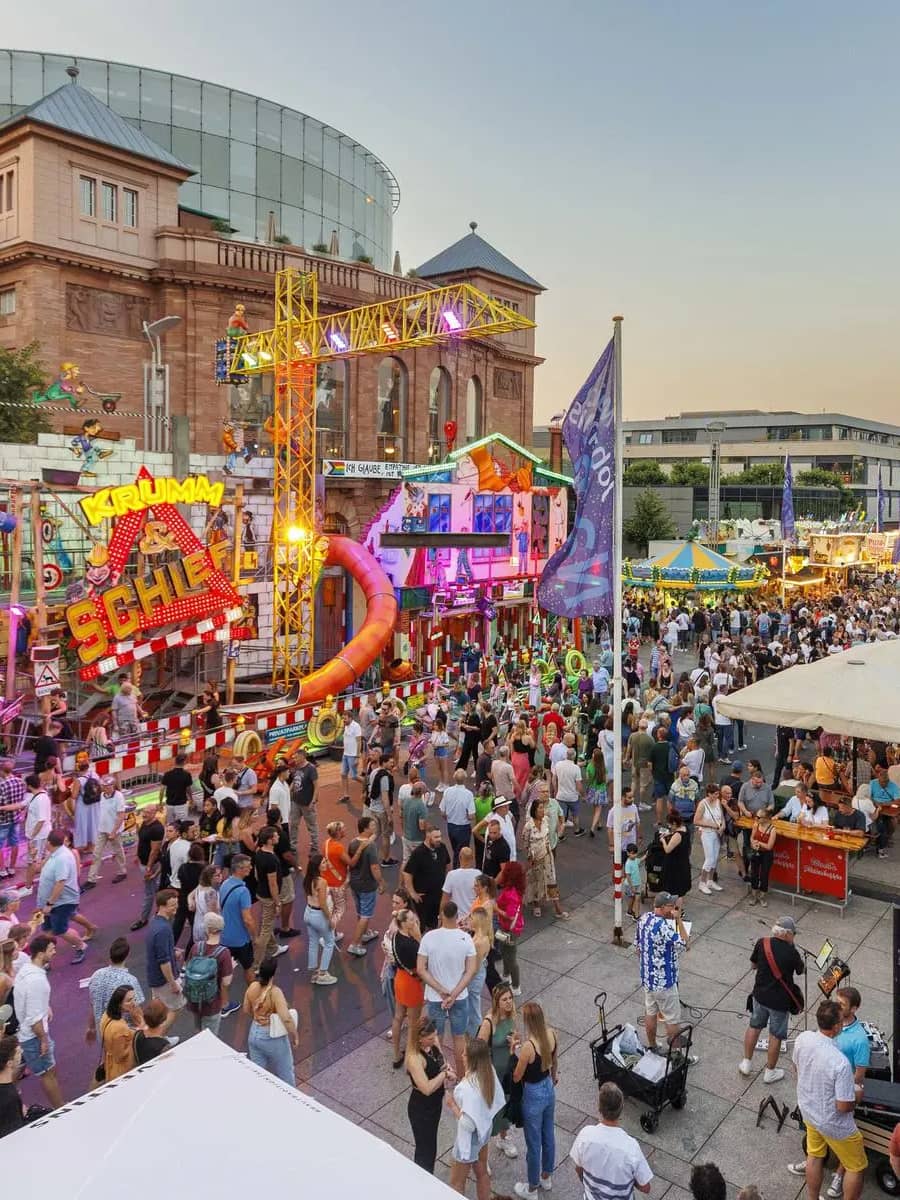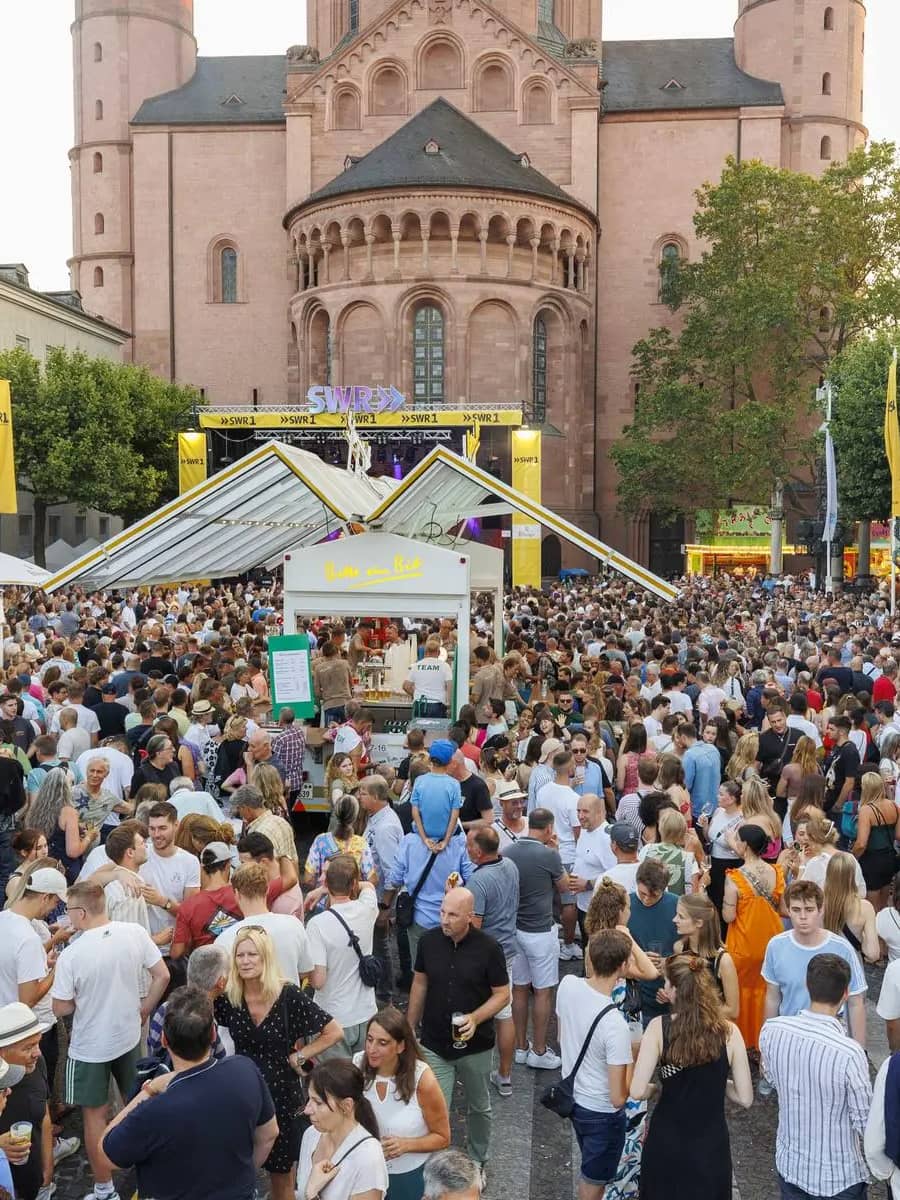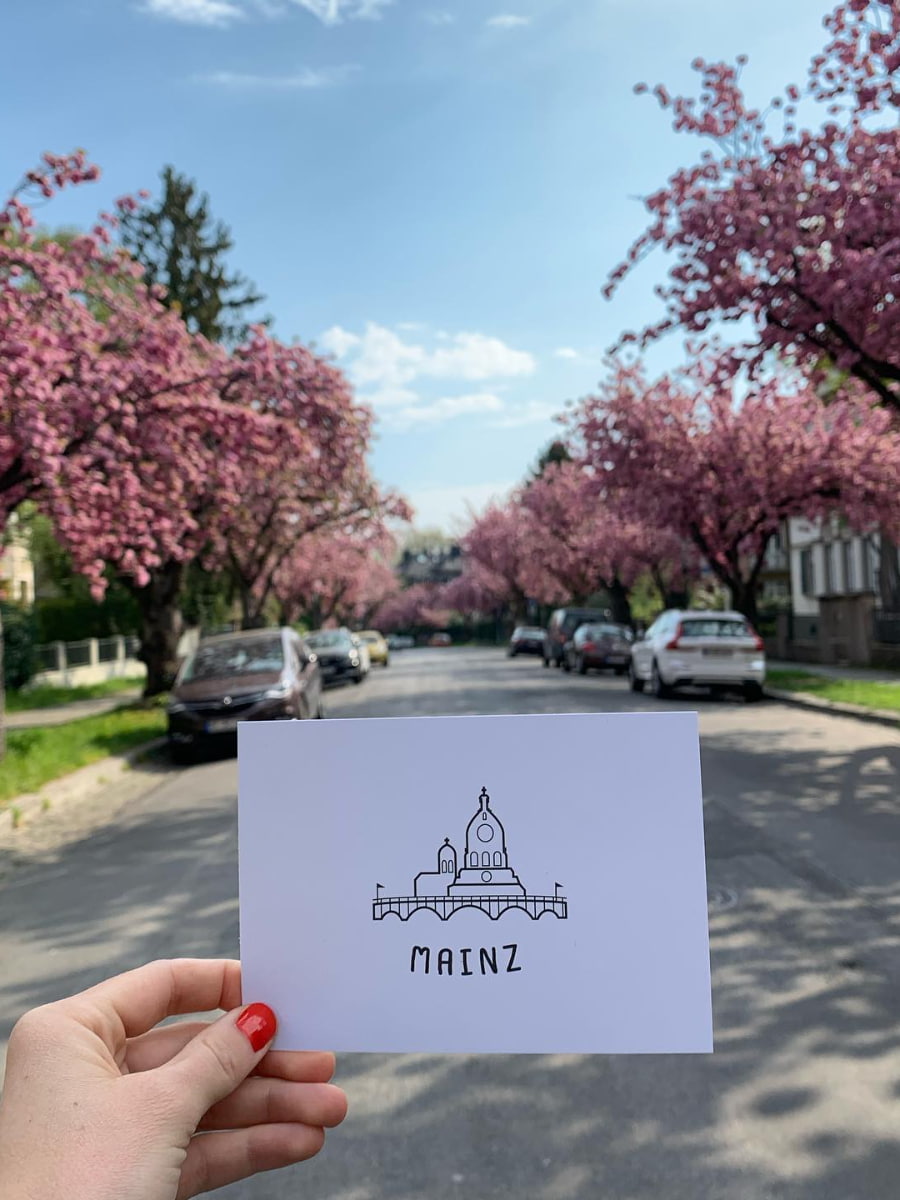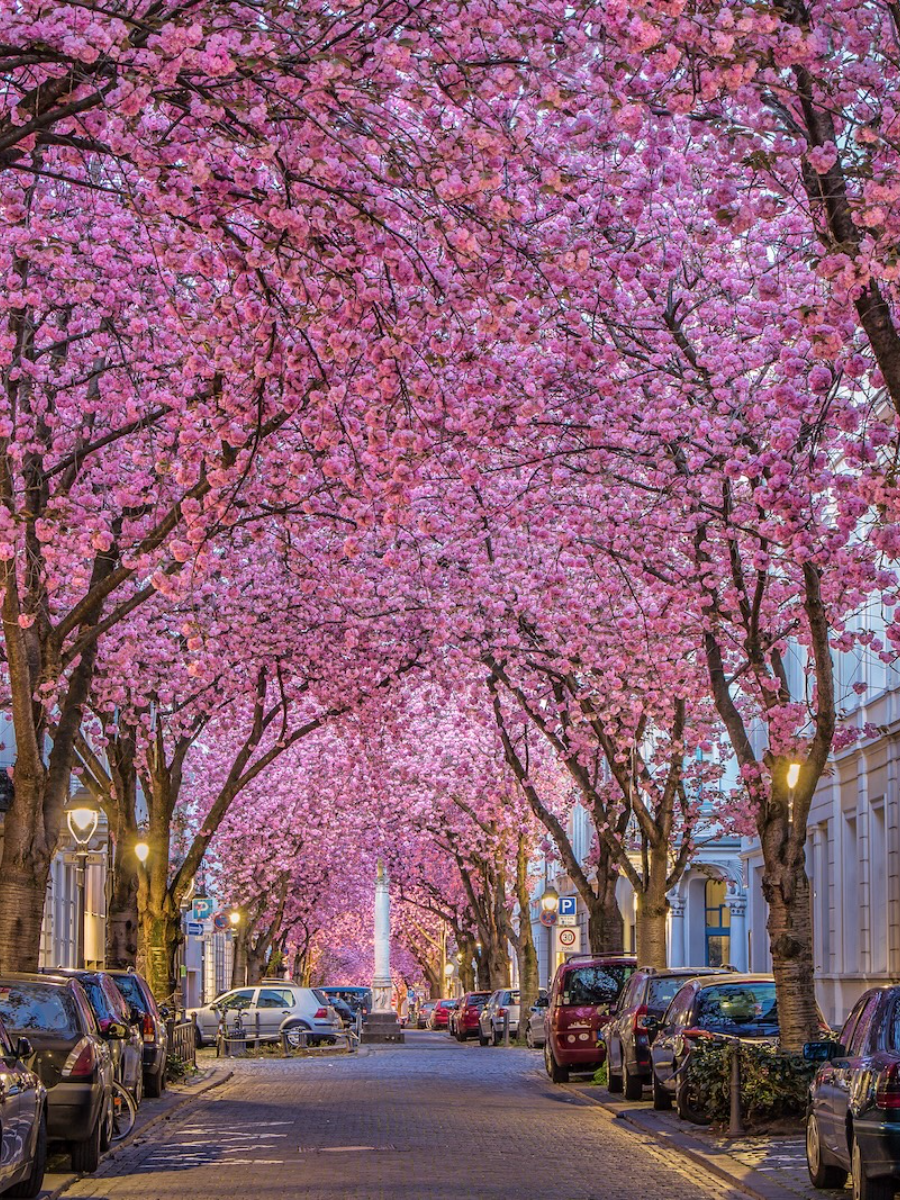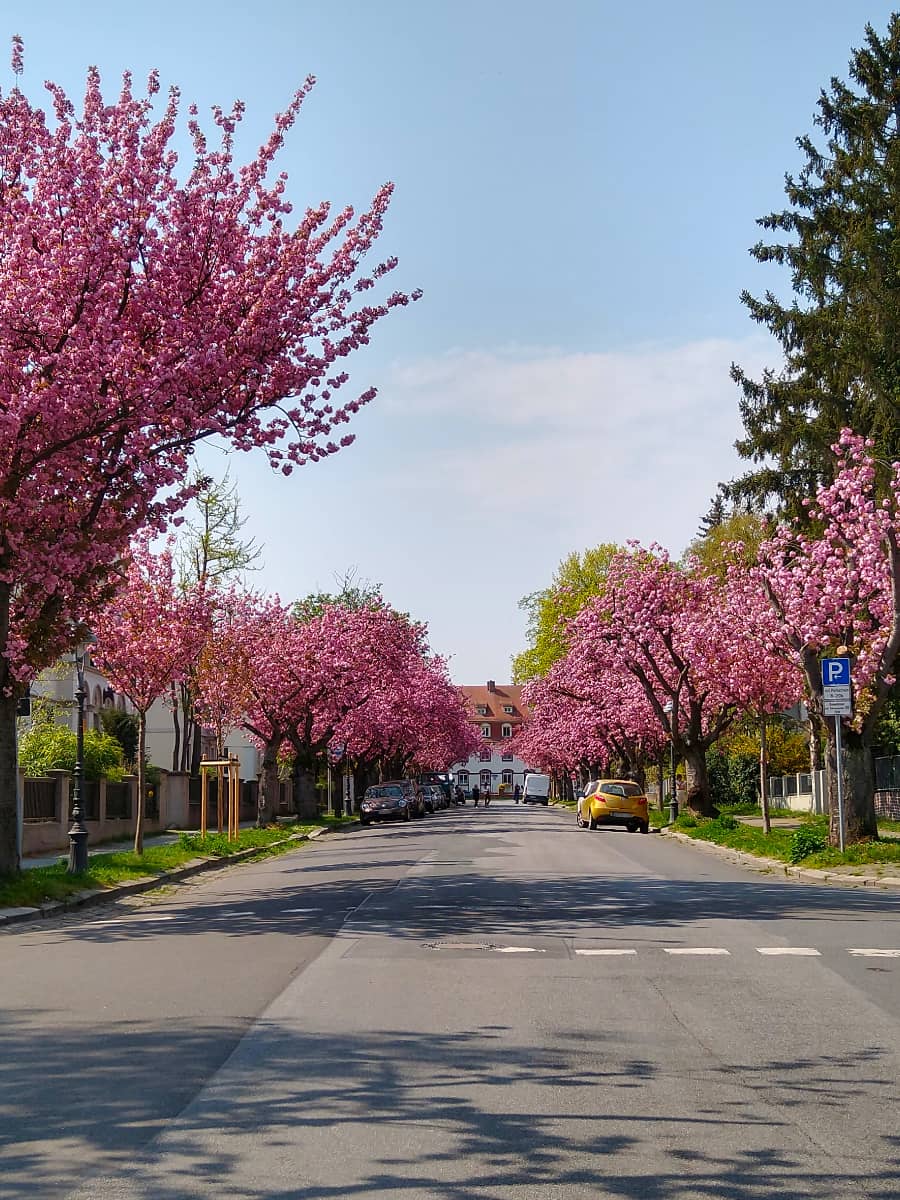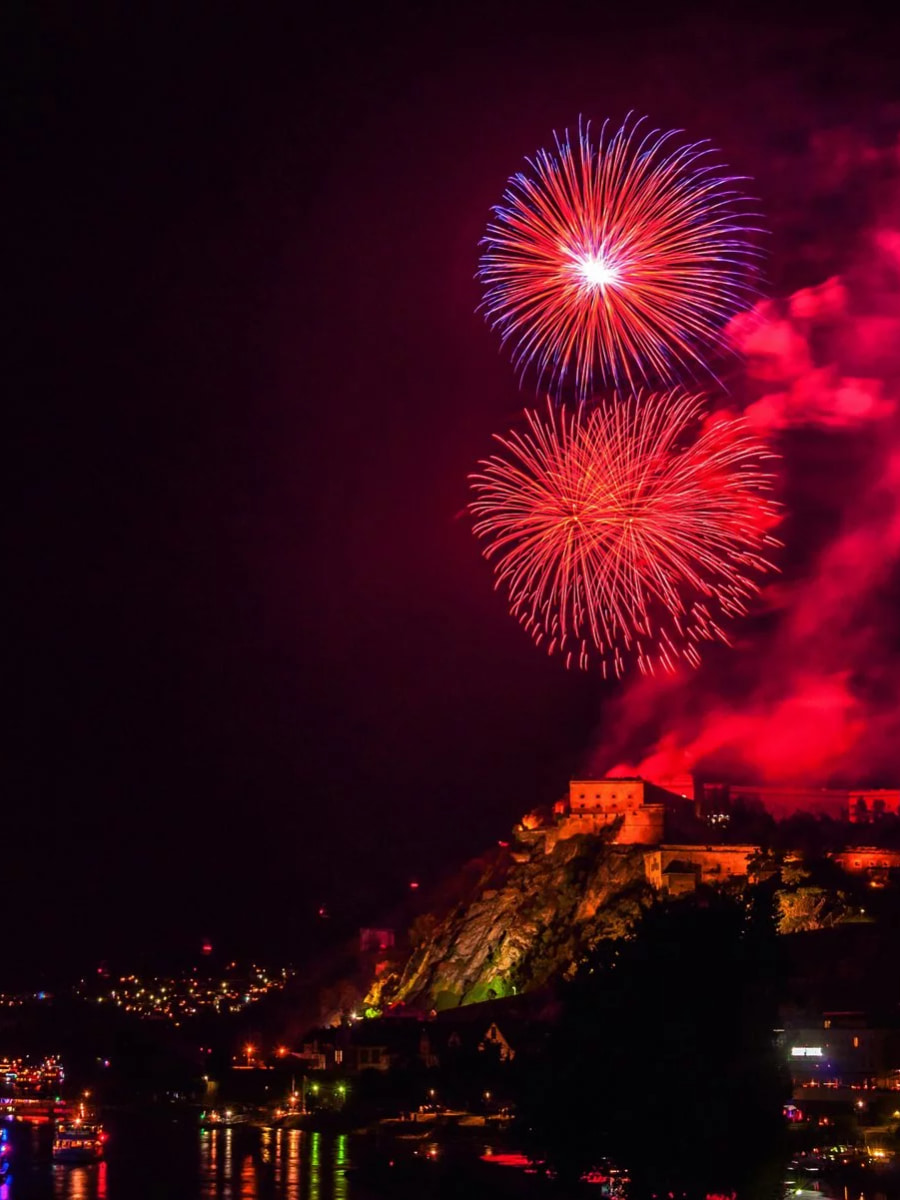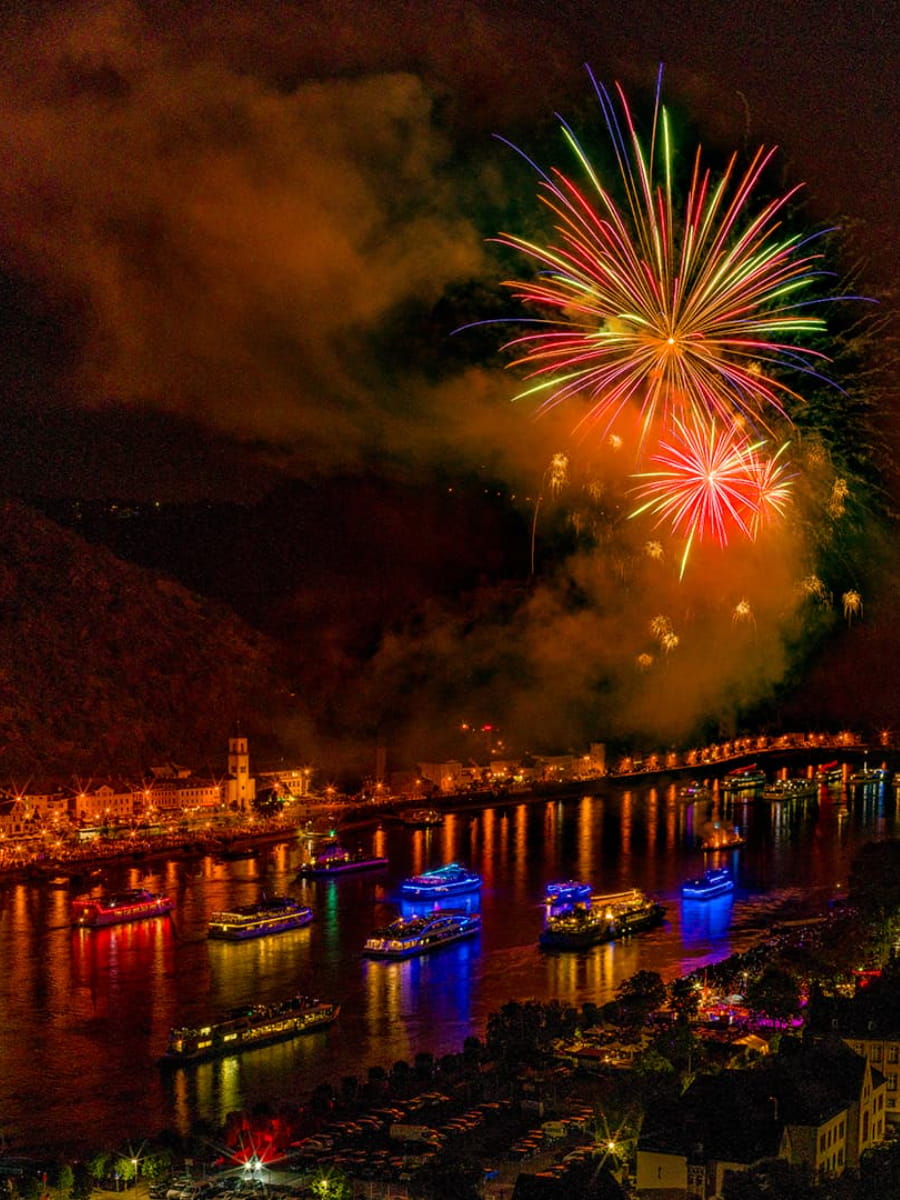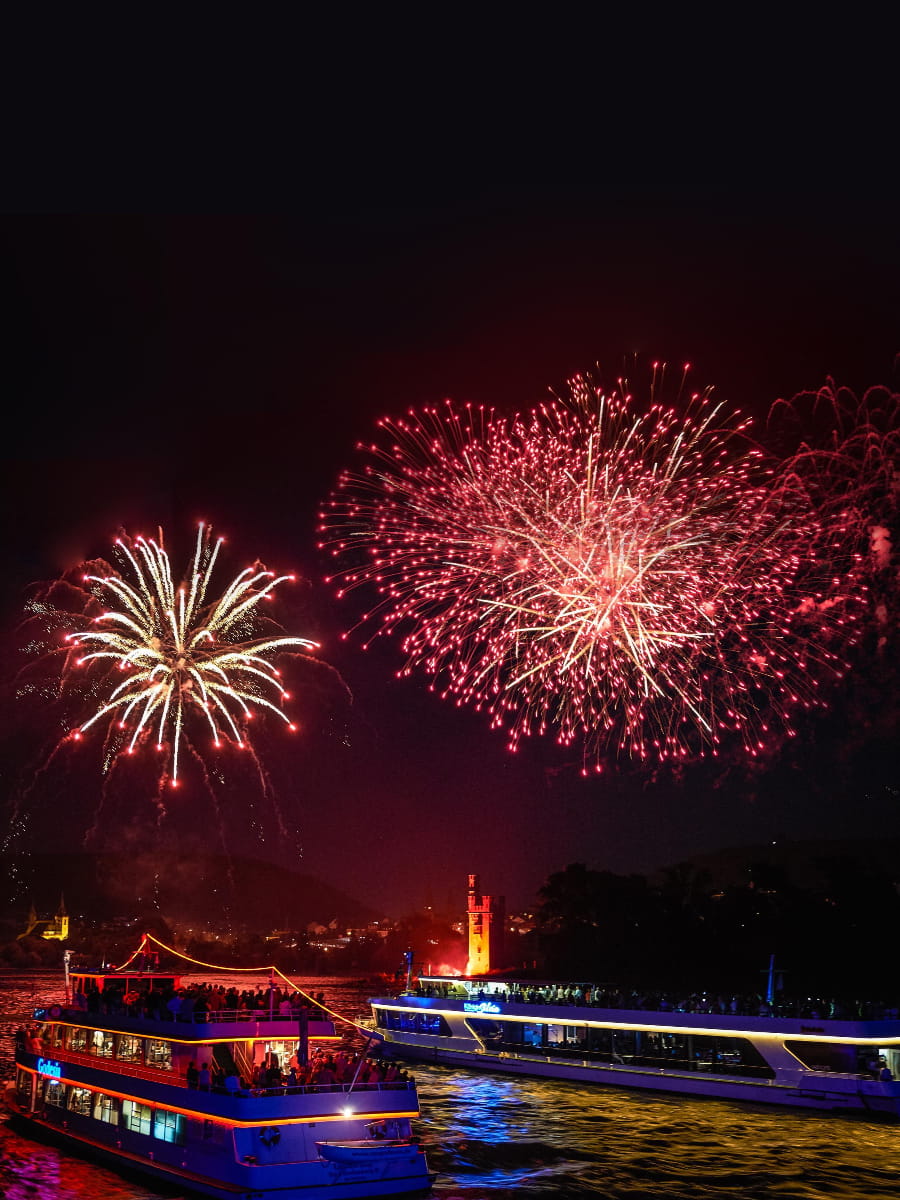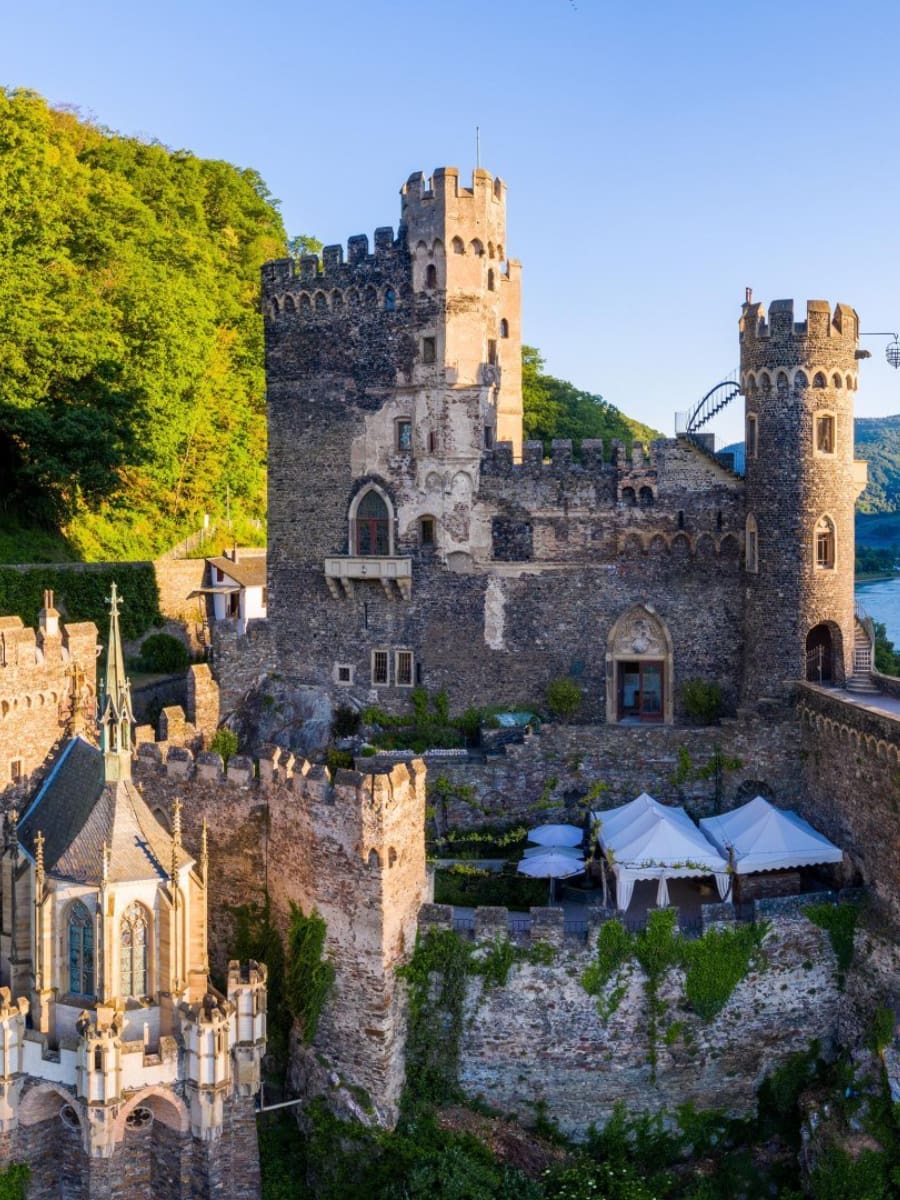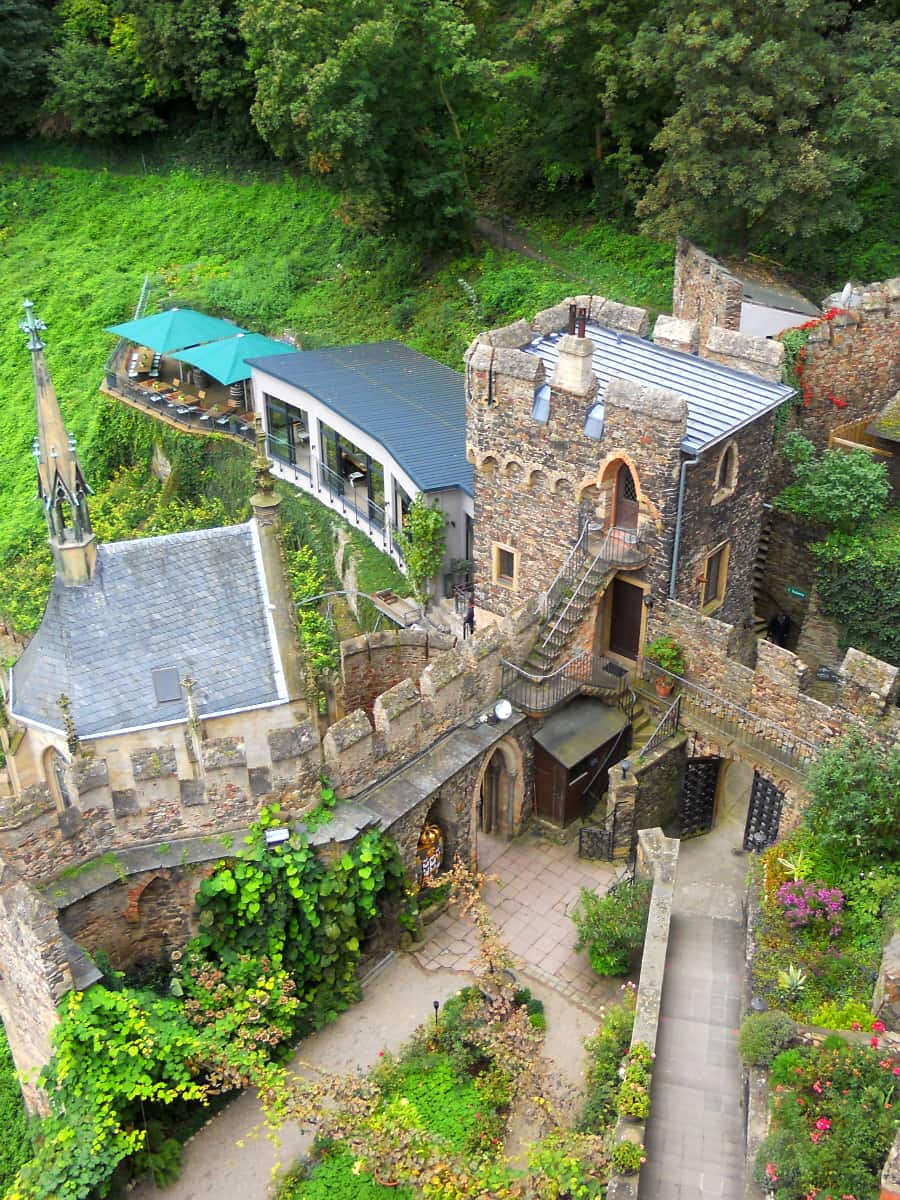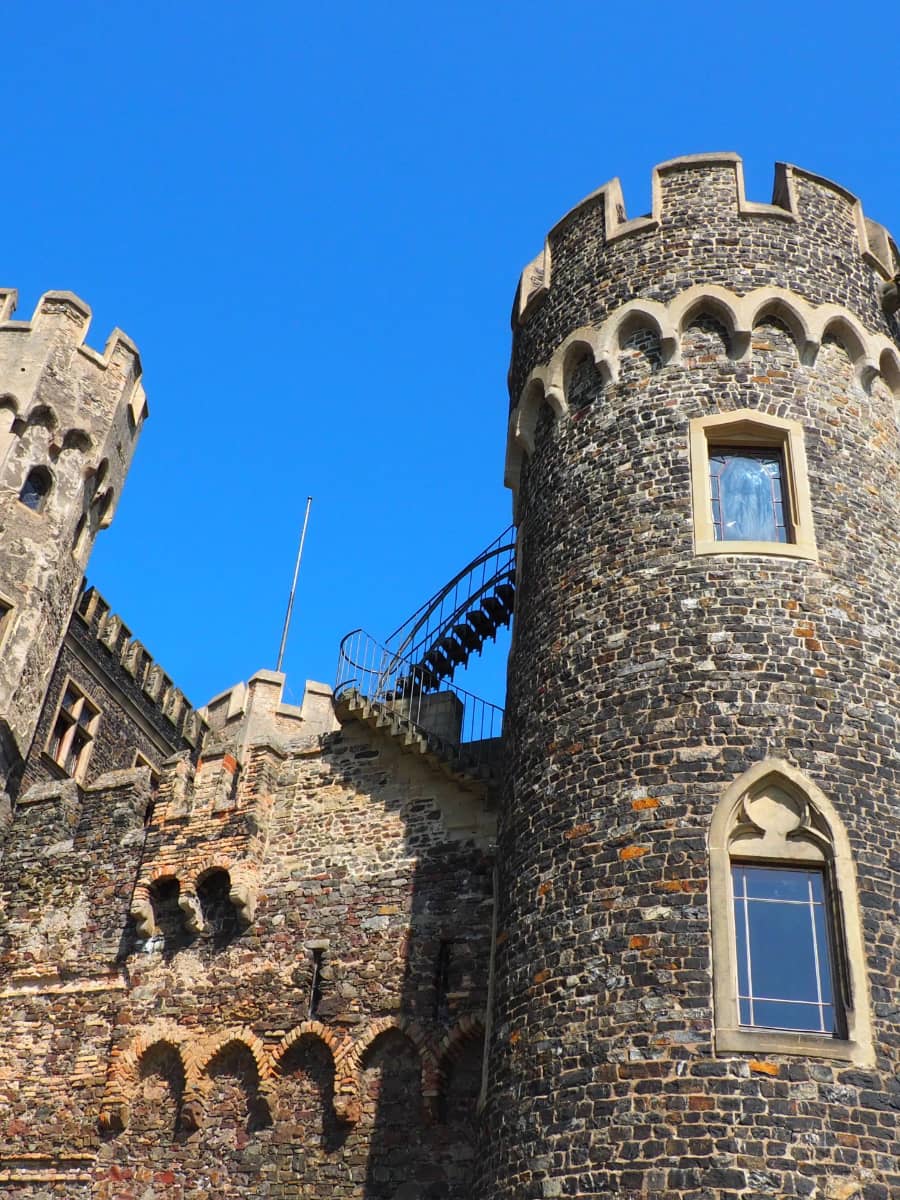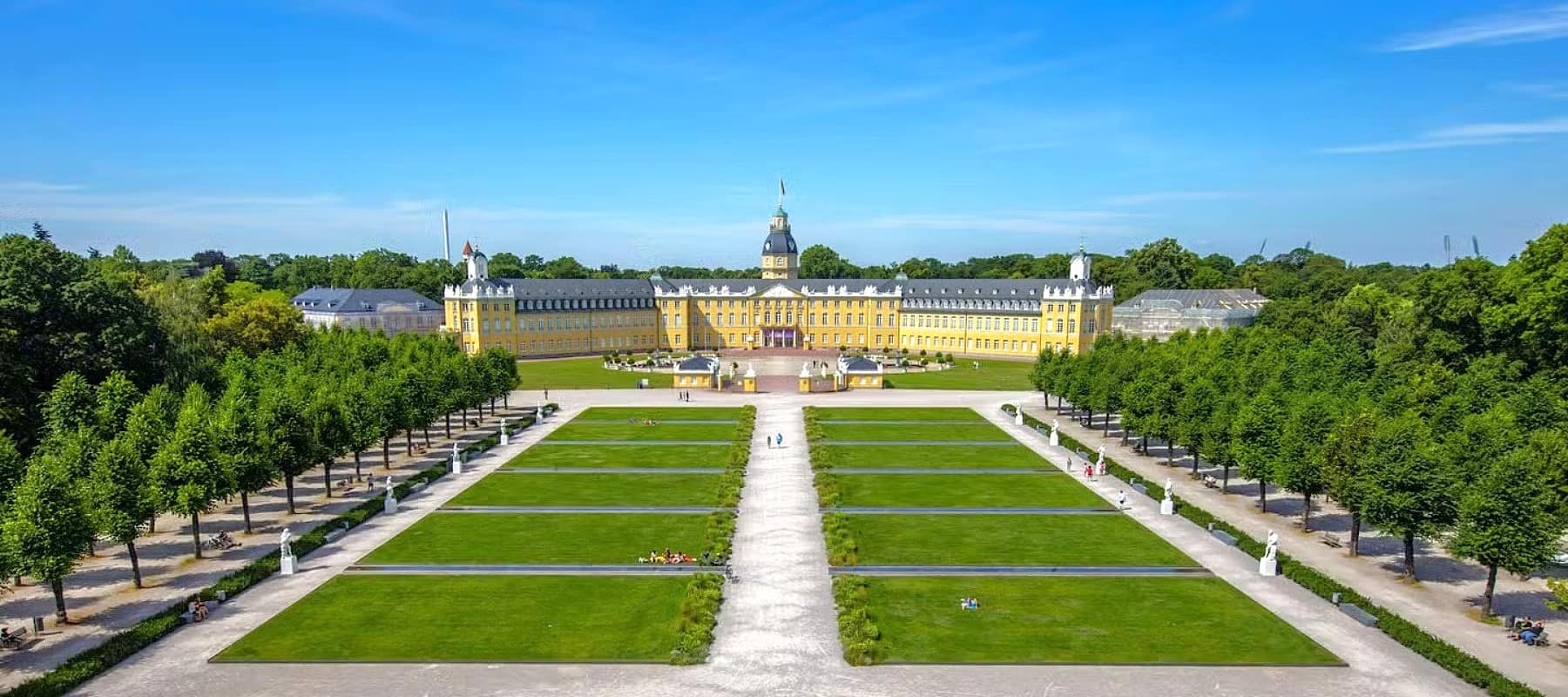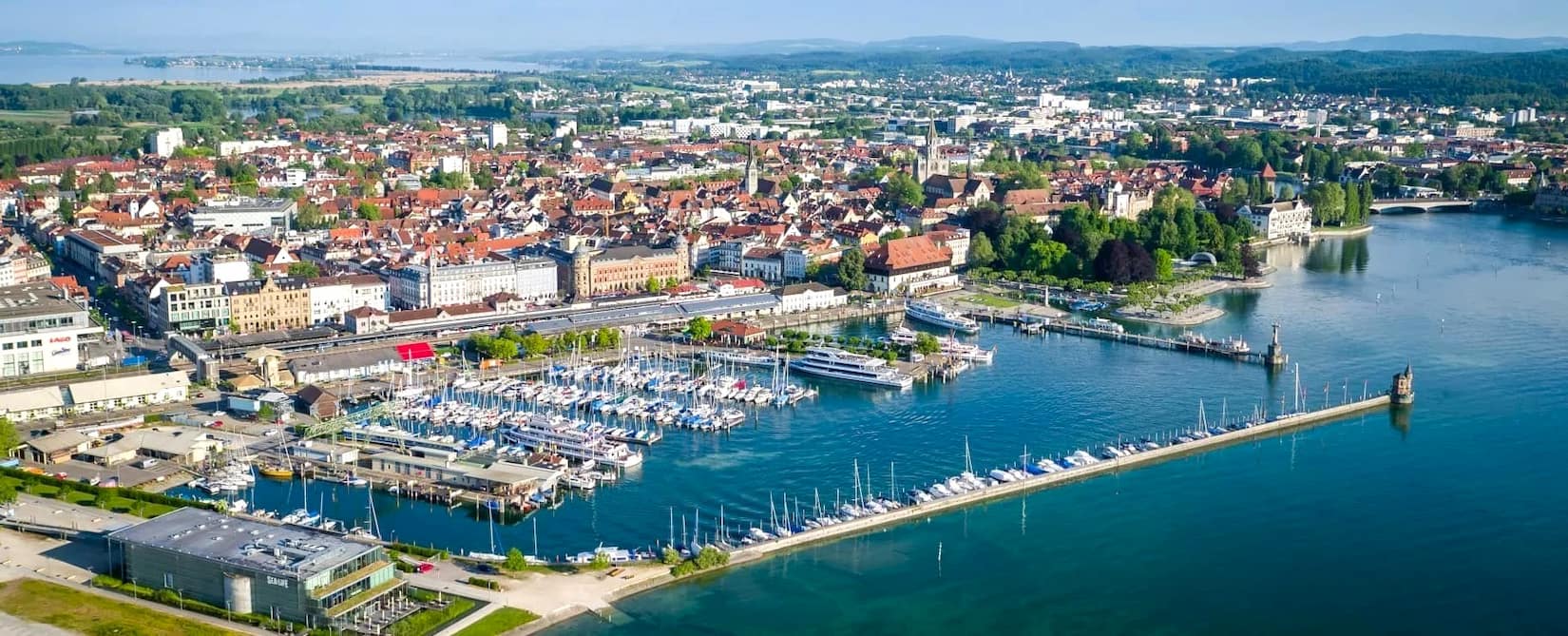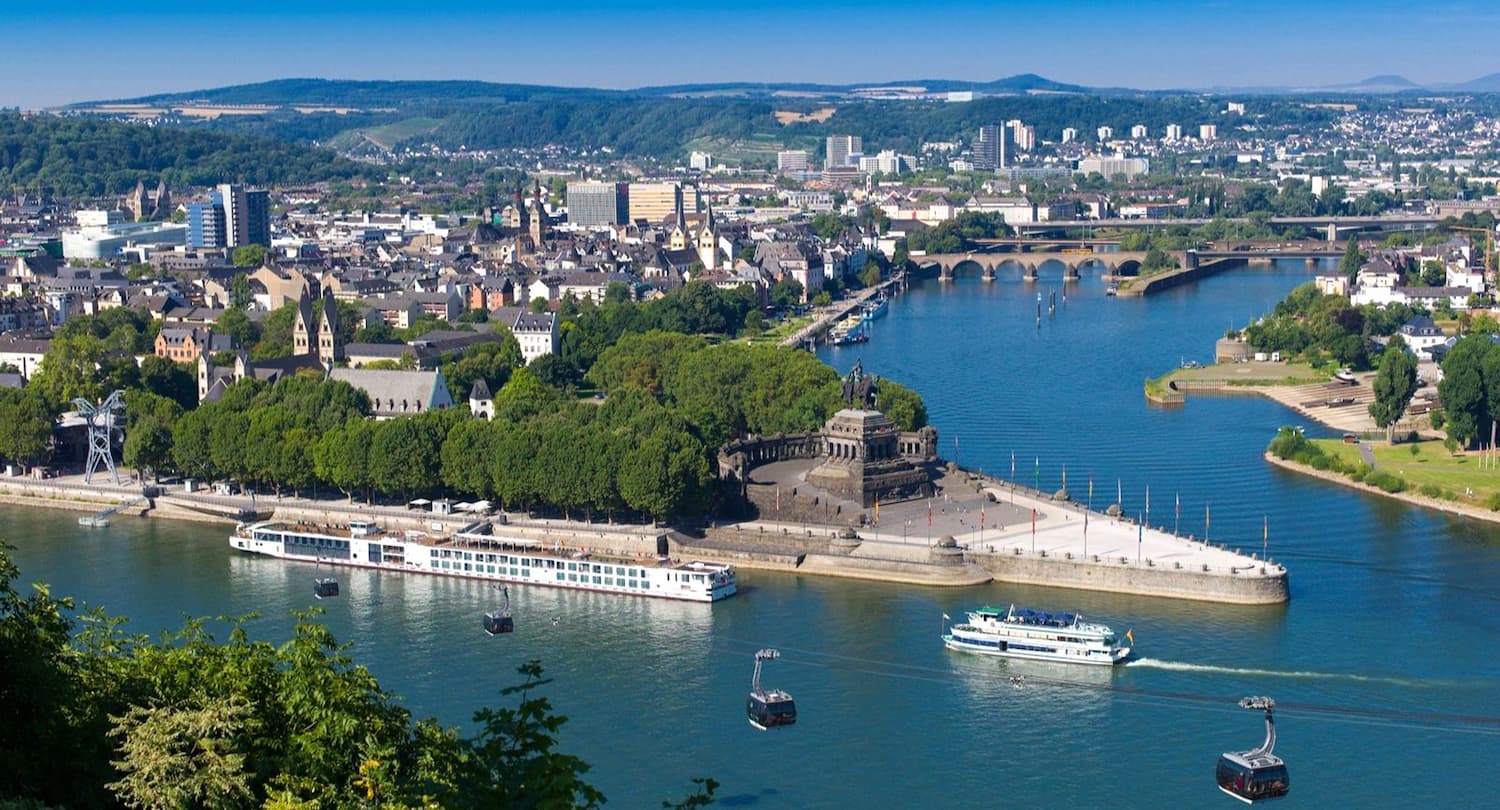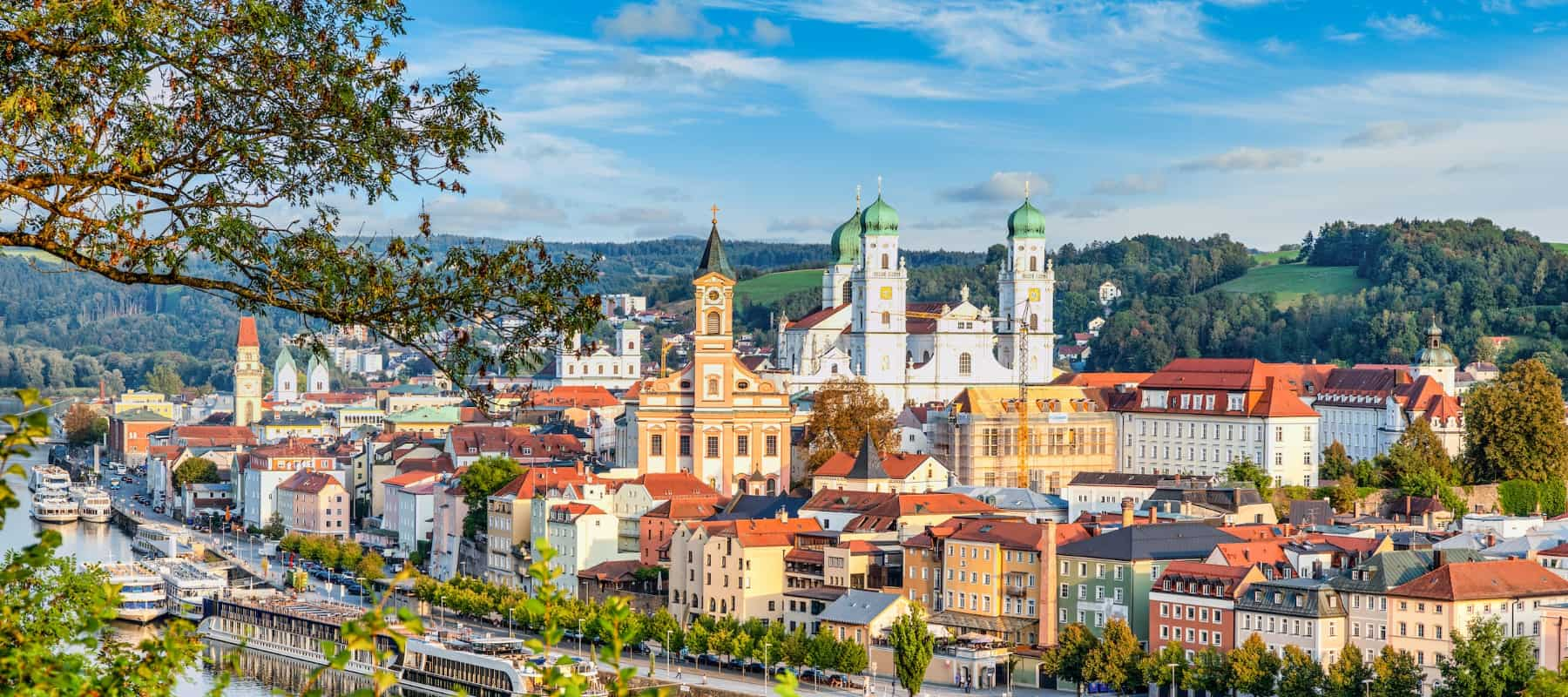🏠 Where to Stay in Mainz
- 💎 Luxury Hotel: Brunfels Hotel, in the Unbound Collection by Hyatt
- ✨ 5-Star: Hilton Mainz
- 🏨 4-Star: Me and All Hotel Mainz, by Hyatt
- 🛏️ 3-Star: H2 Hotel Mainz
- 💸 Cheap: Hotel Garni am Hechenberg
- 🏢 Apartment: Osteiner Hof by The Apartment Suite👨👩👧👦 For Families: Appartement Kirschgarten Mainz Rochusstraße
- 🏩 For Couples: Atrium Hotel Mainz
Join me as I share my favorite discoveries in this Rhine-side gem, where Roman ruins sit alongside cozy wine taverns, and the legacy of Johannes Gutenberg lives on in surprising ways. Whether you’re planning a quick day trip from Frankfurt or a longer stay to explore the region, my guide covers everything from must-see attractions to seasonal events and family-friendly activities that will make your visit to Mainz truly special.
💁 Best Guided Tours
- 1-Hour Mainz Private Guided Walking Tour: Gutenberg and his Bibles from € 125 (⭐ 5.0/5)
- Private Custom Tour with a Local Guide: Mainz from € 53 (⭐ 4.9/5)
- Mainz Private Walking Tour from € 85 (⭐ 4.8/5)
- Mainz Private Guided Walking Tour: Jewish Mainz from € 249 (⭐ 5.0/5)
Best Things to Do in Mainz, Germany
1. Gutenberg Museum
Printing revolution. Located in Mainz’s Old Town opposite the cathedral, the Gutenberg Museum celebrates Johannes Gutenberg, the “Man of the Millennium” who invented movable type printing. Founded in 1900 to honor Mainz’s most famous son, this is one of the world’s oldest printing museums.
Priceless treasures. The highlight of my visit was seeing two original Gutenberg Bibles from the mid-15th century displayed in a walk-in vault. These are considered some of the finest books ever created and represent the beginning of mass communication.
Interactive experience. I loved watching the hourly demonstrations at the reconstructed Gutenberg workshop, where staff show how printing worked in the 15th century. The hands-on exhibits make the historical significance of Gutenberg’s invention come alive.
Diverse collections. Beyond Gutenberg’s work, I explored medieval manuscripts, historic prints, typesetting machines, and printing presses spanning centuries. The museum’s 3,000 square meters house everything from ancient writing methods to modern book culture.
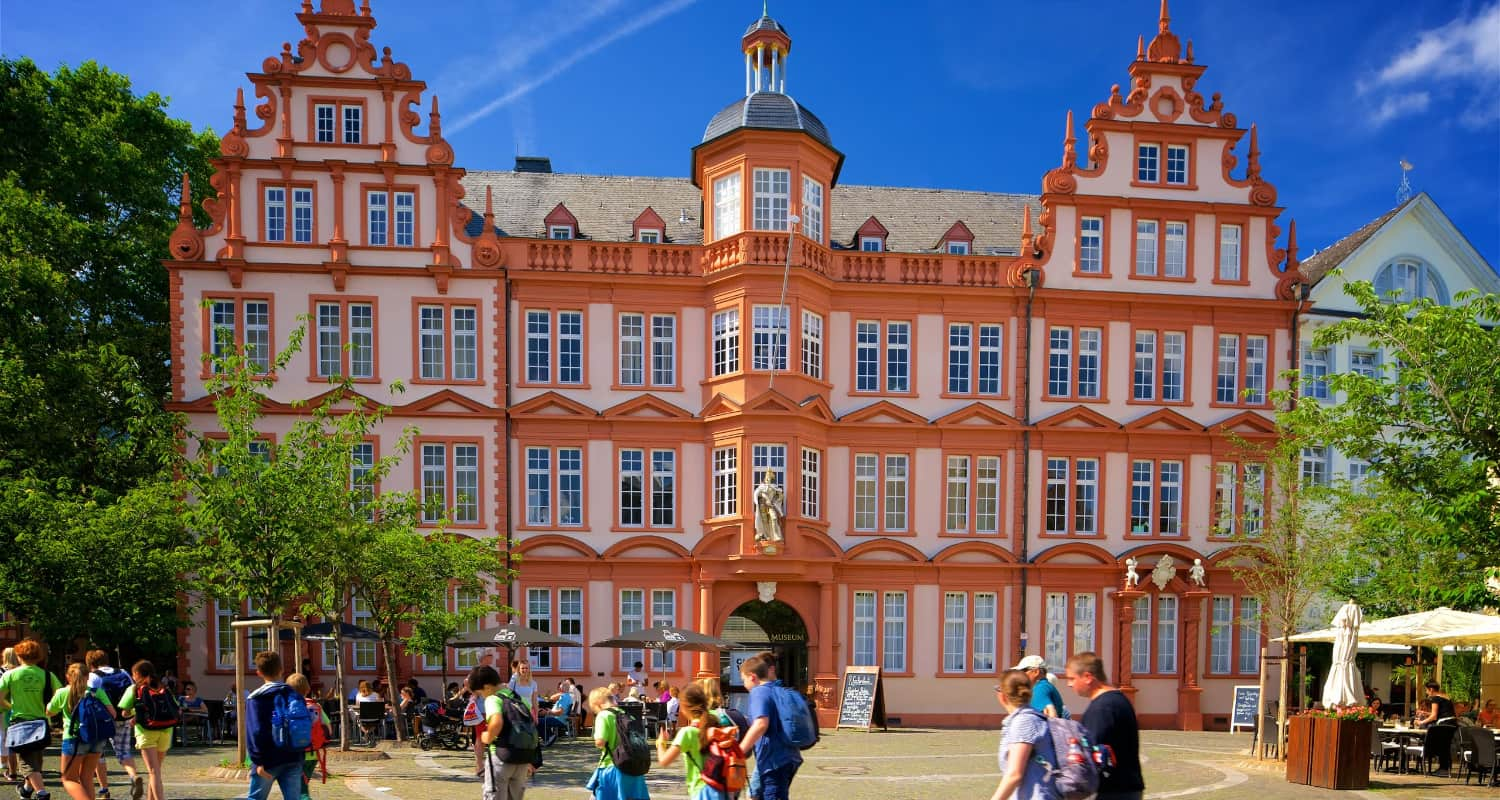
| Admission Prices | Cost |
|---|---|
| Adults | €10.00 |
| Reduced rate | €6.00 |
| Children (4-18) | €4.00 |
| Family ticket | €16.00 |
Visitor information. The museum is open Tuesday to Saturday from 9am-6pm and Sundays from 9am-6pm. Audio guides are available in German, English, French, and Korean. For the full experience, I recommend setting aside at least 2 hours for your visit.
⭐ Best Activities
- 1-Hour Mainz Private Guided Walking Tour: Gutenberg and his Bibles – Discover the fascinating history of Johannes Gutenberg and his revolutionary printing press on this private walking tour of Mainz, meeting outside the main entrance of the Gutenberg Museum.
2. St. Stephan’s Church (Stephanskirche) – Chagall Windows
Blue light magic. St. Stephan’s Church took my breath away with its ethereal blue glow. The famous Chagall windows bathe the interior in a mesmerizing azure light that creates an atmosphere unlike any church I’ve visited before.
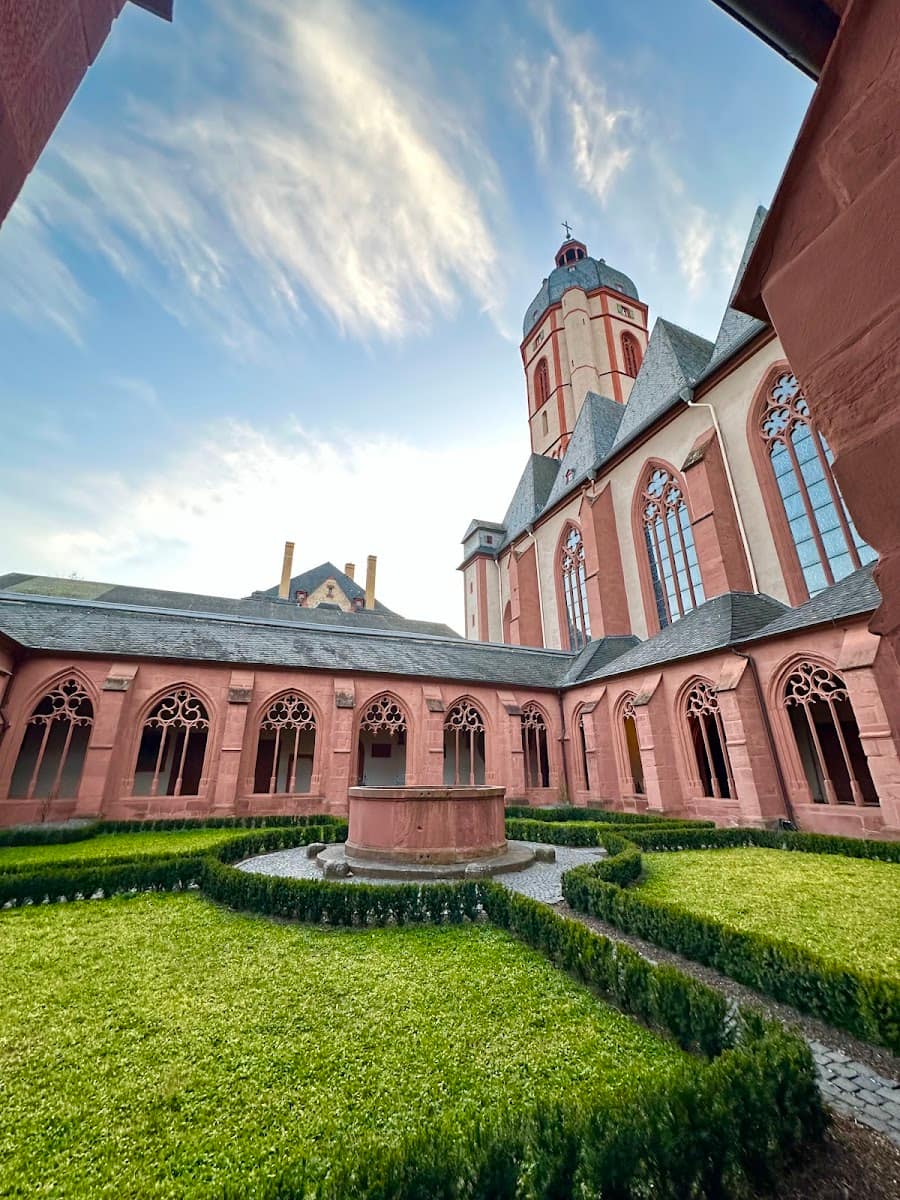
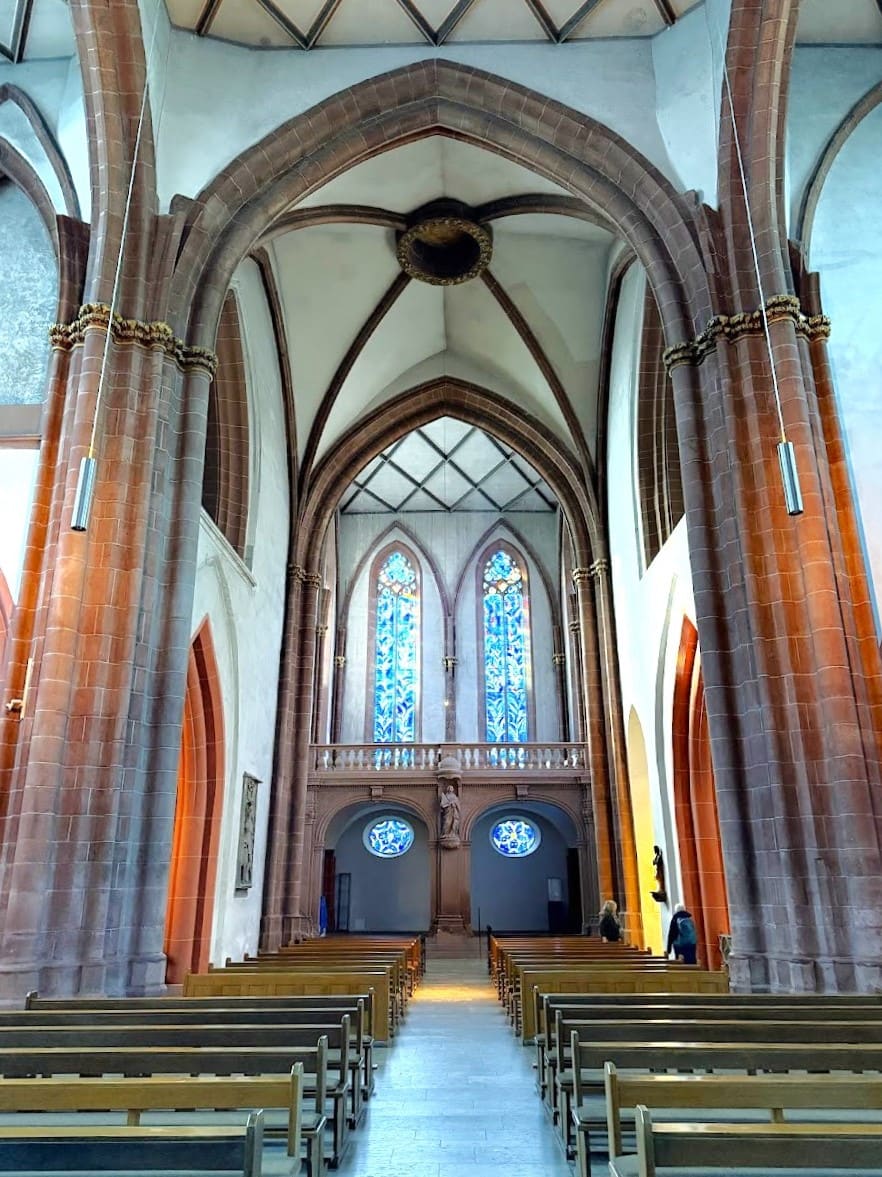
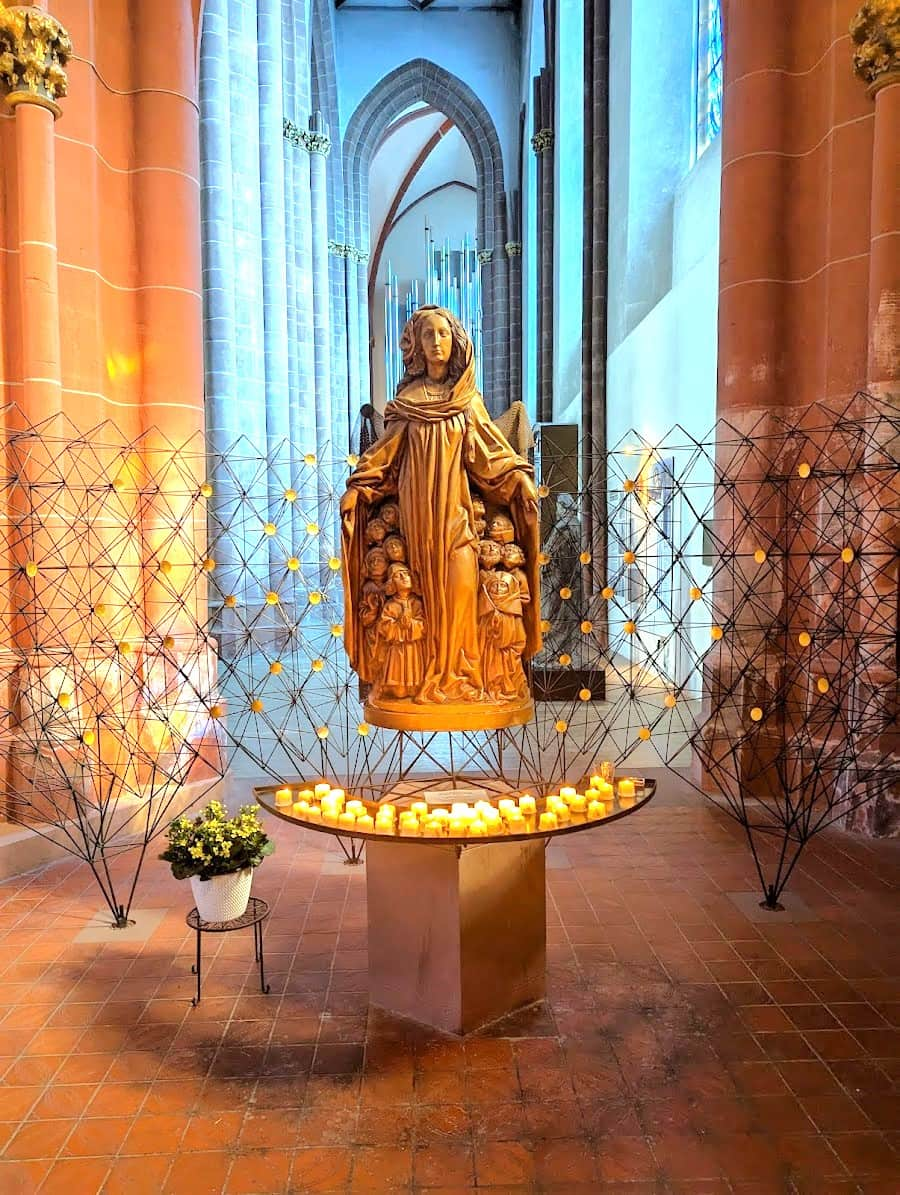
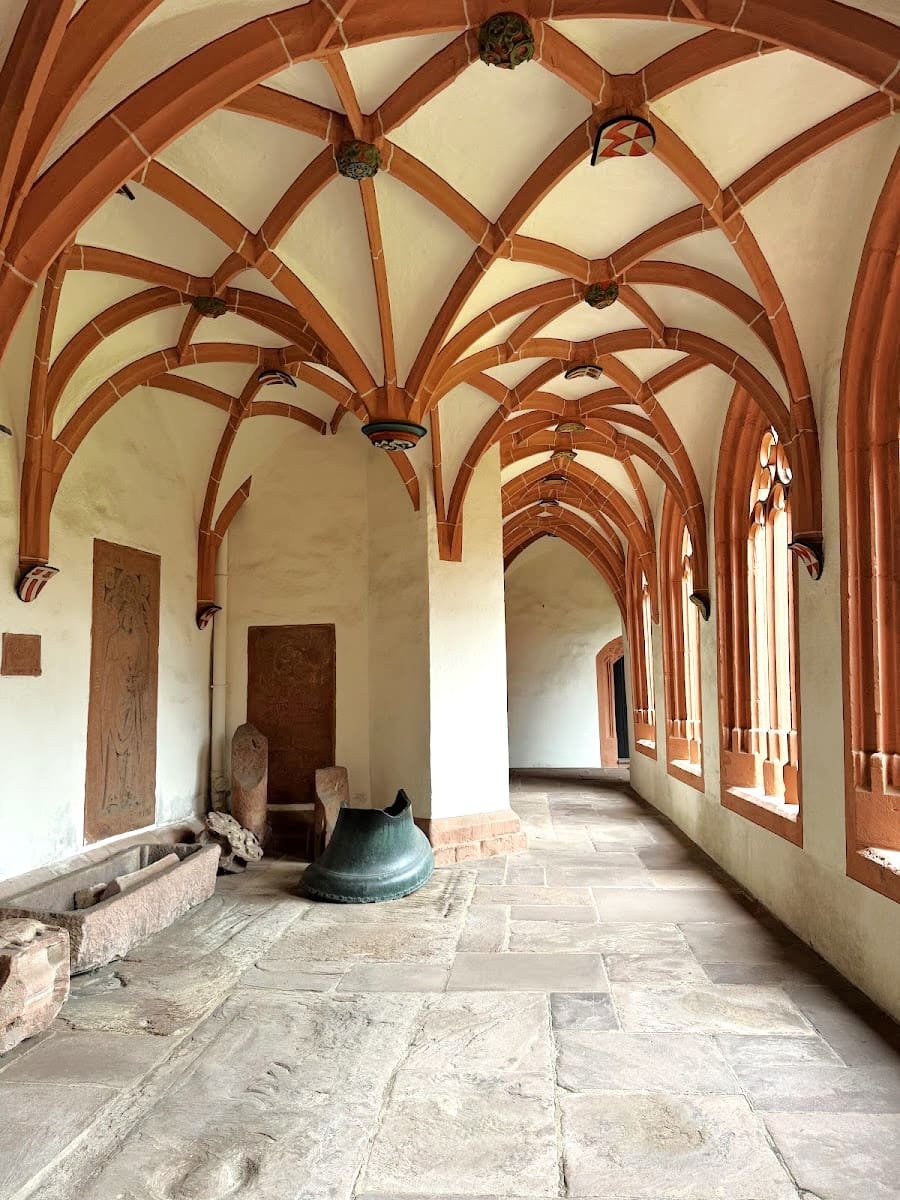
Artistic legacy. Marc Chagall created these stunning stained glass windows between 1978 and 1985 when he was in his 90s! The Jewish artist designed them as a symbol of Jewish-Christian reconciliation, depicting biblical scenes in his distinctive dreamlike style.
Peaceful sanctuary. Built on the highest hill in Mainz, St. Stephan’s offers both spiritual and physical elevation. The church dates back to 990 AD, though much of what stands today was reconstructed after WWII bombing damage.
Visitor experience. Entry to the church costs €3.00 (suggested donation), making it one of the most affordable cultural experiences in Mainz. Volunteer guides offer free explanations of the windows’ symbolism and history in several languages.
Photography note. While photos are permitted inside (without flash), no image can truly capture the luminous quality of Chagall’s windows. This is definitely an experience that needs to be witnessed in person to be fully appreciated.
⭐ Best Activities
- Private Custom Tour with a Local Guide: Mainz – Explore Mainz with a knowledgeable local guide on this customized private tour tailored to your interests and preferences.
3. Theodor Heuss Bridge
Historic connection. The Theodor Heuss Bridge is much more than just a way to cross the Rhine – it’s a stunning architectural landmark with a fascinating history. Stretching across the mighty Rhine River, this elegant arch bridge connects Mainz with the Mainz-Kastel district of Wiesbaden, offering spectacular views that captured my imagination.
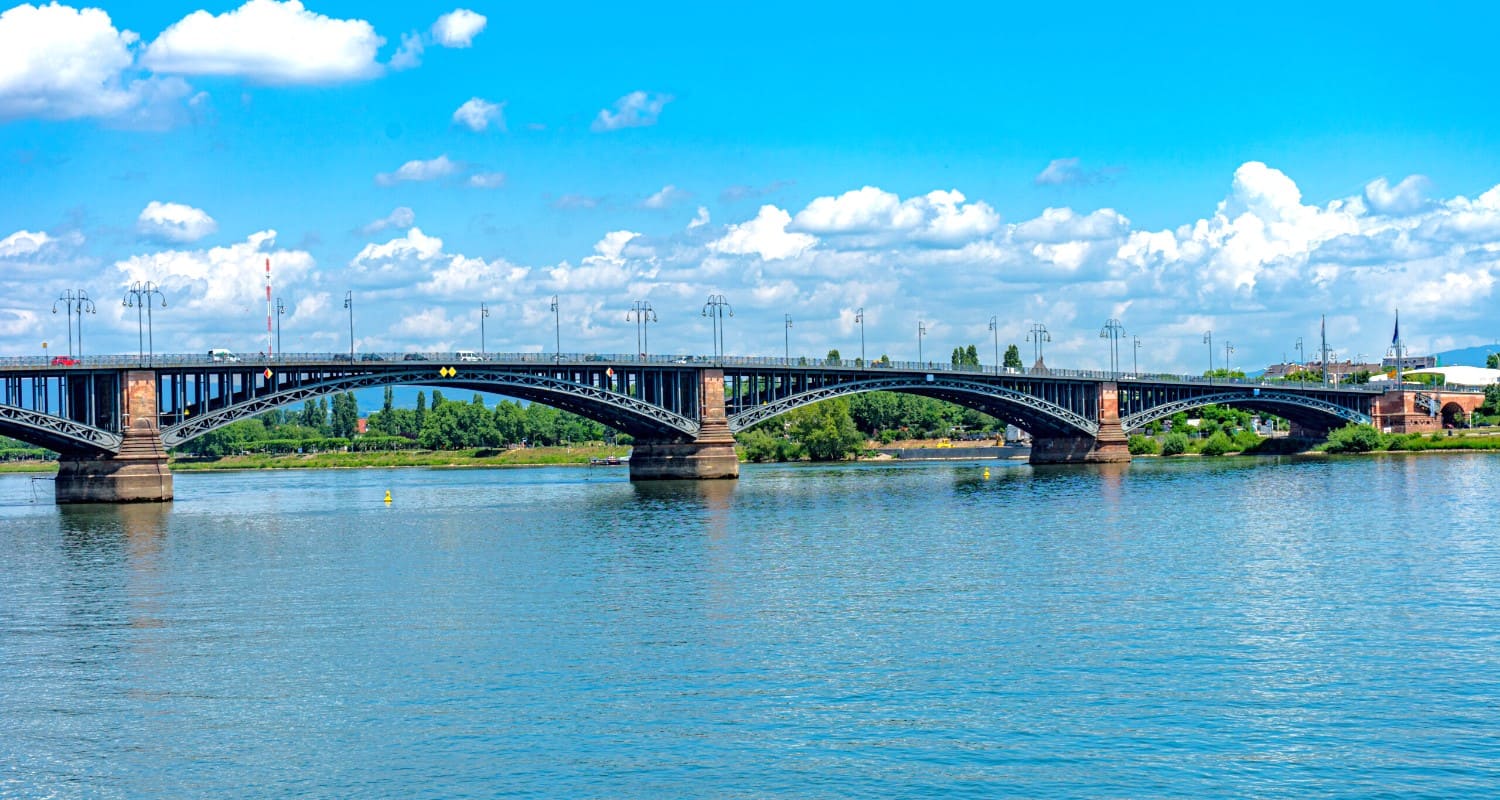
Ancient origins. I was surprised to learn that bridges have existed at this location since Roman times, with the first Roman bridge built in 27 AD. The modern bridge’s story began in 1885, when the first arch bridge was inaugurated after being constructed with an impressive 3.5 million kilograms of wrought iron at a cost of 3.6 million gold marks.
Architectural beauty. What makes this bridge special is its five steel arches supported by sandstone pillars, spanning the river in a rhythmic pattern (87-99-103-99-87 meters). At night, the bridge transforms into a magical sight thanks to thoughtful illumination that highlights its blue-green steel structure against the red-brown natural stone.
Best experiences:
- Walk across at sunset for breathtaking views of both cities
- Cycle along the dedicated paths that connect to longer Rhine routes
- Photograph the bridge from the riverbanks at dusk when it’s illuminated
- Stop midway to watch cargo ships and cruise boats navigate below
Resilient symbol. The bridge has survived numerous challenges, including being destroyed during WWII in 1945 and subsequently rebuilt between 1948-1950. Today, it stands as a testament to connection and resilience, linking not just two cities but two German states.
⭐ Best Activities
- Mainz Private Walking Tour – Experience the highlights of Mainz on this private walking tour that showcases the city’s rich history, architecture, and cultural landmarks.
4. Landesmuseum Mainz
Art through ages. The Landesmuseum Mainz surprised me with its impressive collection spanning over 2,000 years of cultural history. Housed in the former electoral stables, this museum offers a fascinating journey from Roman times to contemporary art.
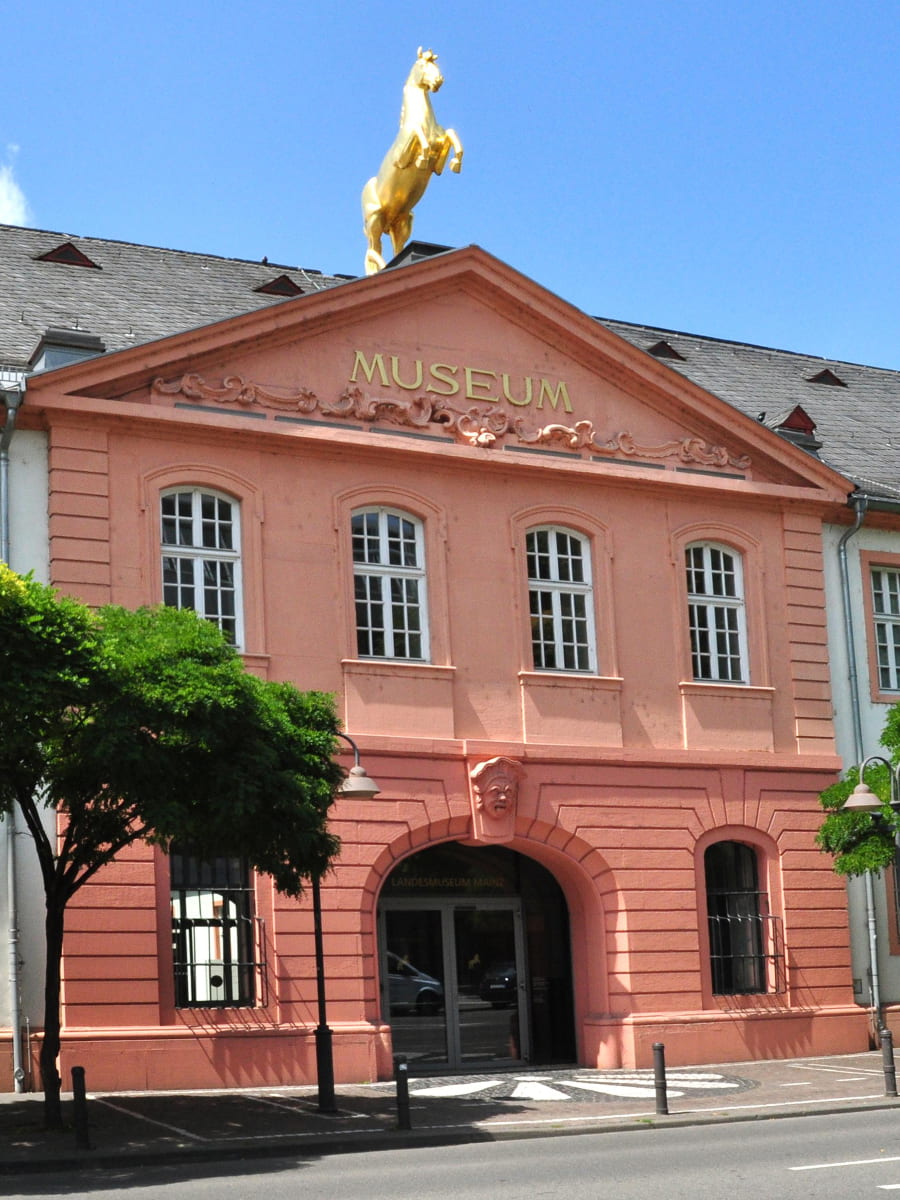
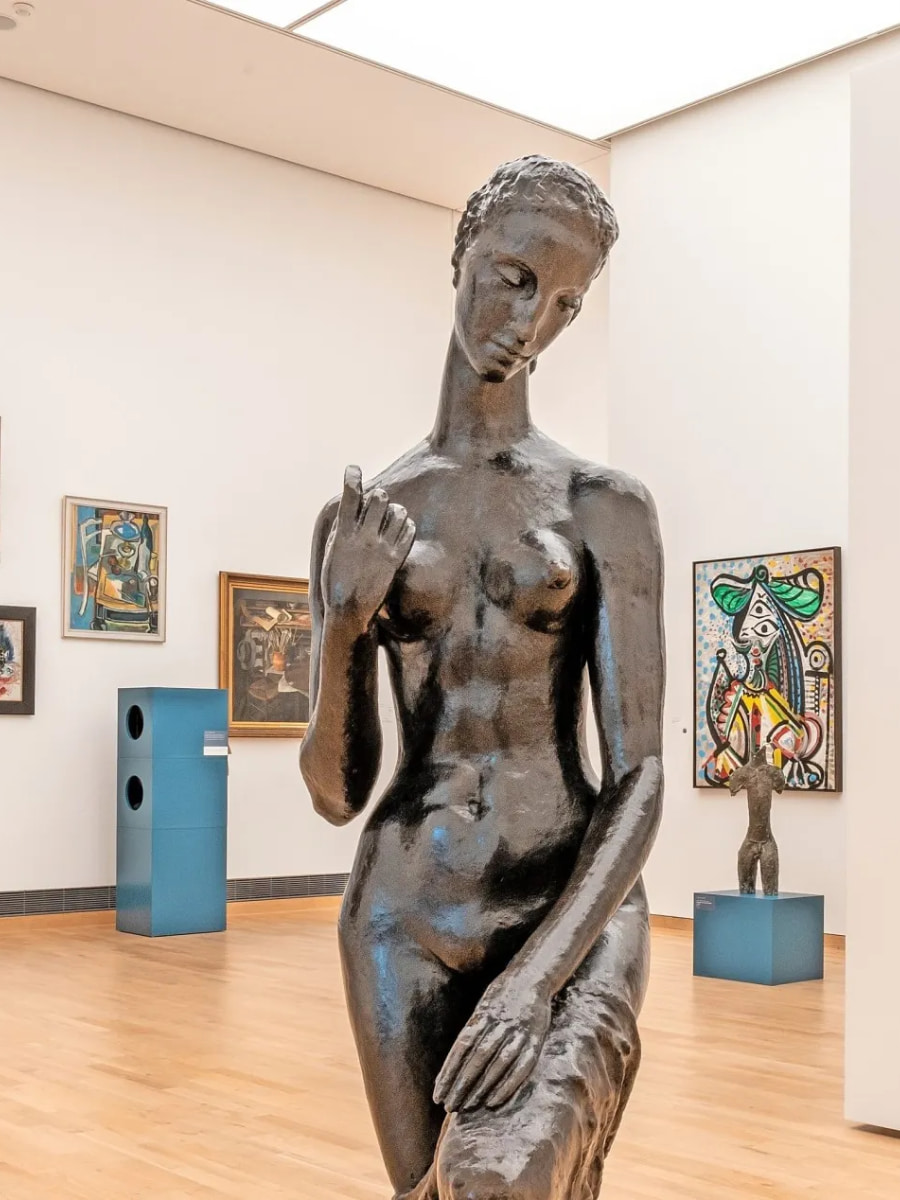
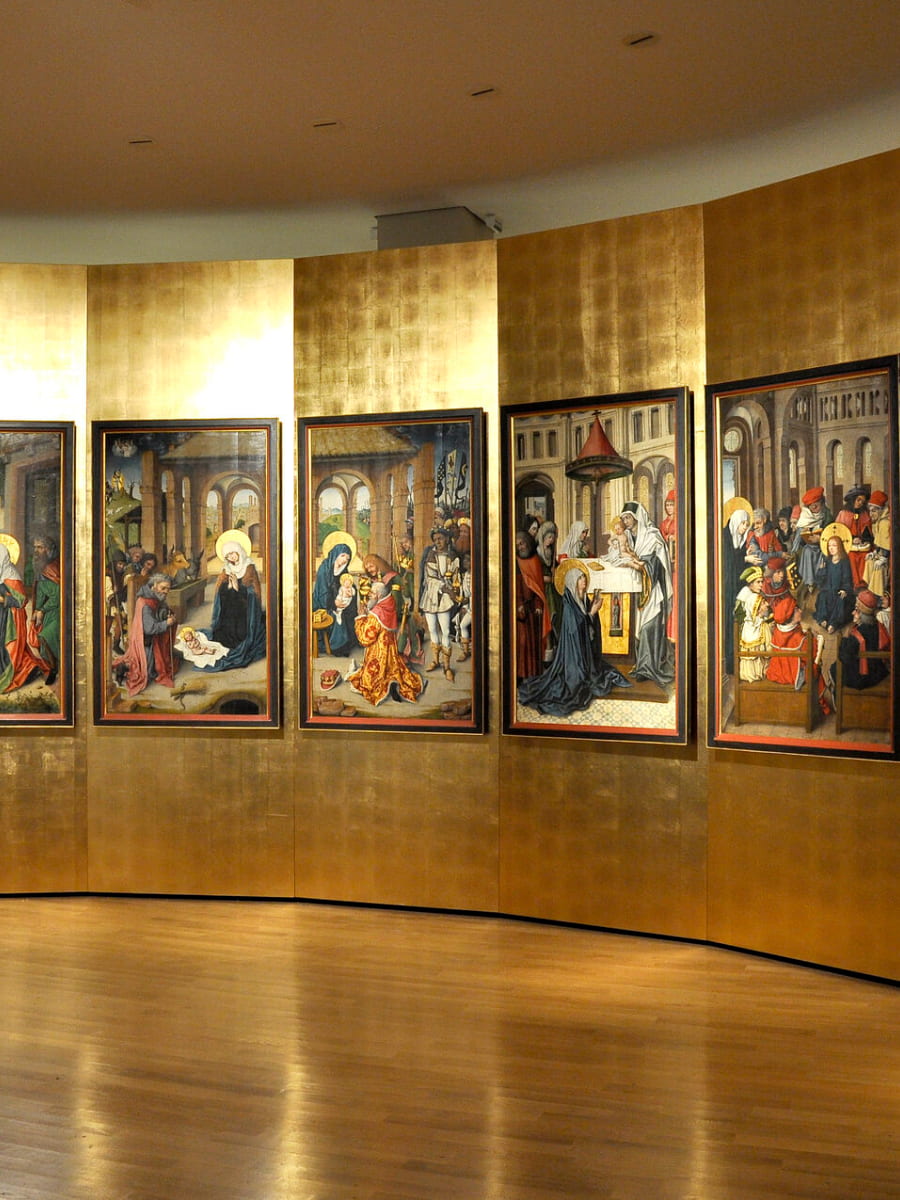
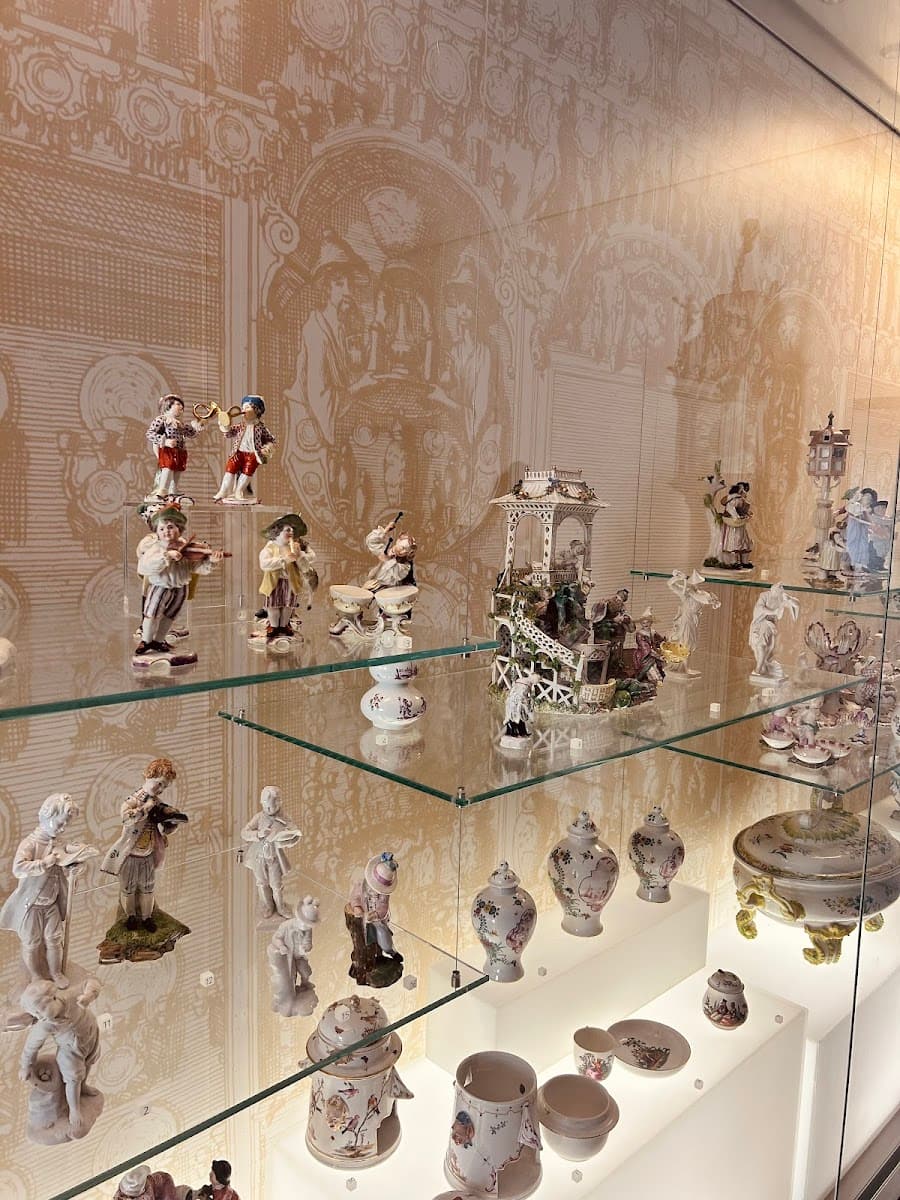
Roman treasures. I was captivated by the extensive Roman collection, particularly the Jupiter Column and beautifully preserved mosaics. These artifacts offer incredible insights into Mainz’s importance as the Roman city of Mogontiacum, founded around 13 BCE.
Medieval masterpieces. The museum’s medieval section features stunning religious art, including intricate wood carvings and Gothic paintings. The 15th-century “Crucifixion Altar” by Hans Backoffen is particularly moving with its detailed emotional expressions.
Modern highlights. My favorite section houses works by modern masters like Max Slevogt, whose colorful impressionist paintings capture the regional landscape beautifully. The museum does an excellent job connecting ancient history to contemporary artistic expressions.
Visitor essentials:
- Opening hours: Tuesday-Sunday, 10am-5pm (closed Mondays)
- Admission: €6 adults, €4 reduced, free for under 18s
- Audio guides available in English, German, and French (€3)
- Allow at least 2 hours for a proper visit
⭐ Best Activities
- Mainz Private Guided Walking Tour: Jewish Mainz (2 hours) – Discover the Jewish heritage of Mainz on this 2-hour private guided walking tour exploring the city’s significant Jewish history and landmarks.
5. Fastnachtsbrunnen (Carnival Fountain)
Carnival celebration. The Fastnachtsbrunnen (Carnival Fountain) stands as a joyful monument to Mainz’s famous carnival tradition. Located in the Schillerplatz, this 9-meter bronze fountain features over 200 whimsical figures representing the city’s beloved “fifth season.”
Artistic details. I spent nearly an hour circling the fountain, discovering new characters with each pass. Created by artist Blasius Spreng in 1967, the fountain depicts carnival jesters, musicians, dancers, and symbolic figures from local folklore – each telling part of Mainz’s carnival story.
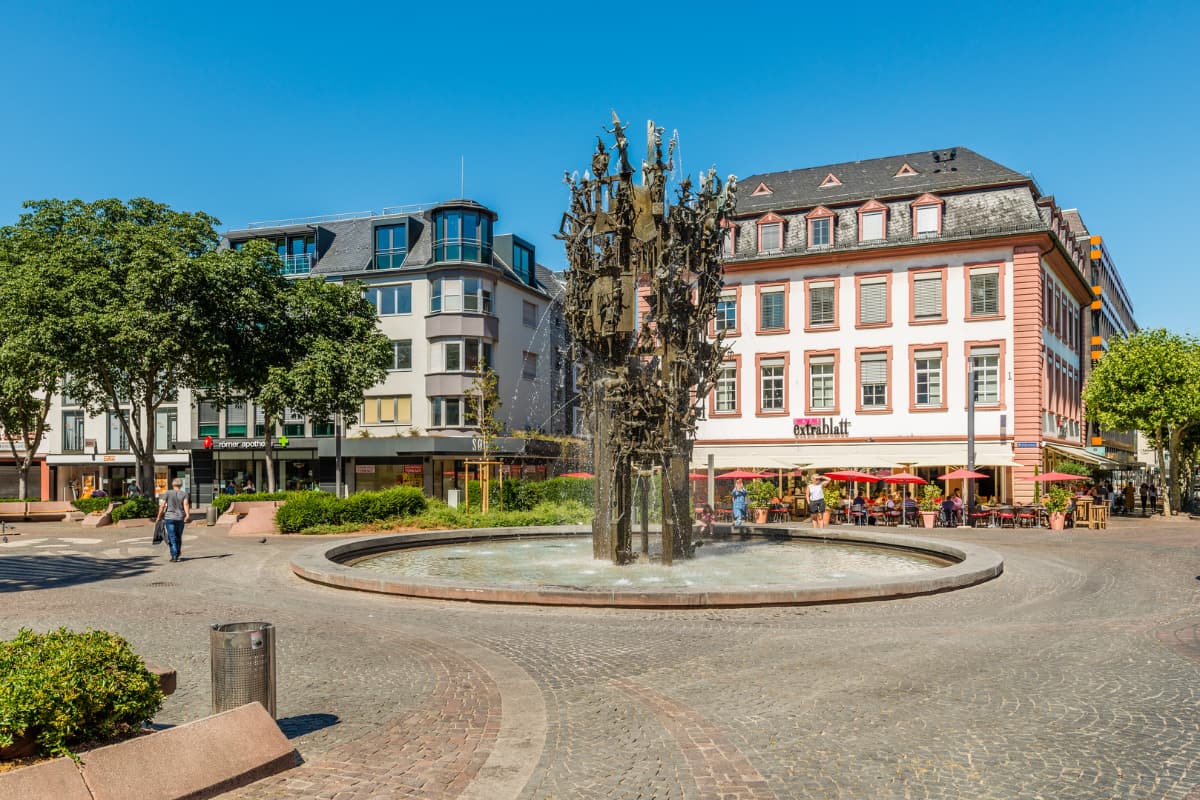
Cultural significance. Mainz Carnival dates back to the 1800s and remains a cornerstone of local identity. The “Meenzer Fassenacht” (as locals call it) transforms the city each February-March with parades, costumes, and celebrations that bring the fountain’s bronze figures to life.
Photo opportunity. This is one of Mainz’s most photographed landmarks, and for good reason! I found the best photos come from capturing specific character details rather than trying to fit the entire fountain in one frame.
Fun fact: Touch the nose of Till Eulenspiegel (the jester figure) for good luck – a local tradition that’s left his nose polished to a shine by thousands of hopeful visitors!
⭐ Best Activities
- Guided Walking Tour in Mainz am Rhein – Explore the beautiful Rhine-side city of Mainz with an expert guide who will reveal the city’s fascinating history and architectural treasures.
6. Temple of Isis & Mater Magna
Ancient discovery. Hidden beneath a shopping center in modern Mainz lies one of the city’s most remarkable archaeological treasures – the Temple of Isis and Mater Magna. I was amazed to learn these Roman temple ruins were only discovered during construction work in 2000.
Sacred space. Dating back to the 1st century CE, these temples were dedicated to the Egyptian goddess Isis and the Roman mother goddess Cybele (Mater Magna). Walking through the preserved foundations, I could imagine Roman soldiers and citizens coming here to worship these powerful female deities.
Museum highlights include:
- Original stone altar dedicated to Isis
- Ritual vessels and offering items
- Informative displays explaining Roman religious practices
- Archaeological artifacts from daily Roman life in Mainz
- Interactive models showing how the temples would have looked
Unique experience. What makes this site special is its accessibility – you can literally shop for modern goods above while exploring ancient Roman religious sites below. The contrast between past and present is striking.
Practical information. Entry costs €5 for adults and €3 for students. The site is open Tuesday-Sunday from 10am-5pm. I recommend joining one of the hourly guided tours (included in admission) to fully appreciate the historical significance of what you’re seeing.
7. MEWA Arena Tour
Behind the scenes. As a football enthusiast, I couldn’t miss the chance to explore the home of FSV Mainz 05. The MEWA Arena tour offers a unique opportunity to see the stadium from a player’s perspective – walking through the player tunnel, visiting the press conference room, and enjoying the view from the VIP boxes.
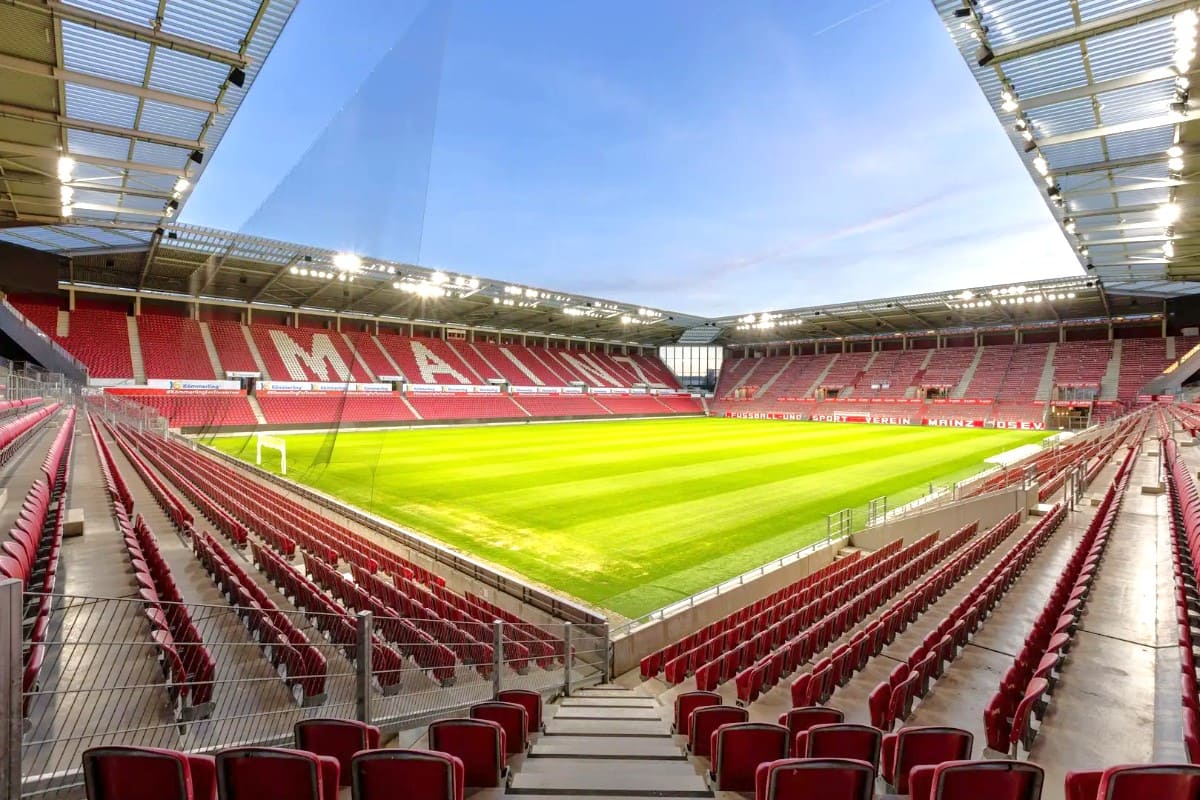
Tour highlights. The newly designed arena tours take you deep into the world of Mainz 05, showing areas normally off-limits to the public. I particularly enjoyed sitting in the team dugout and imagining the atmosphere on match days when thousands of passionate fans fill the stands.
Practical information:
- Tour costs: €13 for adults and €9 for reduced tickets on regular days
- Match day tours: €30 for adults and €25 for reduced tickets
- Children under 4: Free entry
- Duration: 90 minutes on regular days, 45 minutes on match days
- Meeting point: Red column labeled “Stadionführungen” in front of the Fan Shop
Booking tips. I recommend booking your tickets online through the official Mainz 05 ticket shop. Match day tours become available approximately three weeks before each home game. For larger groups (11+ people), you can request customized tours via email.
Football connection. Even if you’re not a die-hard football fan, the tour offers fascinating insights into the operations of a professional sports venue and the club’s connection to the city of Mainz.
8. Mainz Citadel
Fortress on the hill. Perched majestically on Jakobsberg hill overlooking Mainz’s Old Town, the Citadel (Zitadelle) immediately impressed me with its imposing presence. Built in 1660 as part of the Fortress Mainz, this strategic stronghold is one of Germany’s few remaining ancient citadels.
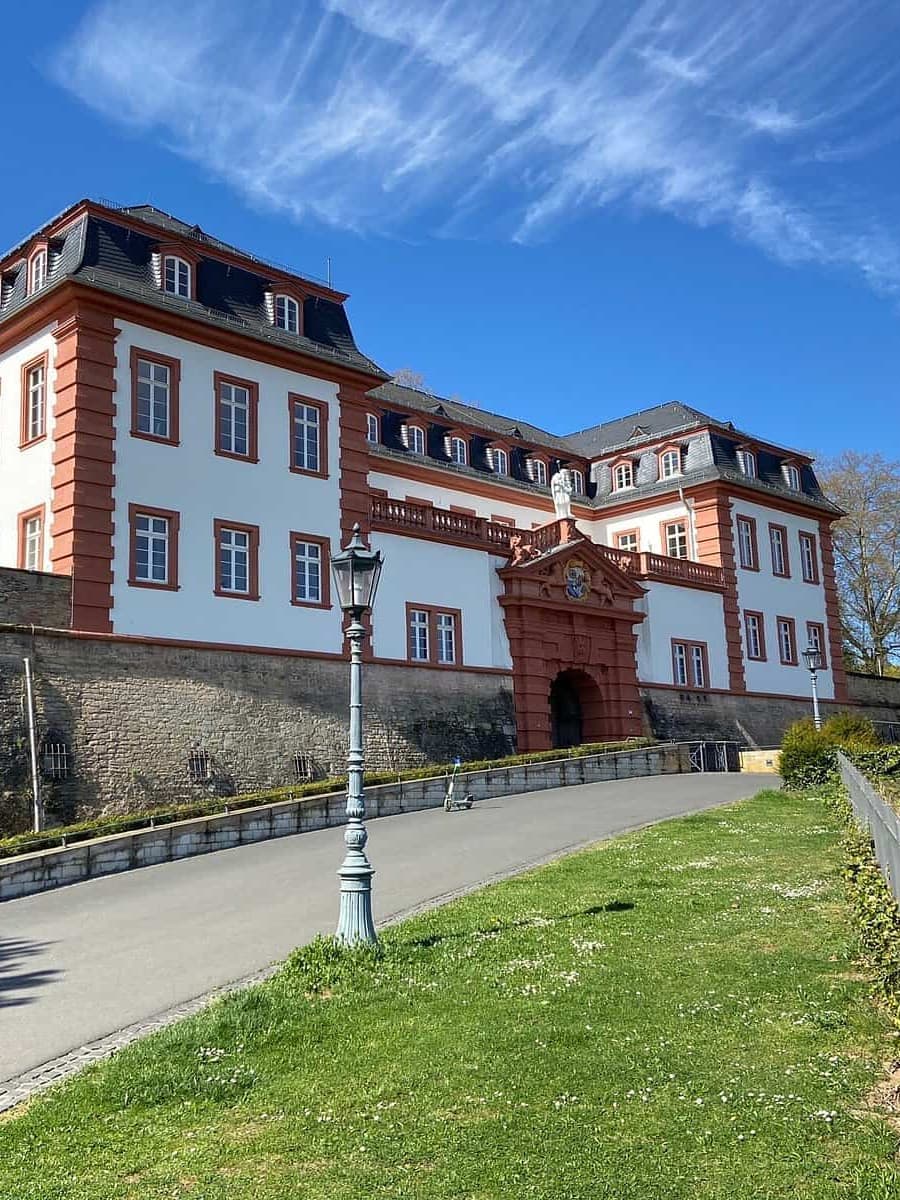
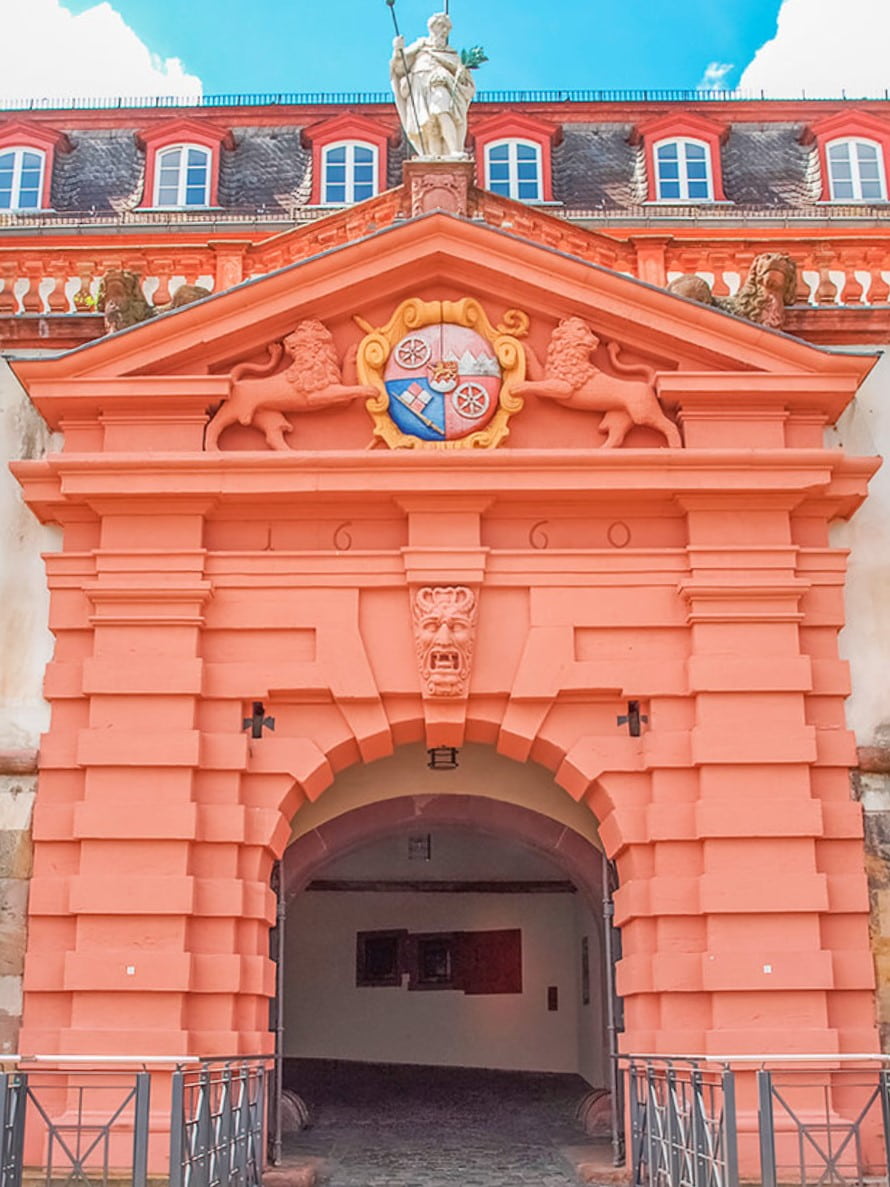
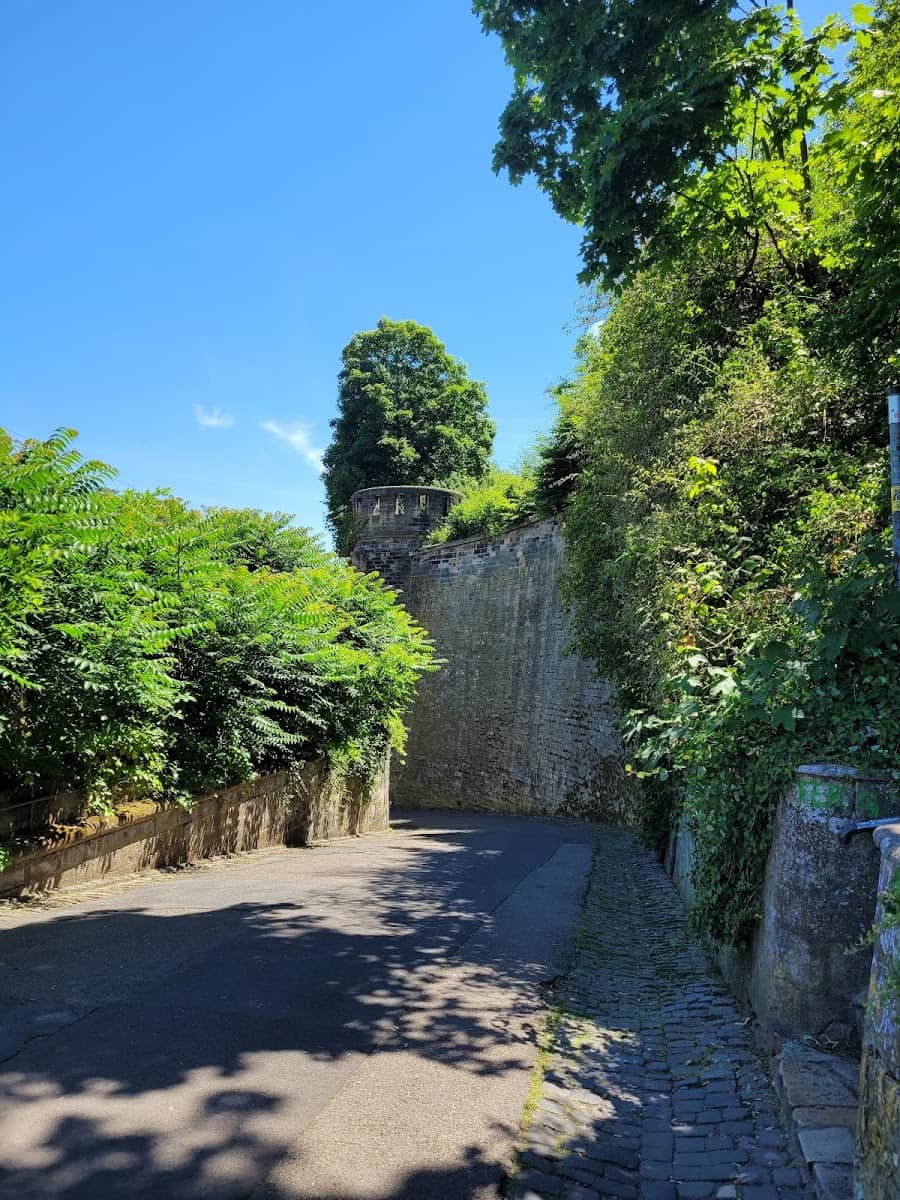
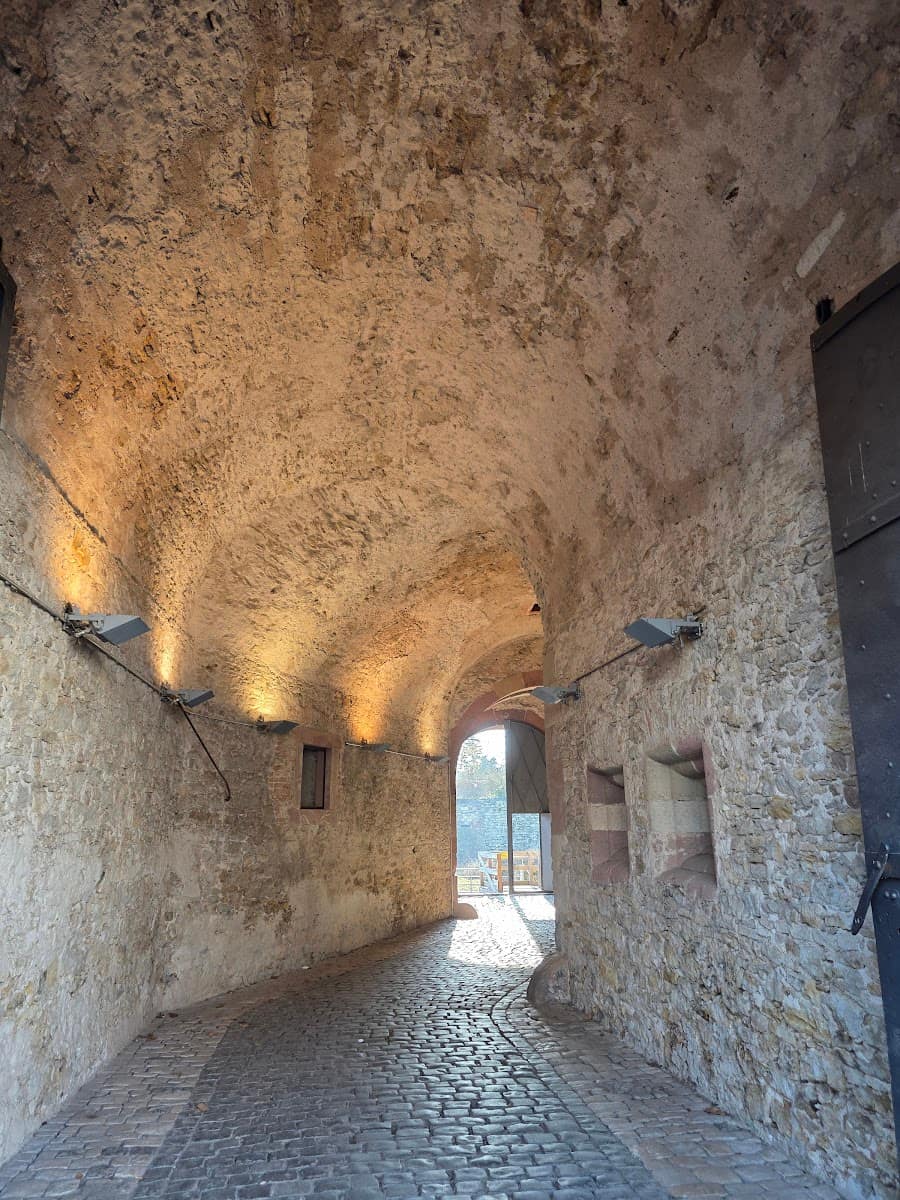
Military heritage. Walking through the regular quadrangular layout with its four bastions – Alarm, Tacitus, Drusus, and Germanikus – I could sense the military precision in its design. The citadel’s strategic importance stemmed from Mainz’s location on the Rhine and in the heart of the Holy Roman Empire.
Roman connection. The most fascinating feature I discovered was the Drususstein (Drusus Stone) in the southwest corner – a 30-meter tall Roman monument erected in 9 AD to honor the Roman general Drusus, who is considered the founder of Mainz.
Modern uses. Today, this historical fortress houses municipal offices while serving as a vibrant cultural venue. During my visit, I learned it hosts numerous festivals throughout the year, including the nationally renowned Open Ohr Festival, the Citadel Festival, and a Christmas market.
Visitor experience. For the full experience, I joined one of the entertaining guided tours led by costumed guides who took us through both the overground structures and underground casemates. The elevated position offers beautiful views over Mainz and the Rhine, making it well worth the uphill walk.
⭐ Best Activities
- Mainz: Guided Hotrod City Starter Tour – Discover Mainz and its vineyards from a hotrod. Drive past the iconic Rhine river, cruise through the historic Old Town, and see the city’s top sight, the Mainz Cathedral.
Things to Do in Mainz with Kids
1. Mini Train and Playground in Volkspark
Adventure paradise. The Volkspark in Mainz quickly became my favorite spot to take children for an exciting day out. This sprawling green recreation area offers a perfect mix of activities that kept my young companions entertained for hours. The centerpiece that truly makes children’s hearts beat faster is the “Fleet-Lotte” mini-train that runs throughout the garden all day long.
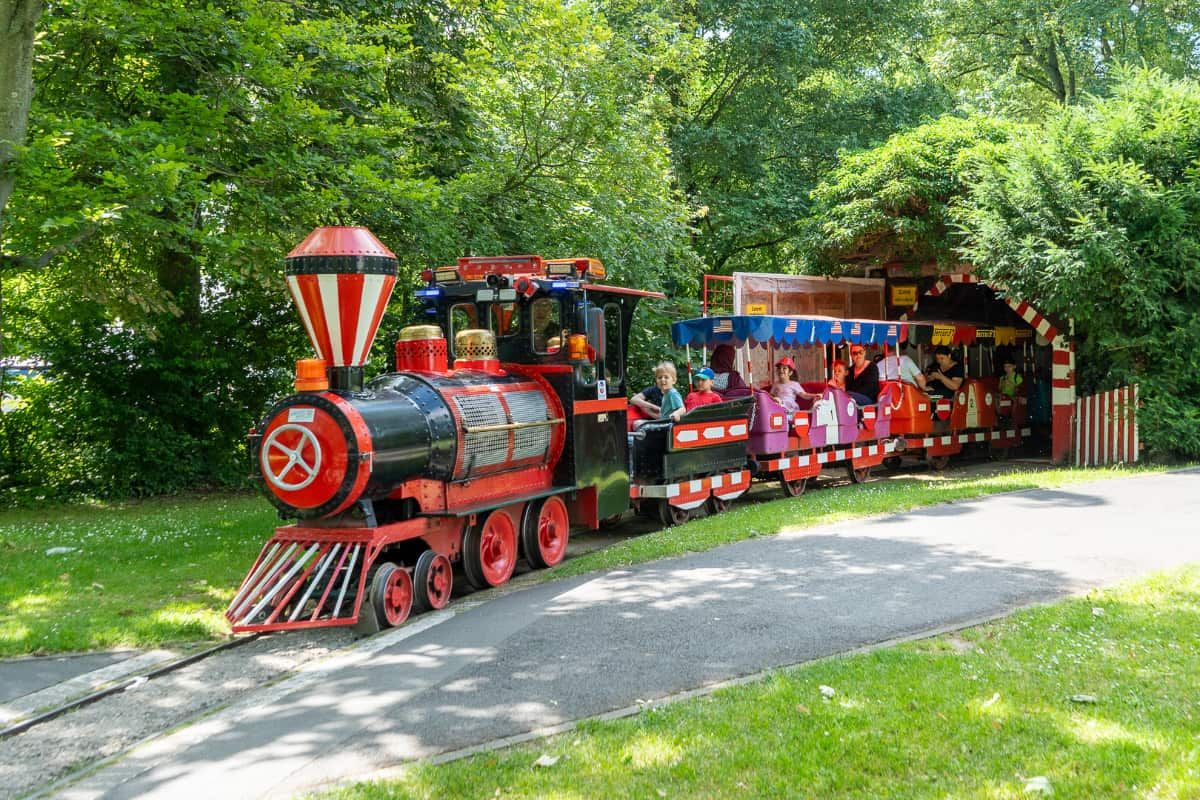
Playground heaven. I was impressed by the large adventure and water playground that offers endless fun, especially during summer months. The kids splashed around in the water features while I relaxed nearby, enjoying the peaceful park atmosphere. Right in front of the Vivo Restaurant, this playground is a guaranteed hit with children of all ages.
Family activities include:
- Miniature golf course (perfect for family competitions)
- Large roller-skating rink
- Basketball courts
- Ping-pong tables
- Boule alleys
Practical information. The park is easily accessible by public transport, with private parking available for those driving. I appreciated the handicapped-accessible public toilets. For refreshments, there’s a restaurant, an ice cream parlor, and even designated barbecue areas if you want to make a day of it.
Seasonal note. The miniature golf course typically opens in March when the weather turns nice, so plan accordingly if that’s on your must-do list.
2. Stadtpark – Flamingo Pond and Rose Garden
Pink flamingos. Walking through Mainz’s Stadtpark, I was delighted to discover the unexpected sight of bright pink flamingos wading gracefully in their pond. This small zoo feature is a magical surprise that captivated both me and the children I was with. The flamingos spend summer and fall in the pond at the bottom of the park, while winter finds them in designated indoor spaces.
Bird paradise. The Bird House (Vogelhaus) is partially glazed and houses around 10 species and approximately 100 birds. I spotted zebra doves, rice birds, canaries, and diamond doves, but the real star attraction was the yellow tamarind. The walkable house allows visitors to see the birds from inside, creating an immersive experience.
Rose garden magic. Created in 1925, the romantic rose garden features about 4,500 roses across 9,500 square meters. Rose lovers can admire approximately 100 different species of roses and shrubs. In 2013/2014, the garden underwent thorough renovation, restoring it to its historical model with renewed varieties of roses, hedges, natural stone walls, and seating areas.
Festival atmosphere. If you visit in August, you might catch the Mainzer Weinmarkt (Wine Market), where local producers from Mainz and the Middle Rhine Valley set up stalls throughout the park. I sampled some excellent German Riesling, Grauburgunder, and Silvaner wines while mingling with locals in this relaxed festival setting.
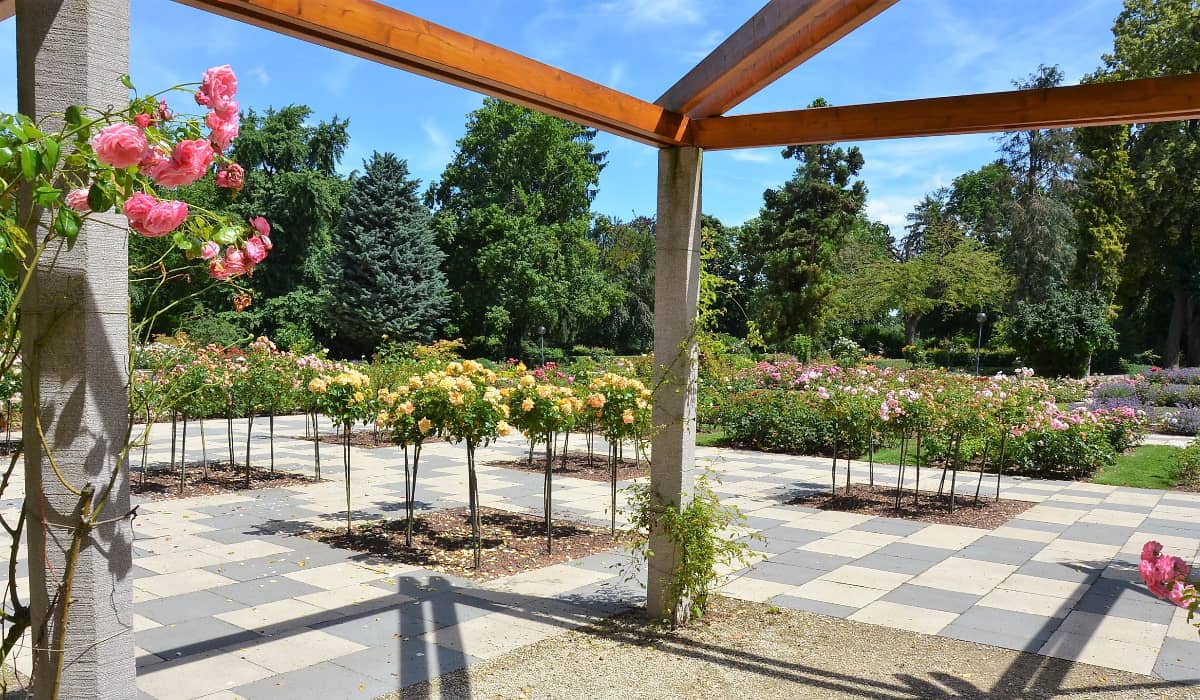
Photo opportunities. The English-style rose garden sits atop a hill and features brilliant colors and fresh floral aromas from spring through fall, making it a perfect backdrop for family photos.
3. Museum of Ancient Shipbuilding
Roman discoveries. The Museum of Ancient Shipbuilding showcases five fourth-century Roman military ships that were discovered in Mainz in 1981 during construction work on the Hilton Hotel. I was amazed to learn these ancient shipwrecks were buried under seven meters of mud and remained in remarkable condition after 1,500 years.
Historical significance. During Roman times, Mainz was an important trading city and base for the Rhine river fleet. The museum explains how Roman patrol boats traveled the Rhine to protect the empire’s borders. Four of the displayed ships were troop transporters, while one was a patrol vessel – all made from German oak.
Interactive exhibits. What makes this museum special for kids is the fun activity area designed specifically for younger visitors. Children can watch modern shipbuilders restore ancient ships and create new models in the workshop. The museum also features two ship replicas showing what complete Roman military ships looked like.
Important update. The museum is currently undergoing modernization with funds from the federal government and Rhineland-Palatinate. According to the latest information, it will reopen in spring 2025, so plan your visit accordingly if you’re traveling to Mainz before then.
Educational value. Beyond the ships themselves, the museum houses a collection of reliefs depicting ships, including tombstones and coffins from the first and third centuries. The exhibits trace the history of shipbuilding from Stone Age dugouts to modern times, making it an educational experience that children find genuinely fascinating.
Free Things to Do in Mainz
1. Rhine Promenade
Scenic beauty. The Rhine Promenade offers one of the most enjoyable free experiences in Mainz. I spent hours wandering along this picturesque riverside path, watching massive cargo ships and elegant cruise boats navigate the mighty Rhine. The promenade stretches for several kilometers, providing constantly changing views of one of Europe’s most important waterways.
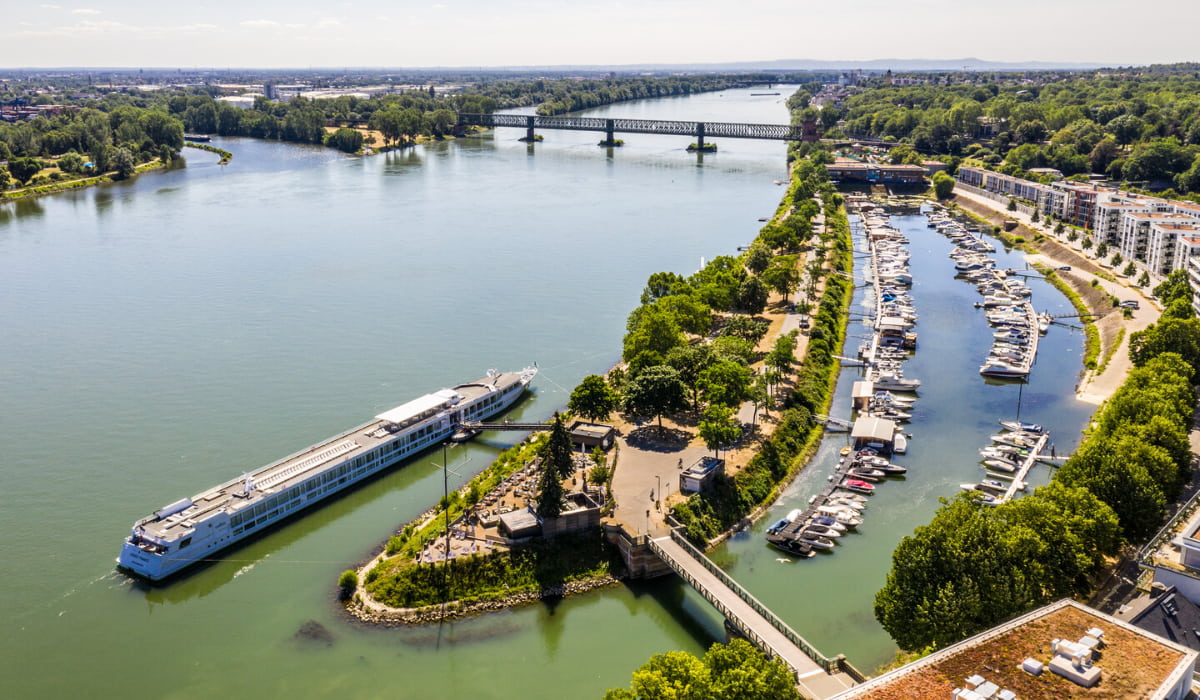
People-watching paradise. What makes this walk special is the vibrant atmosphere. On sunny days, the promenade comes alive with locals jogging, cycling, picnicking, and socializing. I joined them, finding a comfortable bench to observe the fascinating mix of people enjoying this beloved public space.
Perfect picnic spot. To enjoy the Rhine Promenade like a local, I packed a simple picnic with bread, cheese, and a bottle of regional wine purchased from a nearby shop (total cost: about €15). Many locals bring portable chairs and tables for impromptu riverside dining – a tradition I was happy to adopt!
Photography opportunities:
- Sunrise over the Rhine with morning mist
- Historic buildings along the waterfront
- Passing ships against the backdrop of distant hills
- Theodor Heuss Bridge illuminated at dusk
- Reflections of clouds and city lights on the water
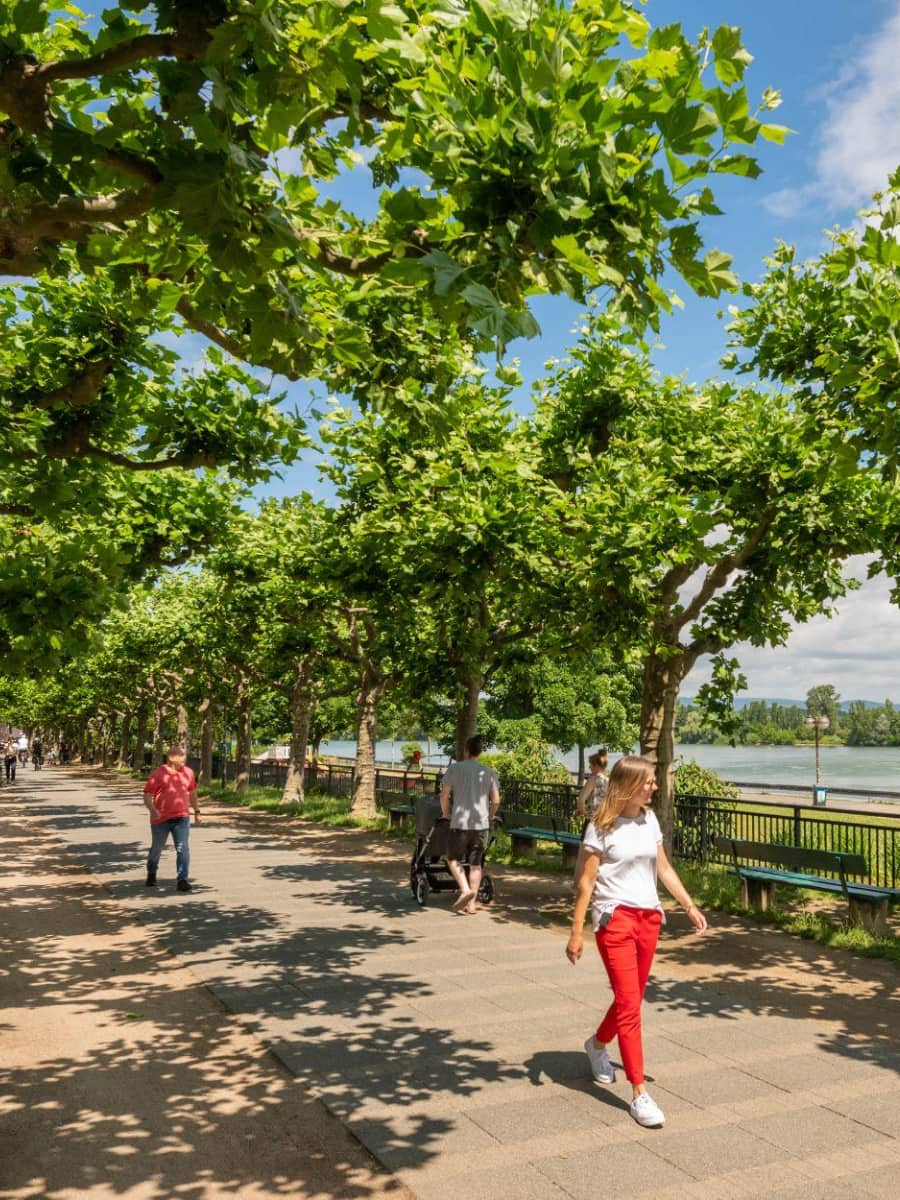
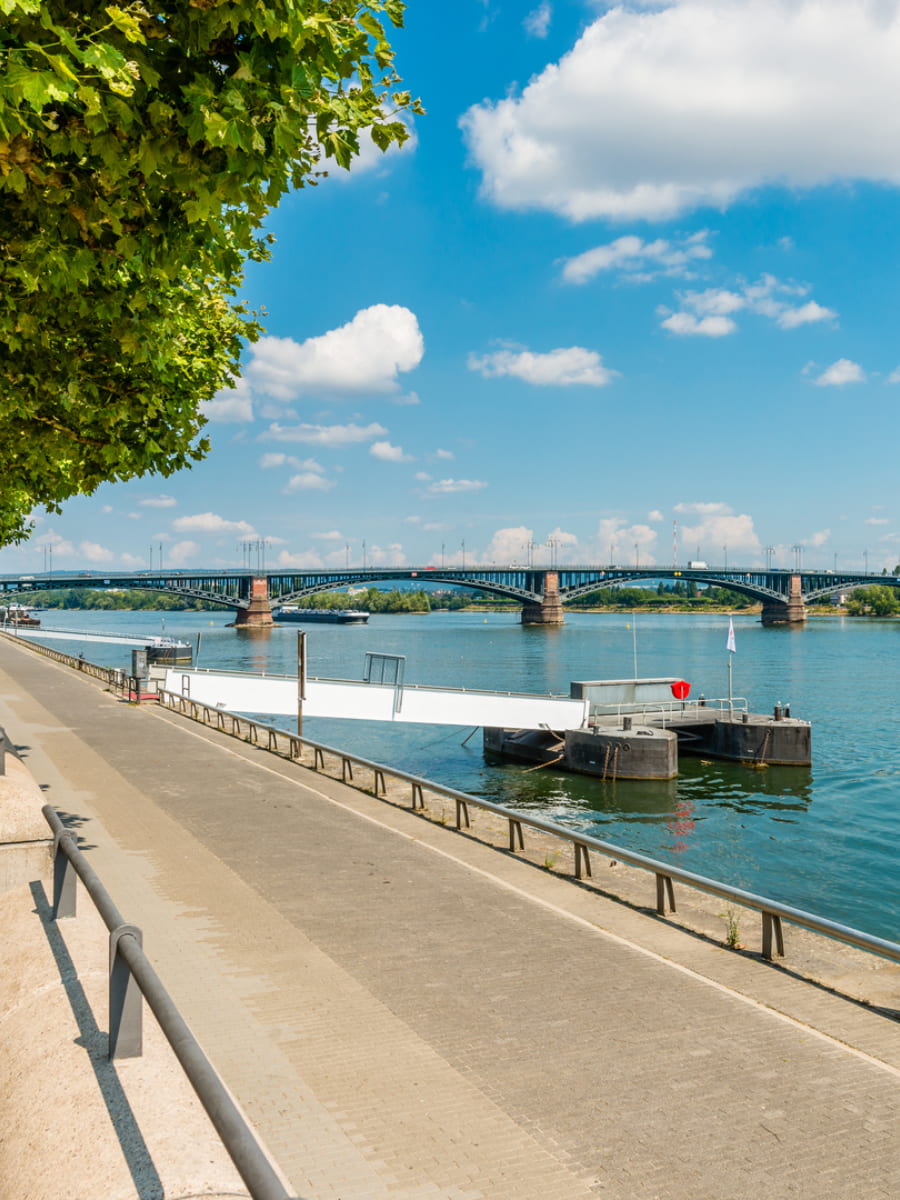
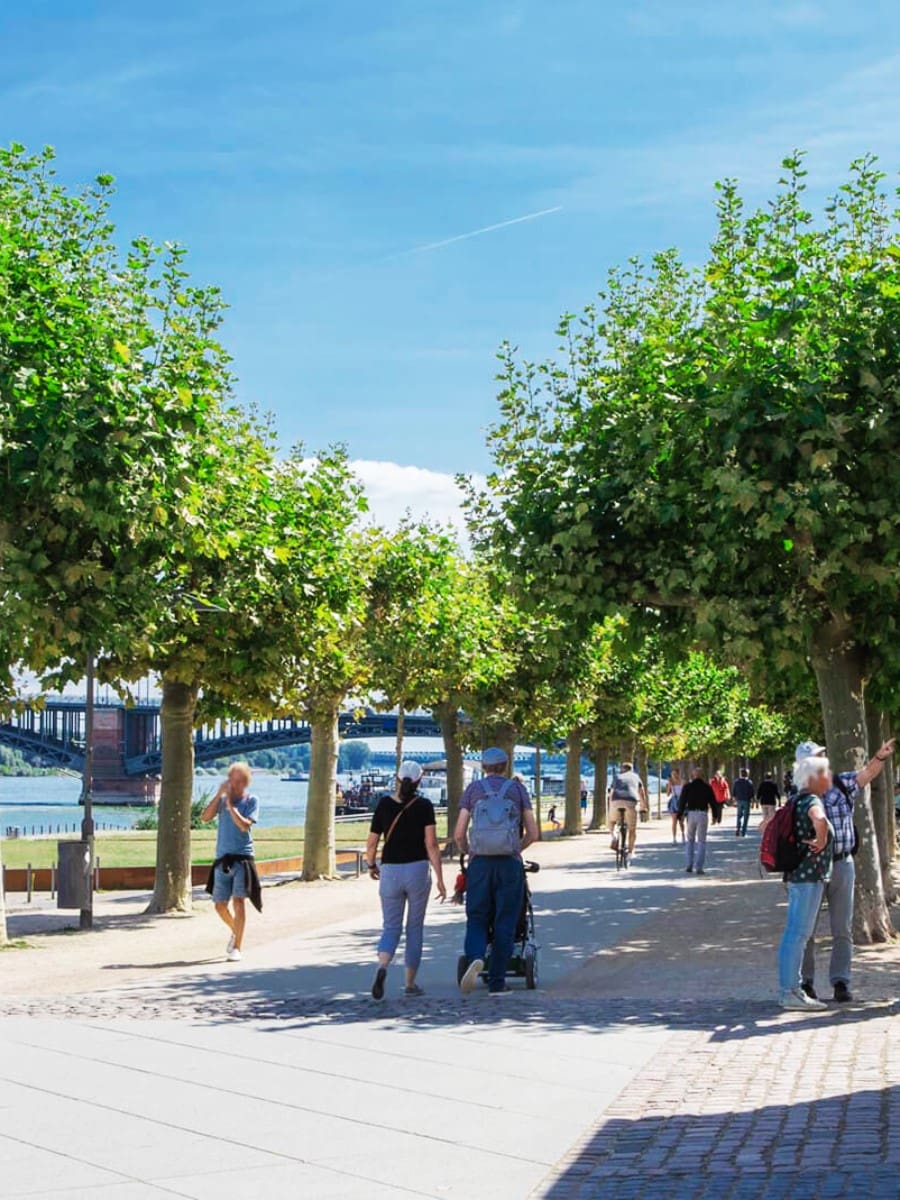
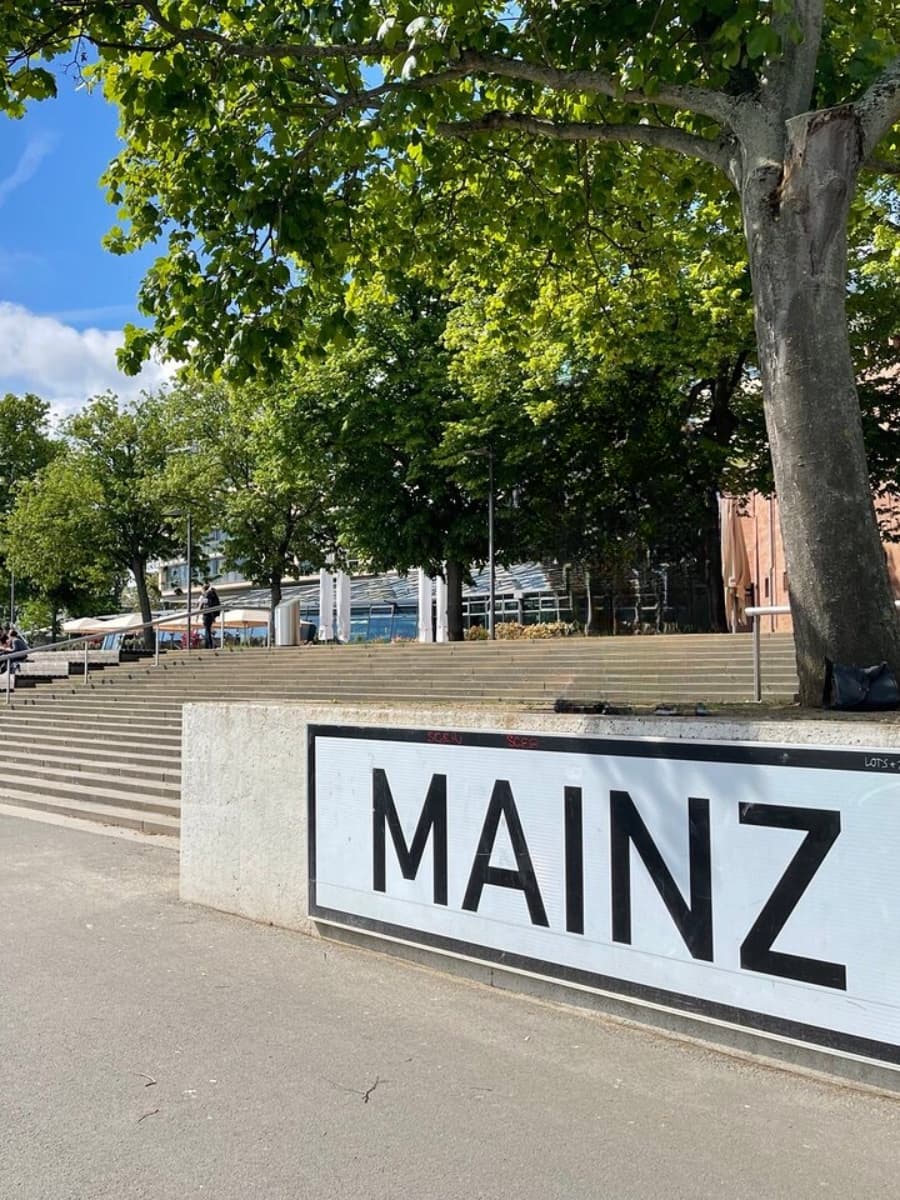
Seasonal charm. Each season brings a different character to the promenade. Spring offers blooming trees and returning waterfowl, summer brings outdoor cafés and music performances, autumn paints the riverside trees in golden hues, and winter provides crisp, clear views across the water.
2. Mainz Cathedral (Mainzer Dom)
Imposing architecture. Standing near the historical center of Mainz, the 1000-year-old Mainz Cathedral (St. Martin’s Cathedral) took my breath away with its massive red sandstone structure. At 116 meters long and with a west tower over 80 meters high, this Roman Catholic cathedral dominates the city skyline.
Historical significance. Founded between 975-976 by Archbishop Willigis, who envisioned Mainz as the “second Rome,” the cathedral has witnessed seven fires and seven royal coronations throughout its millennium of existence. I was fascinated to learn that 45 bishops are buried within its walls.
Architectural blend. What struck me most was the cathedral’s unique mix of styles. While predominantly Romanesque, I noticed Gothic chapels, bell towers, and even Baroque elements in the roof. The bronze market gate door from 1200 is the oldest part of this magnificent structure.
Interior treasures. Inside, I discovered an impressive collection of tombs and funerary monuments spanning the 13th to 19th centuries. The “Schöne Mainzerin” (beautiful lady of Mainz) depiction of Mary in the Ketteler Chapel is particularly striking.
Practical tips. Entry to the cathedral is free! I recommend joining one of the guided tours to fully appreciate the historical significance. The cathedral is open daily, but avoid visiting during mass times if you’re there as a tourist.
3. Old Town and Kirschgarten
Charming streets. Wandering through Mainz’s Altstadt felt like stepping back in time. The narrow cobblestone streets are lined with half-timbered houses, many dating back to the 17th century. I found myself constantly stopping to admire the colorful facades and ornate details that make this area so photogenic.
Kirschgarten gem. The highlight of my Old Town exploration was discovering Kirschgarten (Cherry Garden), a picturesque square that’s widely considered the most beautiful corner of Mainz. Surrounded by perfectly preserved medieval buildings, this hidden gem offers a peaceful retreat from the busier parts of town.
Market atmosphere. The bustling Marktplatz sits at the heart of the Altstadt, where I joined locals shopping for fresh produce, flowers, and regional specialties. The weekly market has been operating since the 10th century – talk about shopping with history!
Local flavors. I stopped at a traditional wine tavern (Weinstube) to sample local Rheinhessen wines paired with hearty German fare. Most taverns offer wine by the glass for €4-6, letting you taste several varieties without breaking the bank.
Exploration tips. The Old Town is best explored on foot. I recommend picking up a free walking map from the tourist office near the cathedral. Visit early morning to avoid crowds and catch the beautiful light on the historic buildings.
4. Volkspark
Green retreat. Volkspark offers a peaceful escape from urban life without spending a euro. While some attractions within the park charge fees (like the mini-train), simply exploring this expansive green space costs nothing. I discovered beautiful walking paths winding through mature trees, open meadows perfect for relaxing, and quiet corners ideal for reading or meditation.
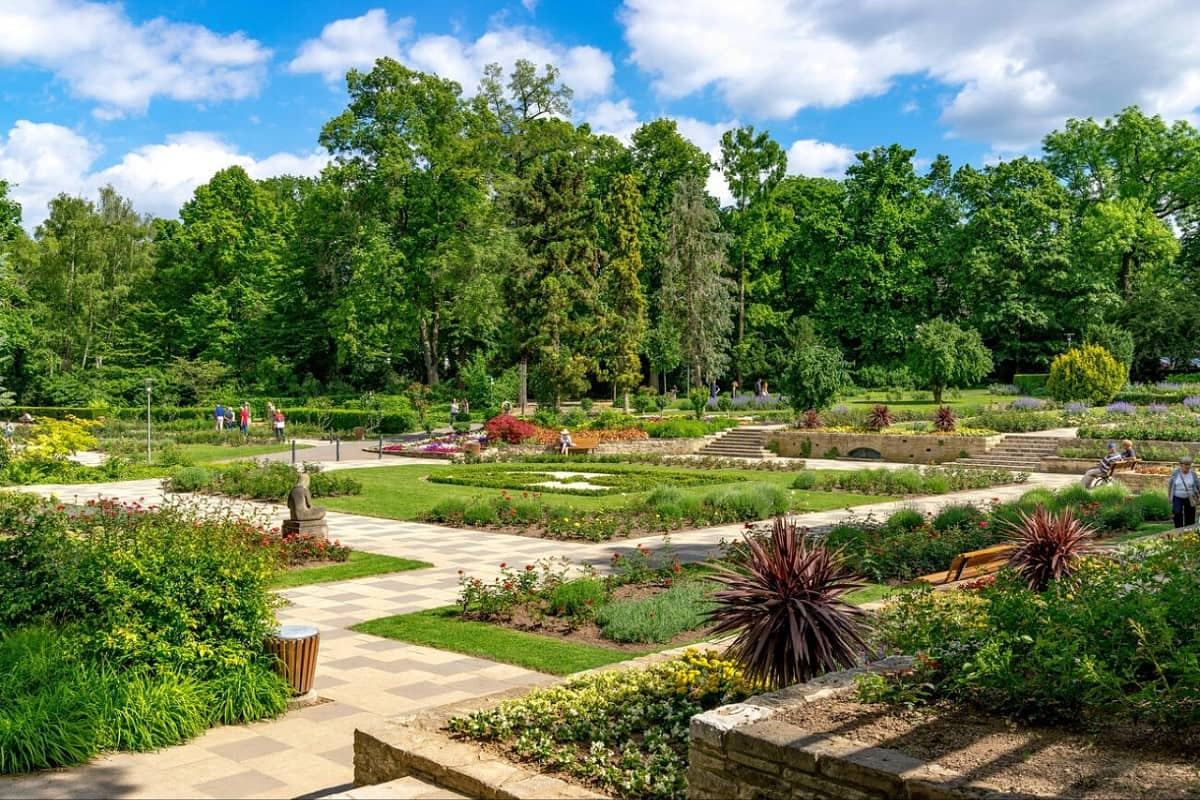
Natural beauty. What impressed me most was the park’s thoughtful landscaping. Seasonal flower beds burst with color, while carefully placed benches invite visitors to pause and appreciate the surroundings. The large pond at the center of the park attracts various waterfowl, creating a mini-ecosystem that’s fascinating to observe.
Active options. For those seeking more energetic pursuits, Volkspark offers numerous free activities. I joined locals jogging along the designated running paths and watched families playing frisbee on the open lawns. The park also features outdoor fitness equipment that anyone can use free of charge.
Cultural elements include:
- Artistic sculptures scattered throughout the grounds
- Historical monuments with informational plaques
- Botanical sections featuring labeled plant species
- Community garden plots showing seasonal growth
- Occasional free outdoor concerts and events
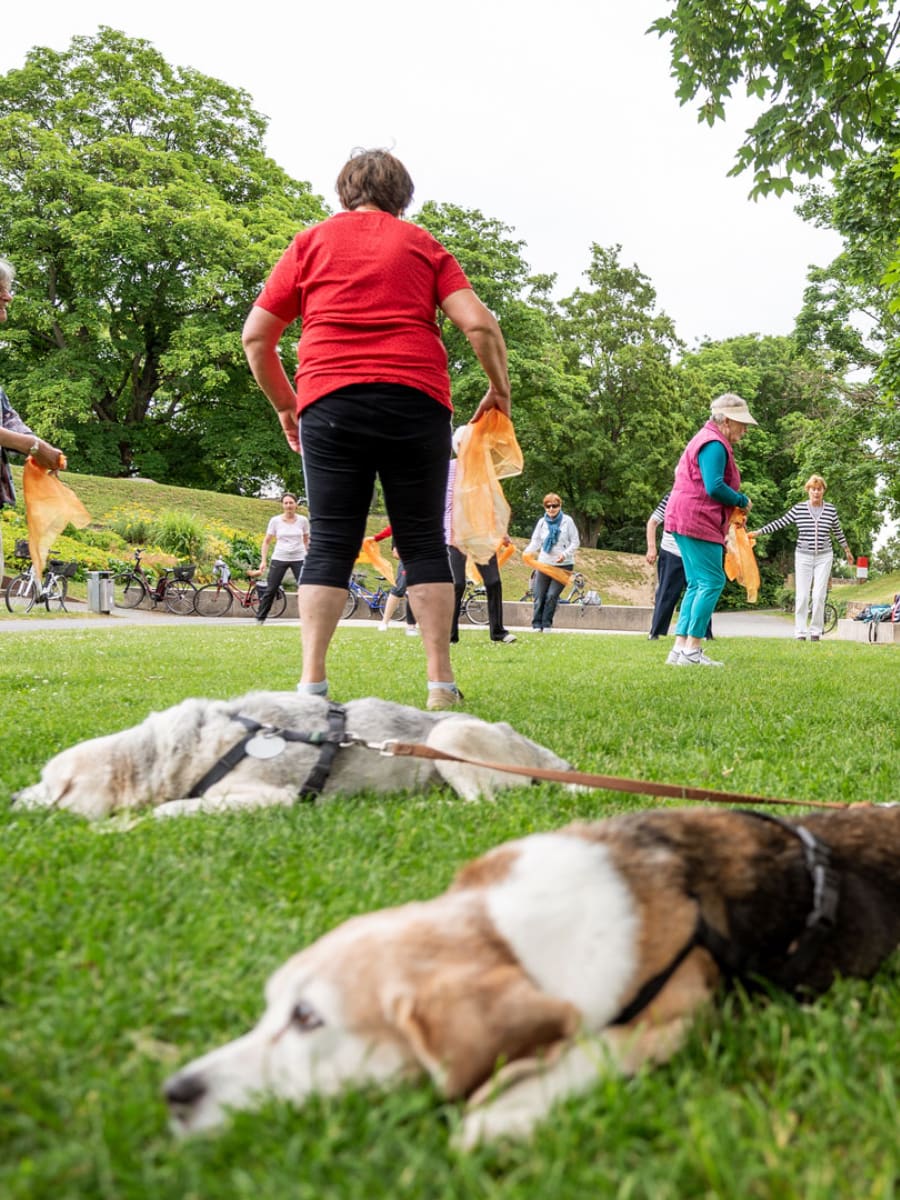
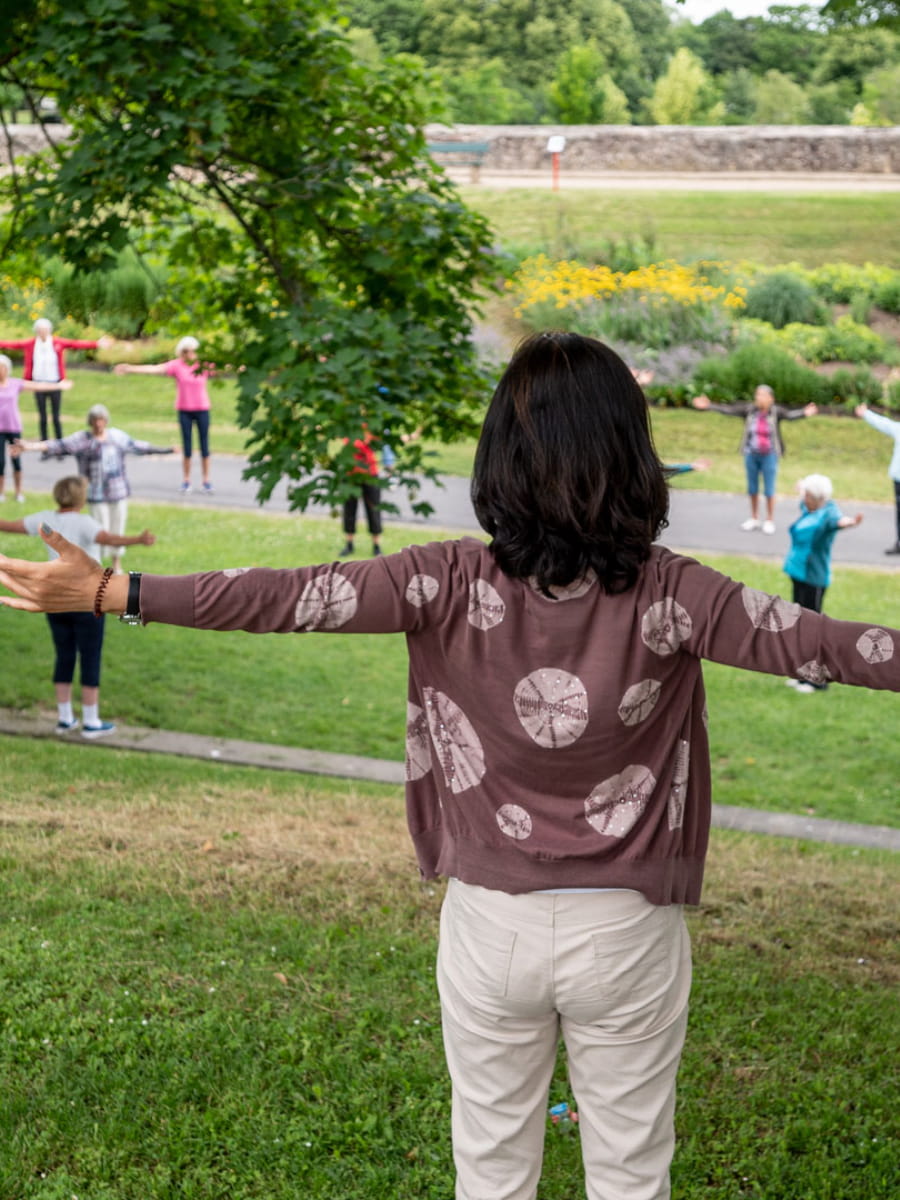
Practical tip. I discovered that early mornings and weekday afternoons are the quietest times to visit, offering a more tranquil experience. The park is accessible by public transportation, with several bus stops nearby, making it easy to reach without a car.
Seasonal Activities in Mainz
Christmas in Mainz – Christmas Market at Marktplatz
Magical atmosphere. The Historical Christmas Market in Mainz transforms the Marktplatz into a festive wonderland from November 28th to December 23rd, 2025. Set against the backdrop of the 1000-year-old St. Martin’s Cathedral, the market creates a sea of lights with around 100 festively decorated and illuminated stands.
Unique attractions. I was mesmerized by the eleven-meter-high Christmas pyramid at the main entrance and the hand-carved life-sized nativity figures in front of the Gothic chapel. At the lower entrance, 18 handcrafted angel figures rotate on a nine-meter-high musical clock, creating a whimsical display that delights visitors of all ages.
Shopping paradise. Handcraft lovers will find plenty to admire at the artists’ factory, which offers all sorts of handmade pieces. The colorful Renaissance facades of the historical market buildings provide a stunning backdrop as you browse for special handicrafts, handpicked gifts, and festive decorations.
Practical information:
- 2025 Dates: November 28th to December 23rd
- Opening hours: Monday to Thursday and Sunday 11am-8:30pm, Friday and Saturday 11am-9pm
- Location: Marktplatz, Höfchen, and Liebfrauenplatz
Beyond the market. The Christmas spirit extends throughout Mainz with cathedral concerts, matinees, traditional fairy tale performances at the State Theatre, and the popular Christmas card printing in the Gutenberg Museum’s print shop.
Summer Festivals – Johannisnacht and Wine Market
Johannisnacht celebration. From June 20th to 23rd, 2025, Mainz will honor its most famous son, Johannes Gutenberg, with the lively Johannisnacht festival. I love how the entire city center transforms into a buzzing hub of activity, with countless stands offering international and local delicacies, live music on every corner, and thrilling rides.
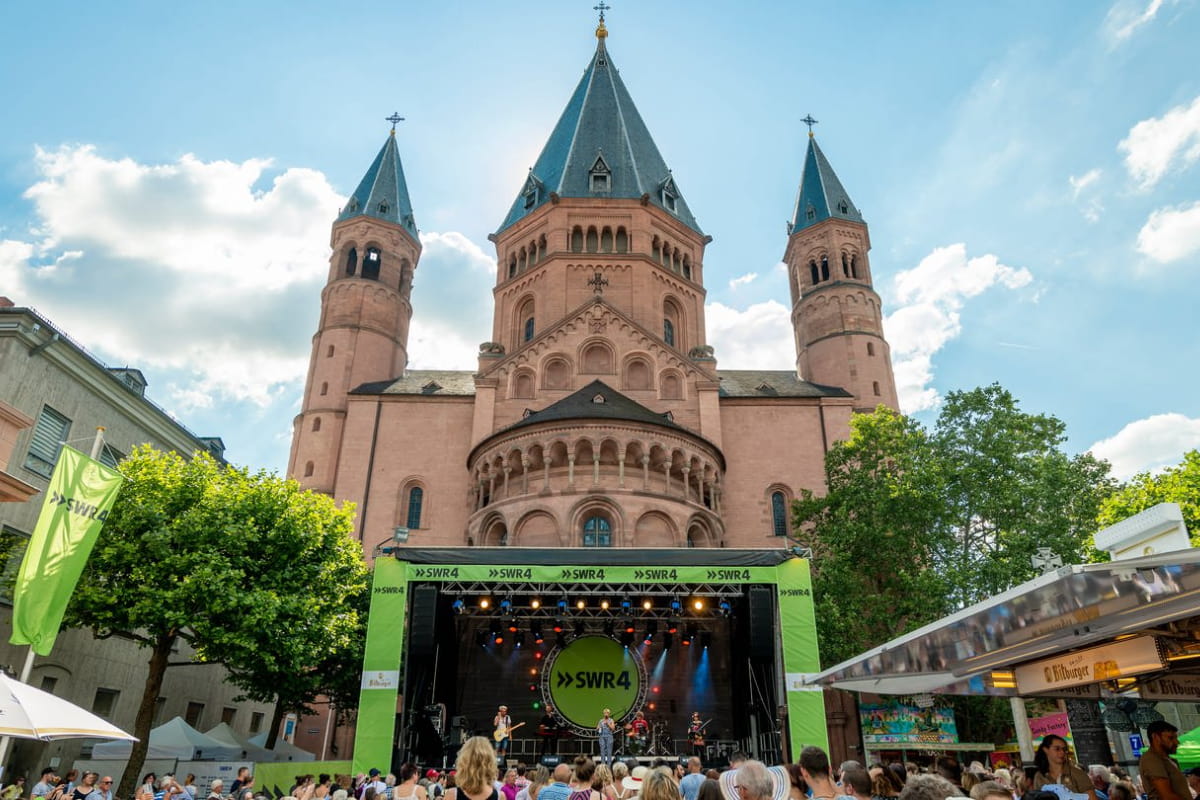
Wine focus. While exploring Johannisnacht, I discovered that wine is the real star of this celebration. ‘Wine villages’ at the cathedral square and Leichhof, plus a cozy wine stand on Bischofsplatz, offer perfect spots to sample local vintages and mingle with Mainz locals.
Mainz Wine Market. Later in summer, from August 28th to September 7th, 2025, the Stadtpark hosts the largest wine festival in Mainz. The spacious green area with its beautiful rose garden provides a romantic backdrop for around 100 exhibitors welcoming approximately 300,000 visitors. I found the vibe changes throughout the day – relaxed picnic atmosphere in the afternoon, lively celebration with live music in the evening.
Wine variety. The Wine Market features vintages from Mainz, Rheinhessen, Rheingau, and Nahe regions. Don’t miss the sparkling wine festival in the rose garden or the artist market for unique handicrafts.
Spring – Cherry Blossoms in Kirschgarten
Historical beauty. Kirschgarten (Cherry Orchard) is one of Mainz’s most picturesque squares, lined with three-and-a-half-story half-timbered houses dating back to the 15th and 18th centuries. In spring, this medieval gem becomes even more magical when cherry blossoms burst into bloom.
Picture-perfect scene. I found early April to be the best time to witness the delicate pink cherry blossoms that give this square its name. The contrast between the soft pink flowers and the ancient half-timbered buildings creates a photographer’s dream and a peaceful spot to appreciate spring’s arrival.
Cultural significance. The name “Kirschgarten” stems from the “Kirschborn” spring that once rose near the old Rochus Hospital. At the heart of the square stands the Cherry Orchard Fountain (Madonna Fountain), crafted from red sandstone and crowned with a statue of the Virgin Mary.
Spring exploration. While the cherry blossoms are the highlight, spring is also perfect for exploring the narrow alleys connecting the half-timbered houses and searching for historical inscriptions on the buildings. The square offers a beautiful reminder of Mainz’s medieval history.
Autumn – Wine Tasting Events Along the Rhine
Ingelheim Red Wine Festival. From September 27th to October 5th, 2025, the nearby town of Ingelheim hosts its famous Red Wine Festival. Set on the grounds surrounding a medieval castle and church, this event showcases the latest vintages from Germany’s red wine capital. I particularly enjoyed sampling the elegant Spätburgunder (Pinot Noir) while watching the crowning of the Red Wine Queen.
Rhine in Flames. On September 13th in Oberwesel and September 20th in St. Goar, the Rhine in Flames festival creates a spectacular autumn experience. Castles, fortresses, and ruins along the Rhine are illuminated in colorful lights, with spectacular fireworks reflecting on the river. Wine markets and local food stands line the banks, creating a perfect autumn evening.
Mainz wine taverns. Autumn is the ideal time to explore Mainz’s traditional wine taverns (Weinstuben). I discovered places like Weinhaus Wilhelmi near the town hall, one of the oldest wine taverns in Mainz, offering authentic local wines paired with hearty autumn dishes perfect for the cooler weather.
Harvest atmosphere. The autumn wine events celebrate the grape harvest season, with many vintners offering their newest wines for tasting. The golden autumn light on the Rhine creates a magical backdrop for these wine-focused celebrations that showcase the region’s rich viticultural heritage.
Day Trips from Mainz
1. Rhine River Cruise – Castles and Lorelei Rock
Romantic journey. A Rhine River cruise is the perfect day trip from Mainz, taking you into the heart of Middle Europe where stately castles, fairytale villages, and cultural centers have witnessed centuries of history. I boarded my cruise in Mainz and was immediately captivated by the stunning landscapes unfolding along the riverbanks.
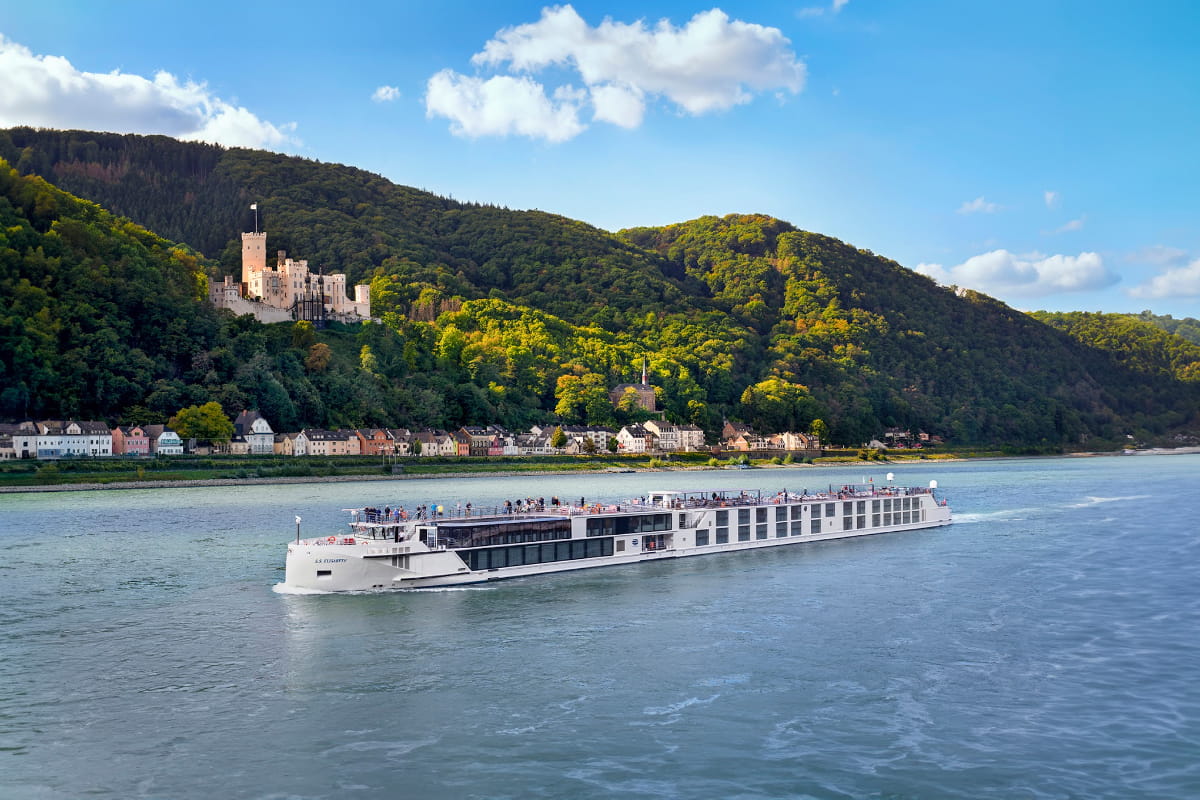
Legendary Lorelei. The highlight of my cruise was passing the famous Lorelei Rock, which sits at the narrowest and deepest section of the Rhine. According to legend, a beautiful maiden threw herself into the river in despair over a faithless lover and was transformed into a siren who lured fishermen to destruction with her enchanting song. Thankfully, our captain wasn’t enchanted as we safely navigated this dramatic section of the river.
Castle spotting includes:
- Marksburg Castle perched above scenic Braubach
- Stolzenfels Castle near Koblenz
- Numerous castles nestling in famed vineyards
- Ancient ruins and remarkably well-preserved fortresses
Practical information. The most beautiful stretch of the Rhine lies between Koblenz and Rüdesheim, taking about 4 hours to cruise. I recommend standing on the open sun deck for the best views, even if the weather is a bit chilly. Most cruises cost between €60-80 for a day trip, with discounts often available for advance bookings.
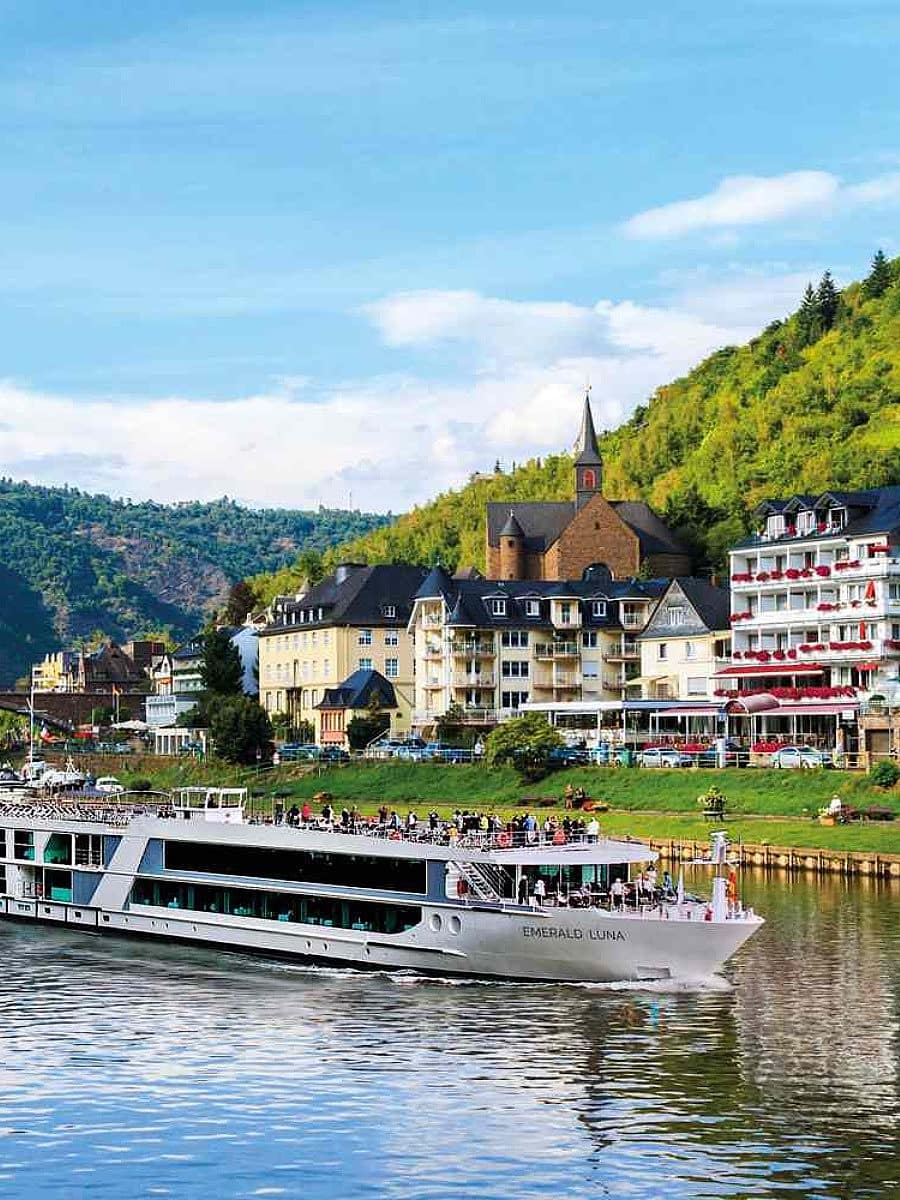
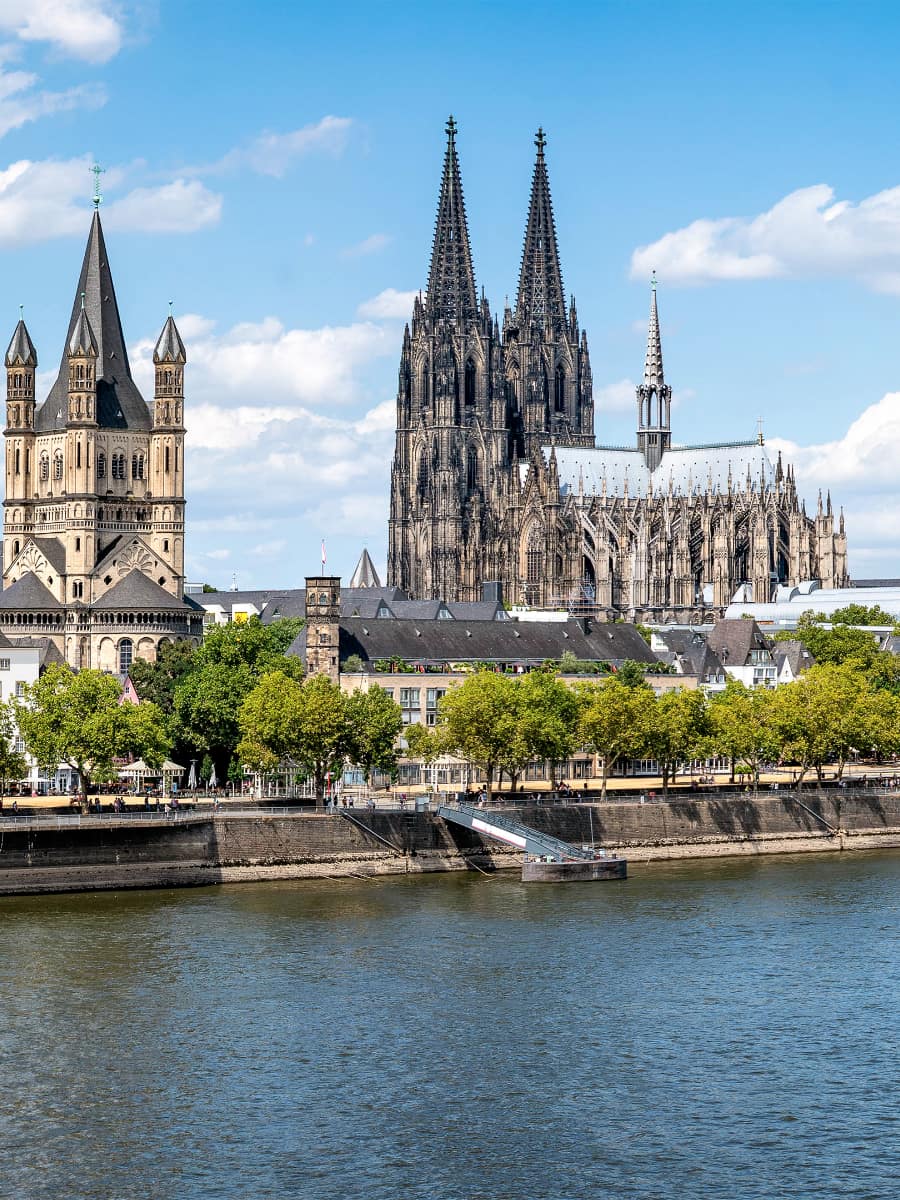
Cultural experience. The cruise ends in the charming town of Rüdesheim, where I explored the narrow streets of the Drosselgasse. This area is lined with half-timber houses, shops, wine cellars, pubs, and restaurants – perfect for sampling local Riesling before returning to Mainz.
2. UNESCO Upper Middle Rhine Valley
World Heritage treasure. The Upper Middle Rhine Valley stretches for 67 kilometers from Bingen to Koblenz and was designated a UNESCO World Heritage site for its outstanding cultural landscape. I was amazed by how this region has evolved over 2,000 years, with human settlements and vineyards harmoniously integrated into the dramatic natural setting.
Exploration options. You can experience this magnificent valley by boat, car, bicycle, or foot. I chose a combination approach – cruising one direction and returning by train to see the landscape from different perspectives. The panoramic views are spectacular along the whole route, with castles standing high on the hills and shoreside hamlets offering plenty of opportunities for rest and exploration.
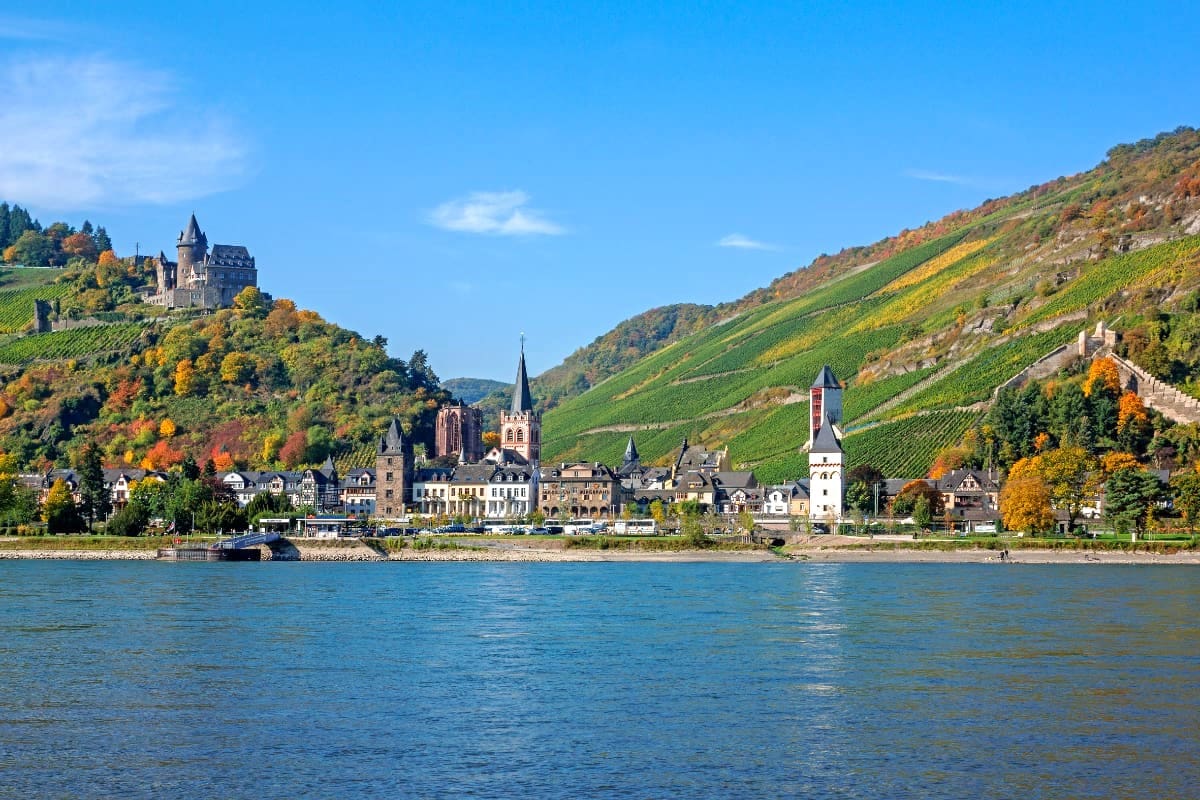
Historical significance. For over two millennia, this stretch of the Rhine has served as an important trade route connecting the Mediterranean to northern Europe. This facilitated cultural exchange that shaped the development of the entire region. The age-old terracing of the hills for growing grapes is particularly evident, showcasing how human society has evolved and shaped this landscape over centuries.
Koblenz highlight. At the northern end of the valley lies the beautiful city of Koblenz, where I took a cable car across the water and up to the impressive Ehrenbreitstein Fortress. The views from this vantage point are simply breathtaking, offering a perfect conclusion to my exploration of this remarkable region.
⭐ Best Activities
- Personal Wine Tours in the Heart of Germany – Embark on a personalized wine tour from Frankfurt to explore the renowned vineyards and wineries in the Rheinhessen region near Mainz.
3. Rheinstein Castle
Romantic reconstruction. Rheinstein Castle is in many ways the original romantic Rhine castle, as it was the first in the region to be rebuilt during the 19th century. Located about 5km west of Bingen, this impressive fortress rises approximately 270 feet above the River Rhine in the Loreley Valley, creating a truly dramatic sight.
Royal residence. I learned that Prince Frederick Wilhelm of Prussia purchased the castle ruins in 1823 and had it reconstructed under the direction of famous architect Claudius von Lassaulx. The castle became a favorite residence of the prince, who hosted many heads of state including Queen Victoria of England and Empress Alexandra Feodorovna of Russia.
Castle highlights include:
- Working drawbridge and portcullis demonstrating medieval defenses
- The “Burgundy Garden” courtyard with its 500-year-old grapevine
- Knight’s Hall with beautiful stained glass windows and 3D paintings
- Gothic chapel with a woodcarving depicting Jesus at the Last Supper
- Royal crypt of Prince Frederick Wilhelm Ludwig’s family
Visitor information. Entry to Rheinstein Castle costs €9.50 per person, with a 20% discount available if you also visit nearby Sooneck Castle on the same day. The castle is open daily from March 15 to November 1, and on weekends during winter months. I recommend allowing about 2 hours to fully explore the castle and enjoy a coffee at the on-site café while taking in the magnificent Rhine views.
Access options. You can reach Rheinstein Castle by train (alight at Trechtingshausen station), by car (limited parking along B9), or as part of a Rhine cruise. From the road or river, a short but steep switchback path leads up to the castle entrance – comfortable walking shoes are essential!
⭐ Best Activities
- Rhein Castles & Regal Riesling. Tasting wine along the Rhein – Indulge in a wine-fueled journey through the UNESCO-listed Rhein Valley and visit the charming Rhein Castle on this small-group excursion. Traverse charming gardens and step into the romantic royalty of the 17th-century castle. Explore quaint wine villages, enjoy a scenic lunch, and, in December, stroll through Christmas markets with a cup of Glühwein.
❓ FAQ about Things to Do in Mainz
What are the top attractions in Mainz?
The top attractions in Mainz include the 1000-year-old Mainz Cathedral (Mainzer Dom), Gutenberg Museum, St. Stephen’s Church with Chagall windows, and the charming Old Town with its half-timbered houses. The Rhine Promenade and Fastnachtsbrunnen (Carnival Fountain) are also must-see attractions that showcase the city’s historic and cultural significance.
How can I get to Mainz from Frankfurt?
Mainz is well-connected to Frankfurt by regional trains that run frequently and take approximately 30 minutes from Frankfurt’s main station. You can also drive from Frankfurt Airport to Mainz in about 25-30 minutes via the A60 motorway, as Mainz is ringed by the Mainz motorway ring for convenient access.
What events in Mainz should I not miss?
Don’t miss Johannisnacht in June, which celebrates Johannes Gutenberg (born in Mainz) with book markets and fireworks over the Rhine. The Mainz Wine Market in the Stadtpark (late August/early September), Mainz Carnival (Fastnacht) in February/March with over 200 figures represented in the Fastnachtsbrunnen, and the Christmas Market at Marktplatz (late November to December) are also essential experiences.
What can I see in Mainz in one day?
One day in Mainz is enough to explore the famous Mainz Cathedral, visit the Gutenberg Museum, wander through the charming Old Town (Altstadt) and Kirschgarten, and enjoy the Rhine Promenade. You can also fit in a visit to St. Stephen’s Church with its stunning blue windows created by Marc Chagall, making for a perfect day trip to this historic city.
Where is the Mainz tourist office located?
The Mainz tourist office (mainz STORE) is located on Marktplatz in the heart of the Old Town, near the cathedral. It’s open Monday through Saturday from 10 am to 6 pm, providing tourist information, booking services, and helpful guidance for visitors to Mainz.
What are the best places to eat in Mainz?
Mainz offers excellent traditional wine taverns (Weinstuben) like Weinhaus Wilhelmi near the town hall, serving local specialties paired with regional wines. The city has plenty of restaurants in the Old Town, riverside cafés along the Rhine Promenade, and the Marktplatz area features numerous eateries where you can sample authentic German cuisine while enjoying the historic atmosphere of this capital of the Rhineland-Palatinate.
What day trips can I take from around Mainz?
From Mainz, you can take a Rhine River cruise to see medieval castles and the legendary Lorelei Rock, a journey through the UNESCO World Heritage Upper Middle Rhine Valley. Visiting Rheinstein Castle, exploring the charming town of Rüdesheim, or taking a wine tour through the surrounding Rheinhessen region are also excellent day trips that showcase the best of medieval Germany and German wine culture.
